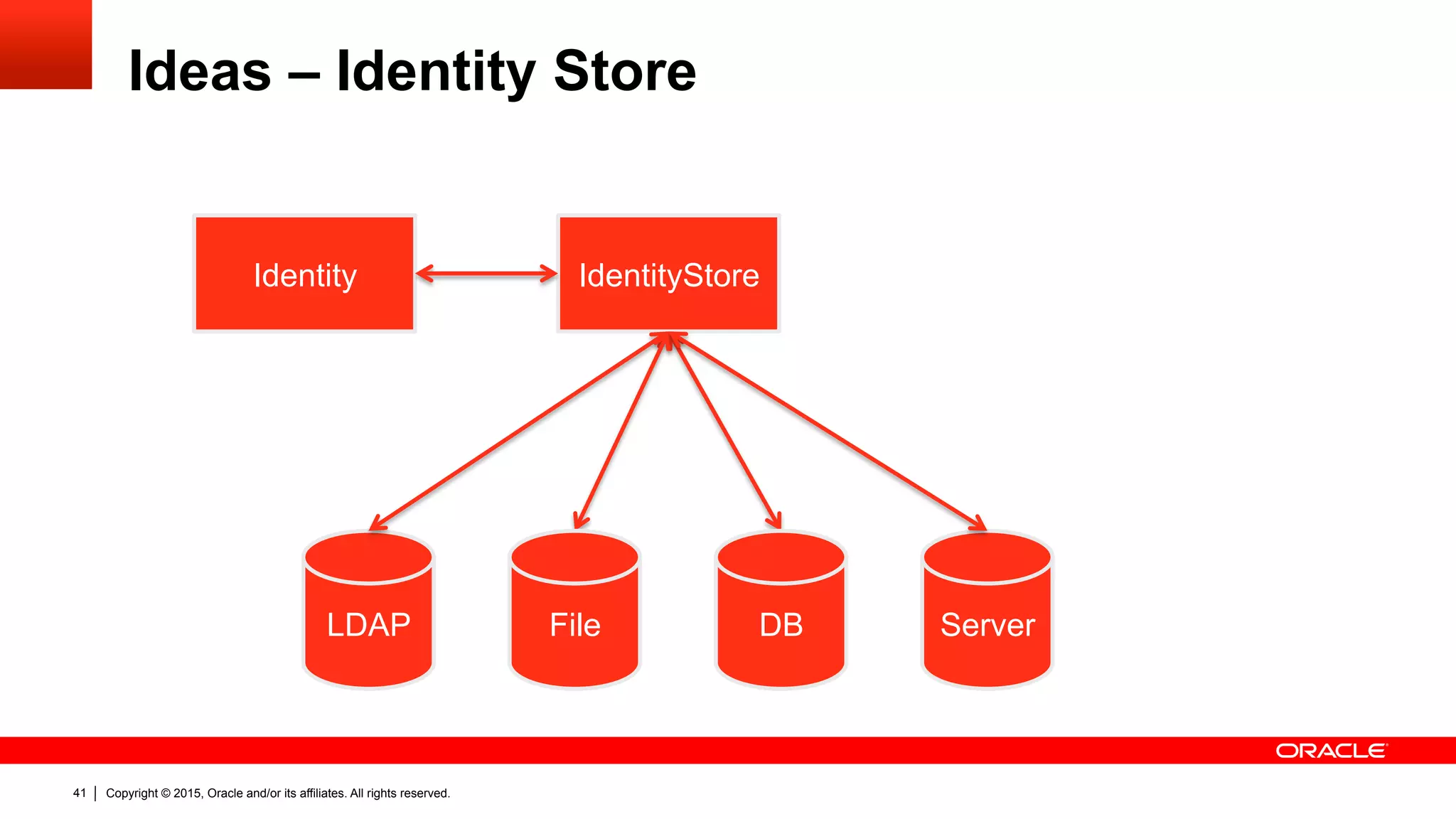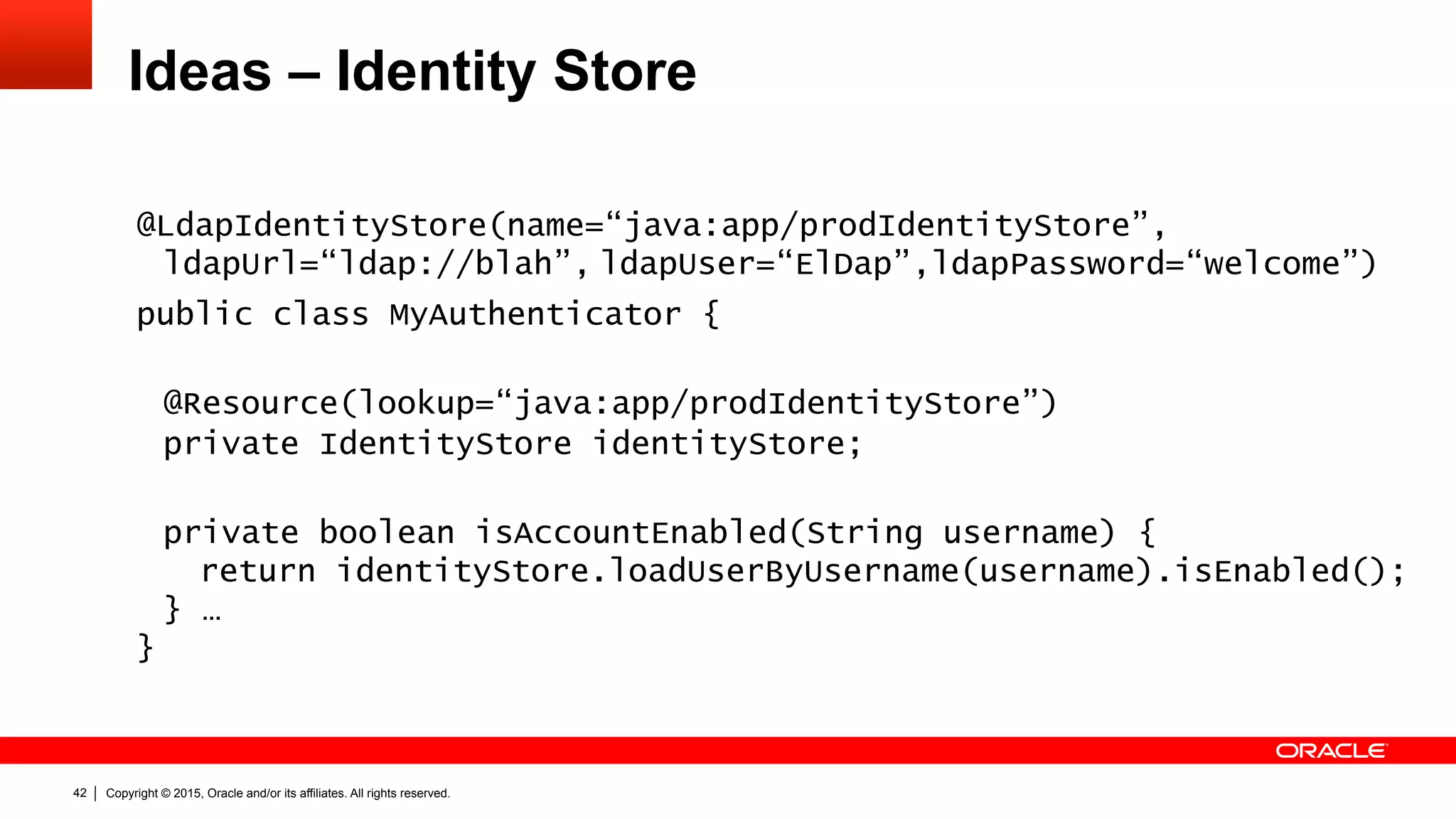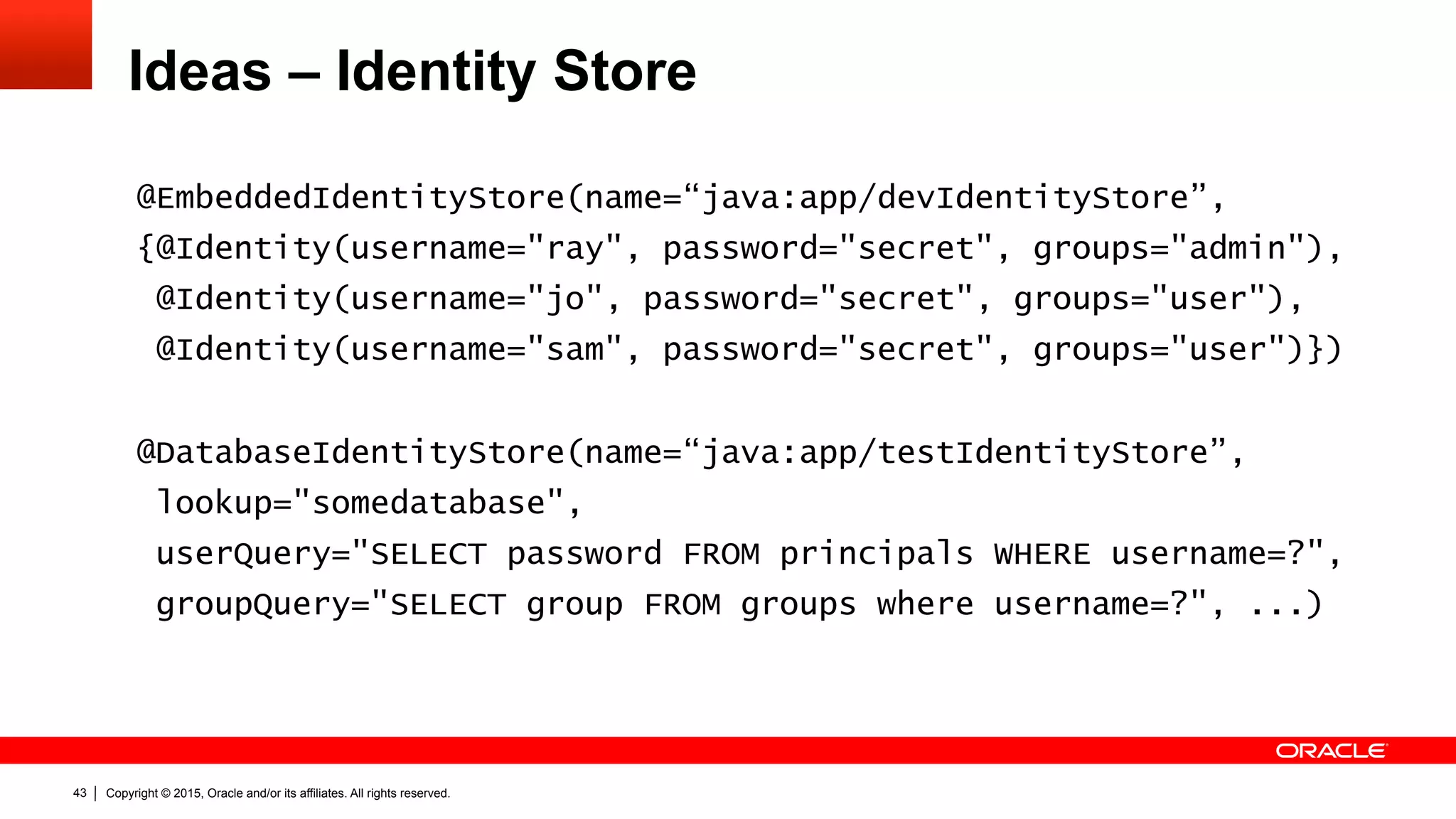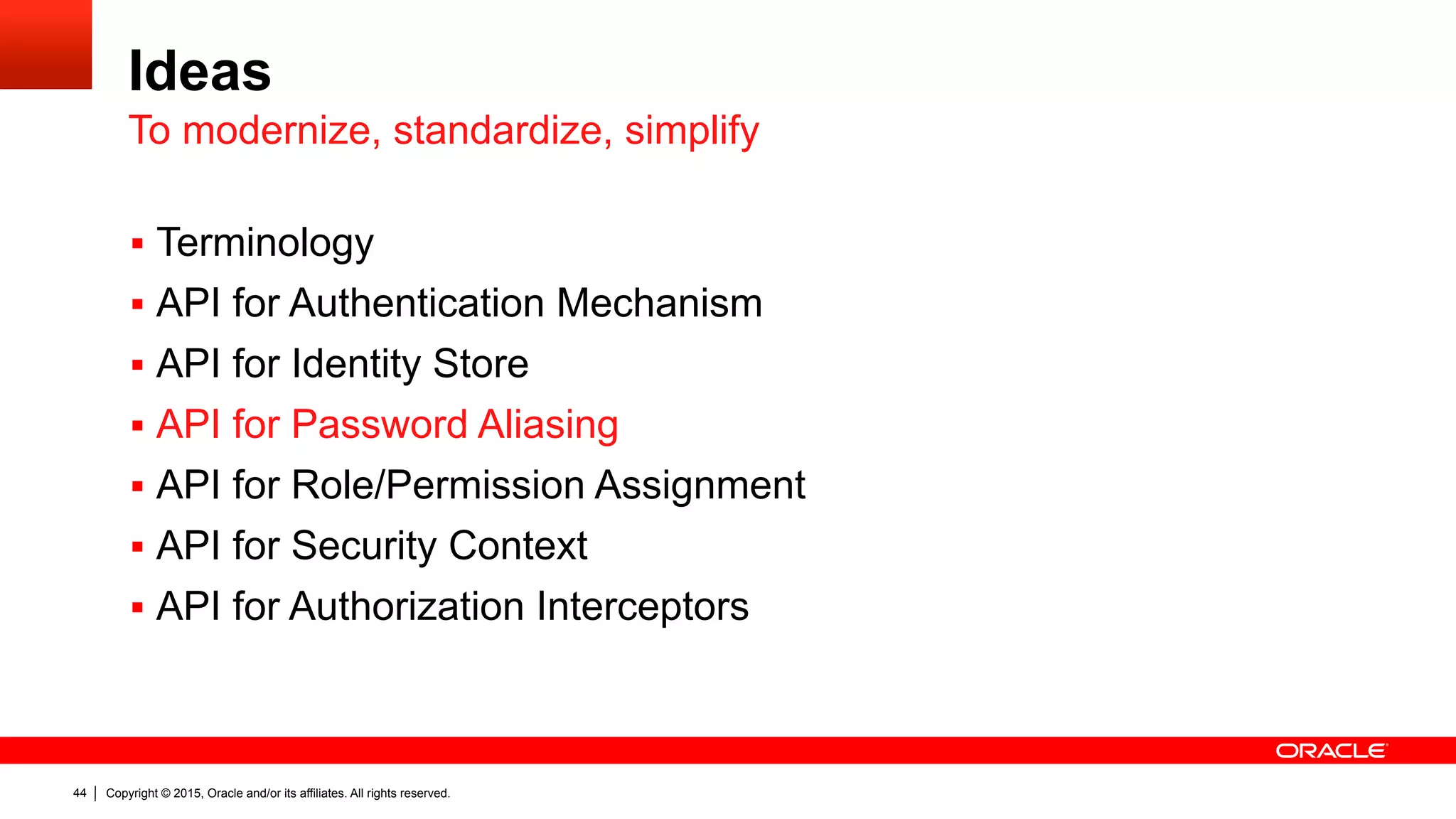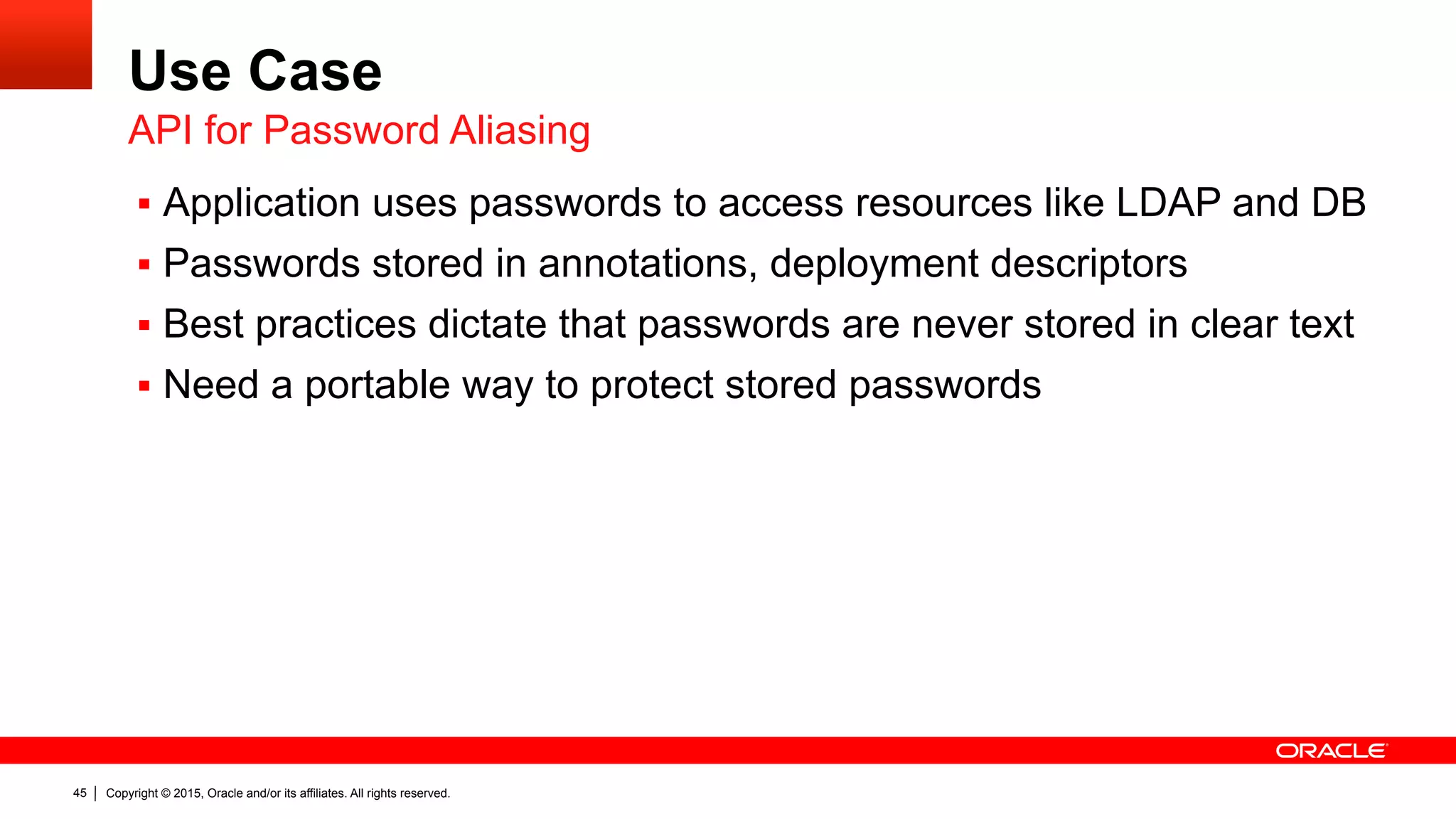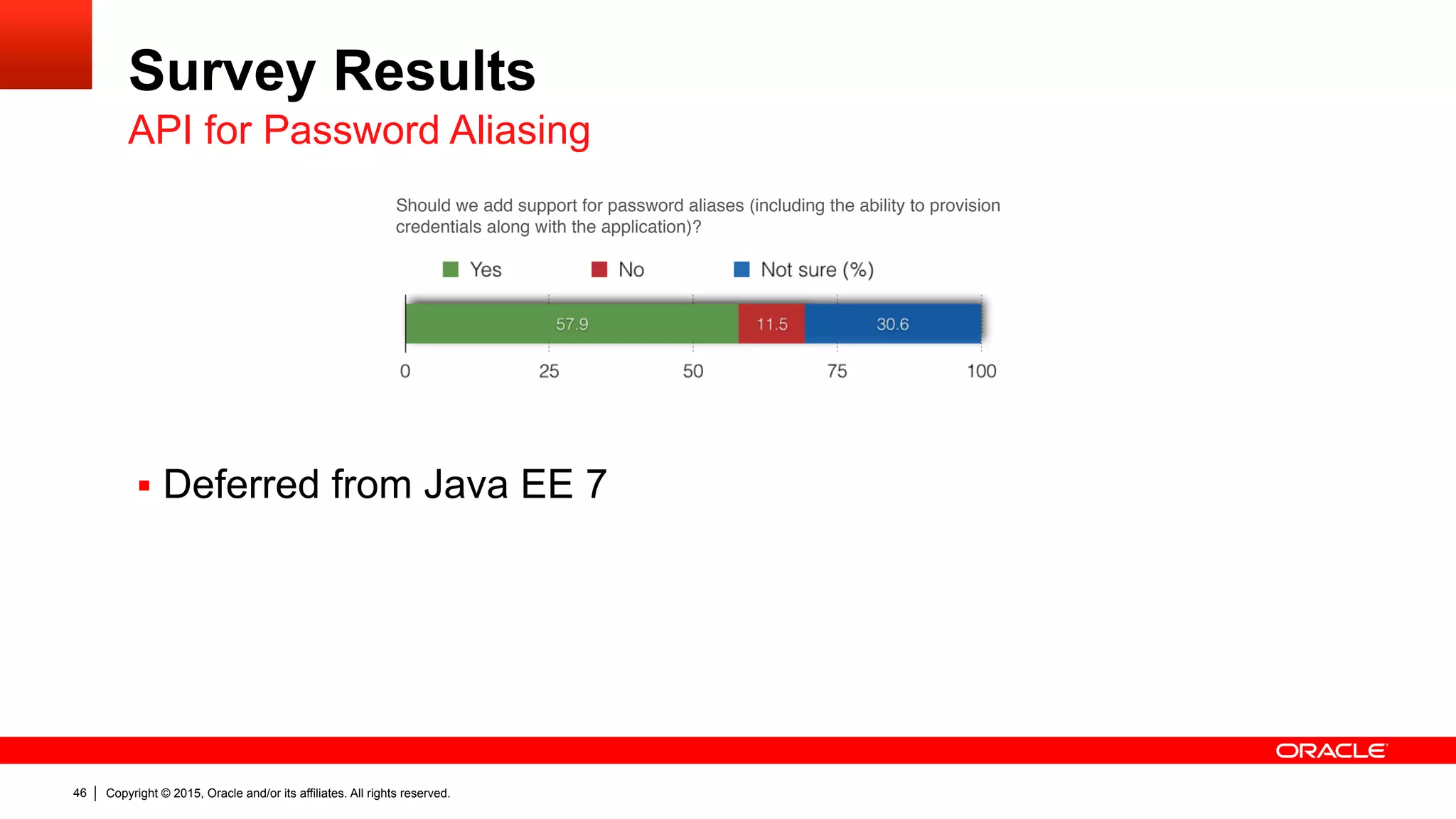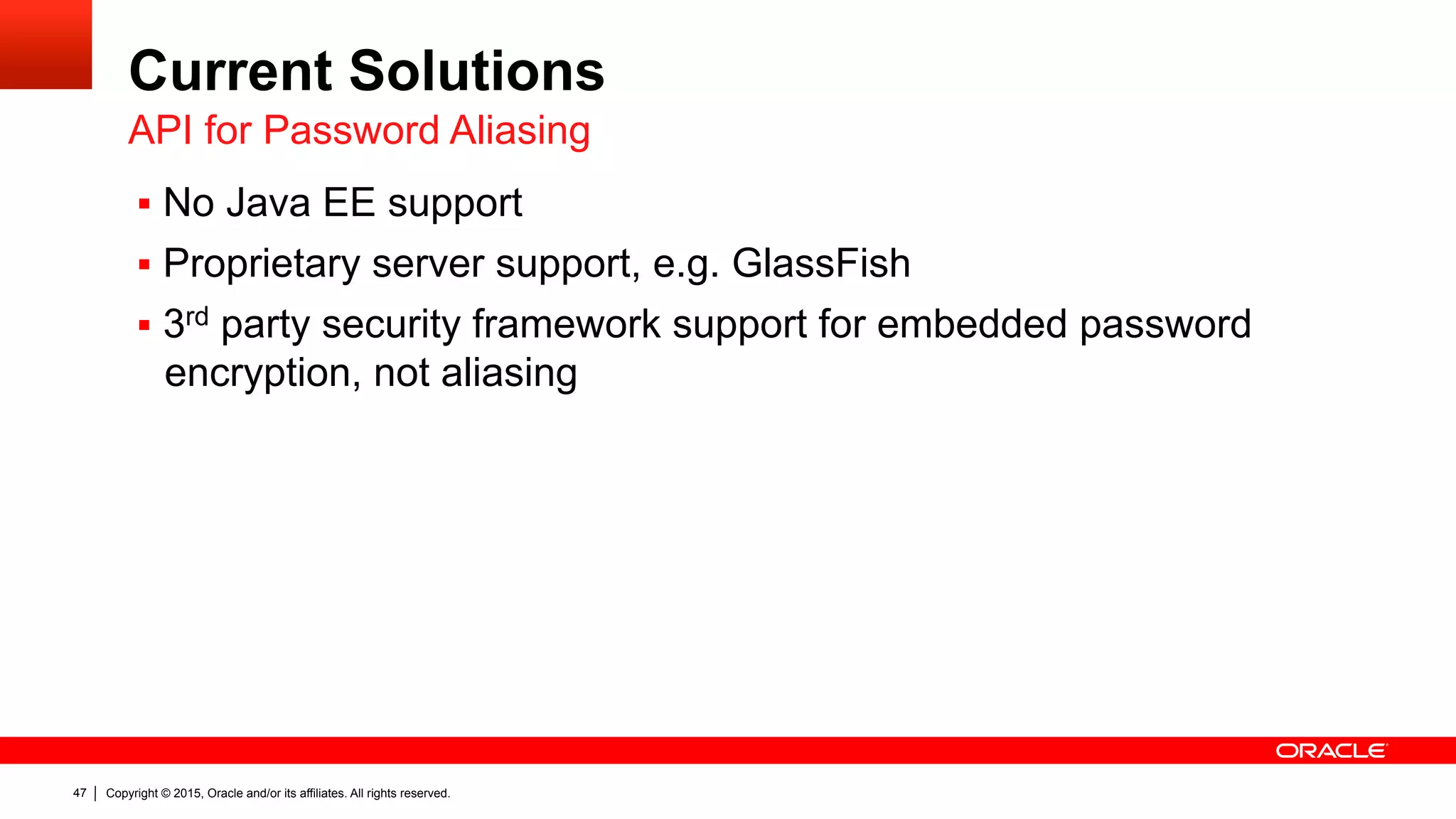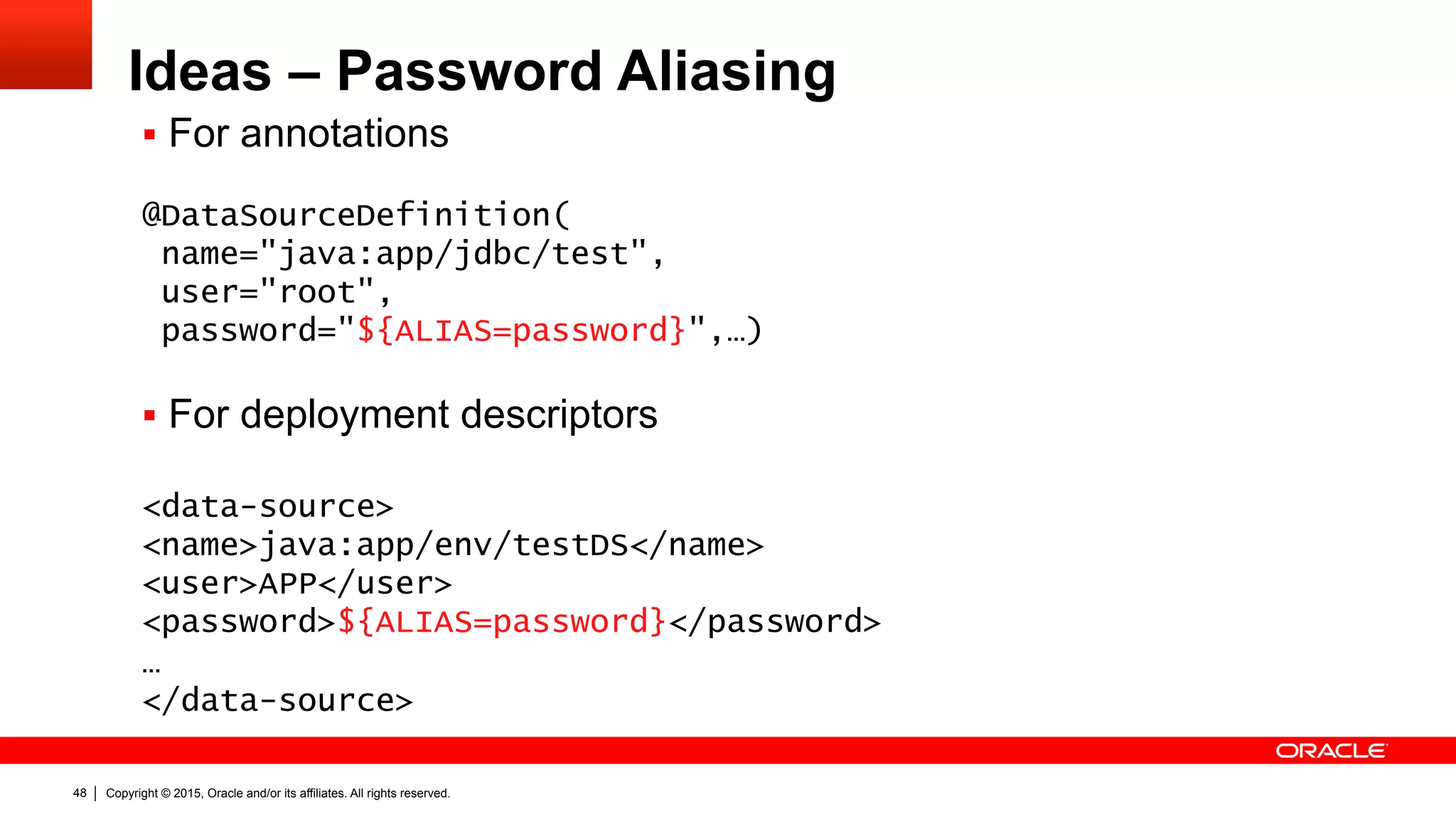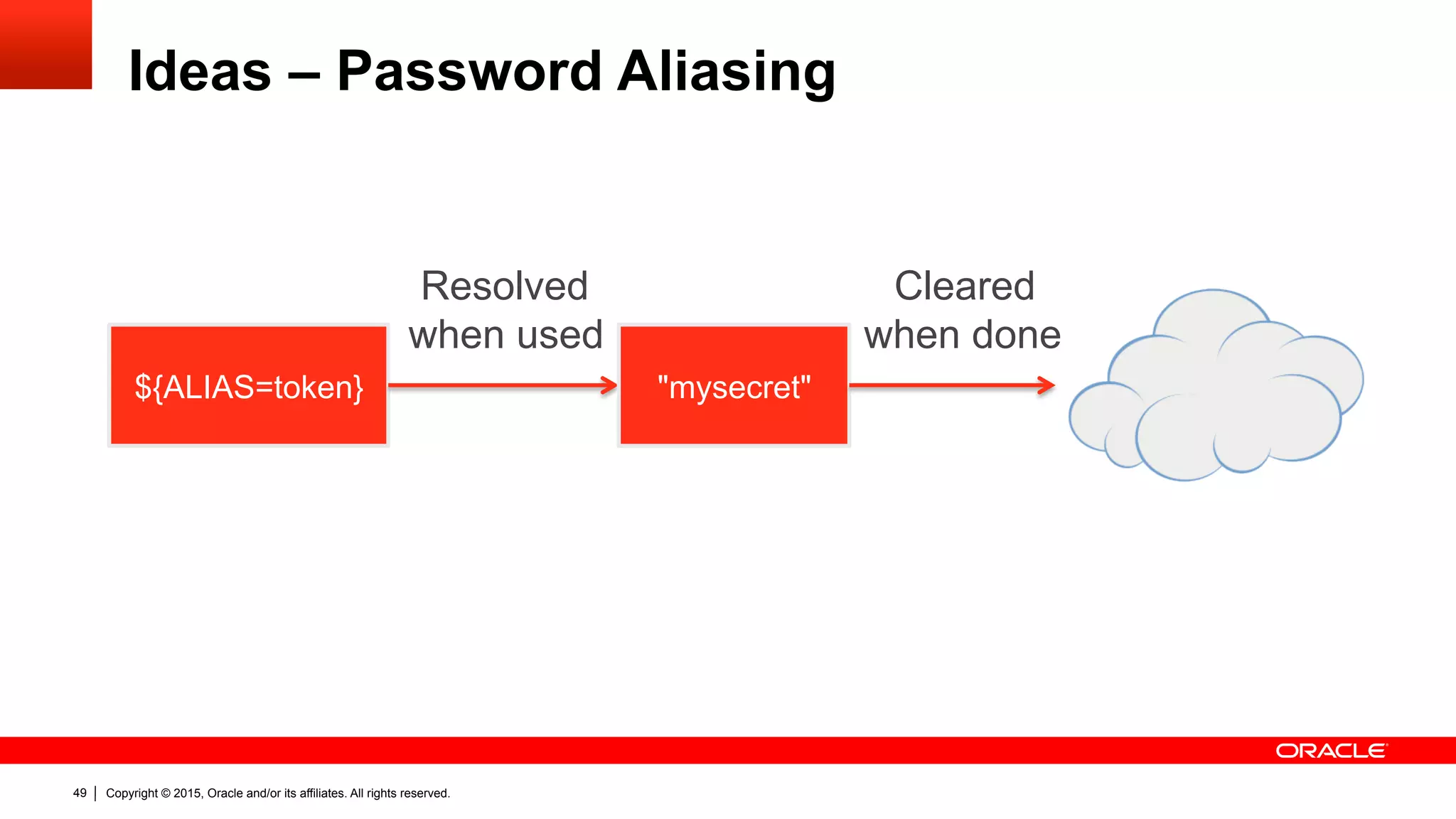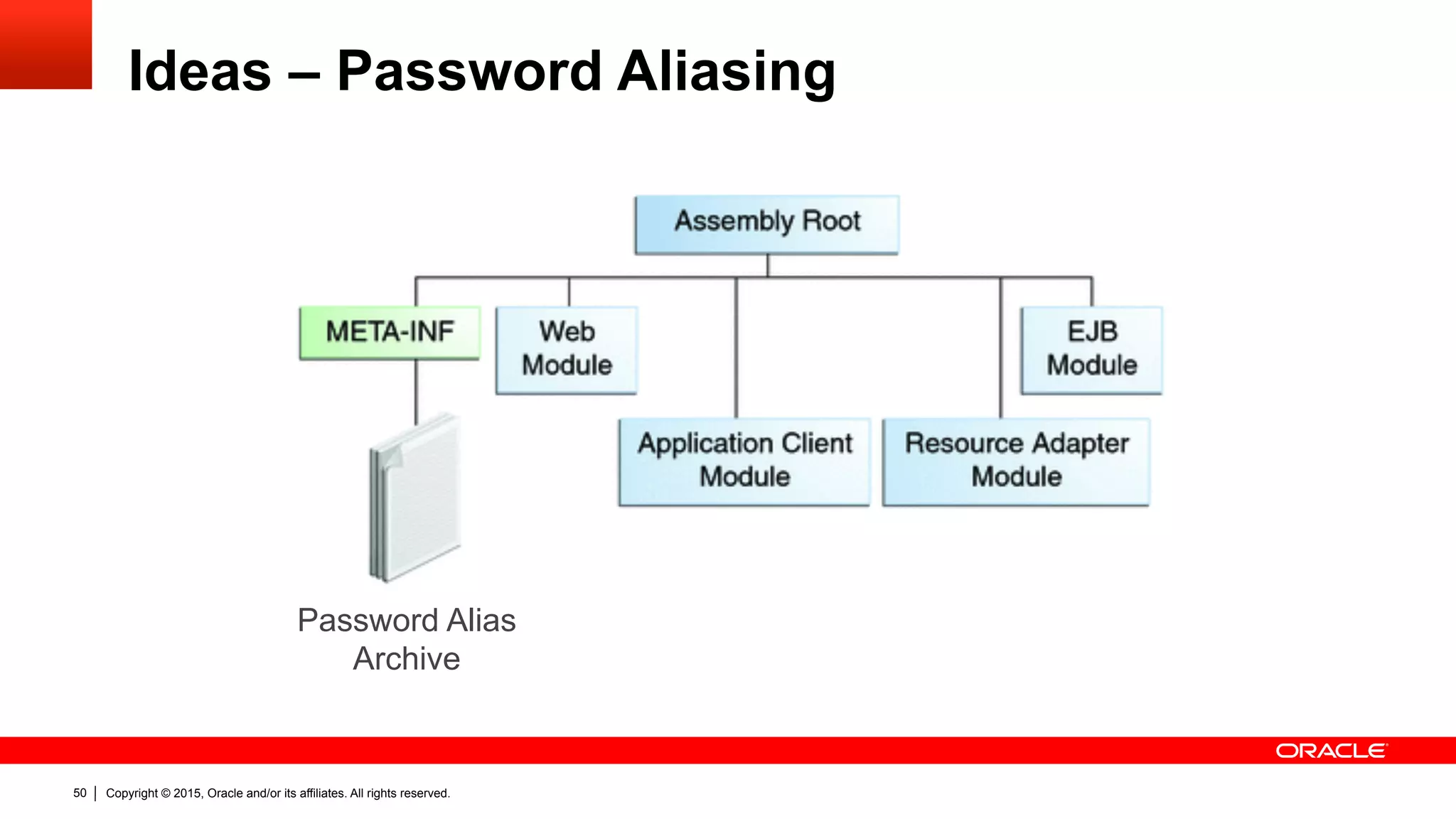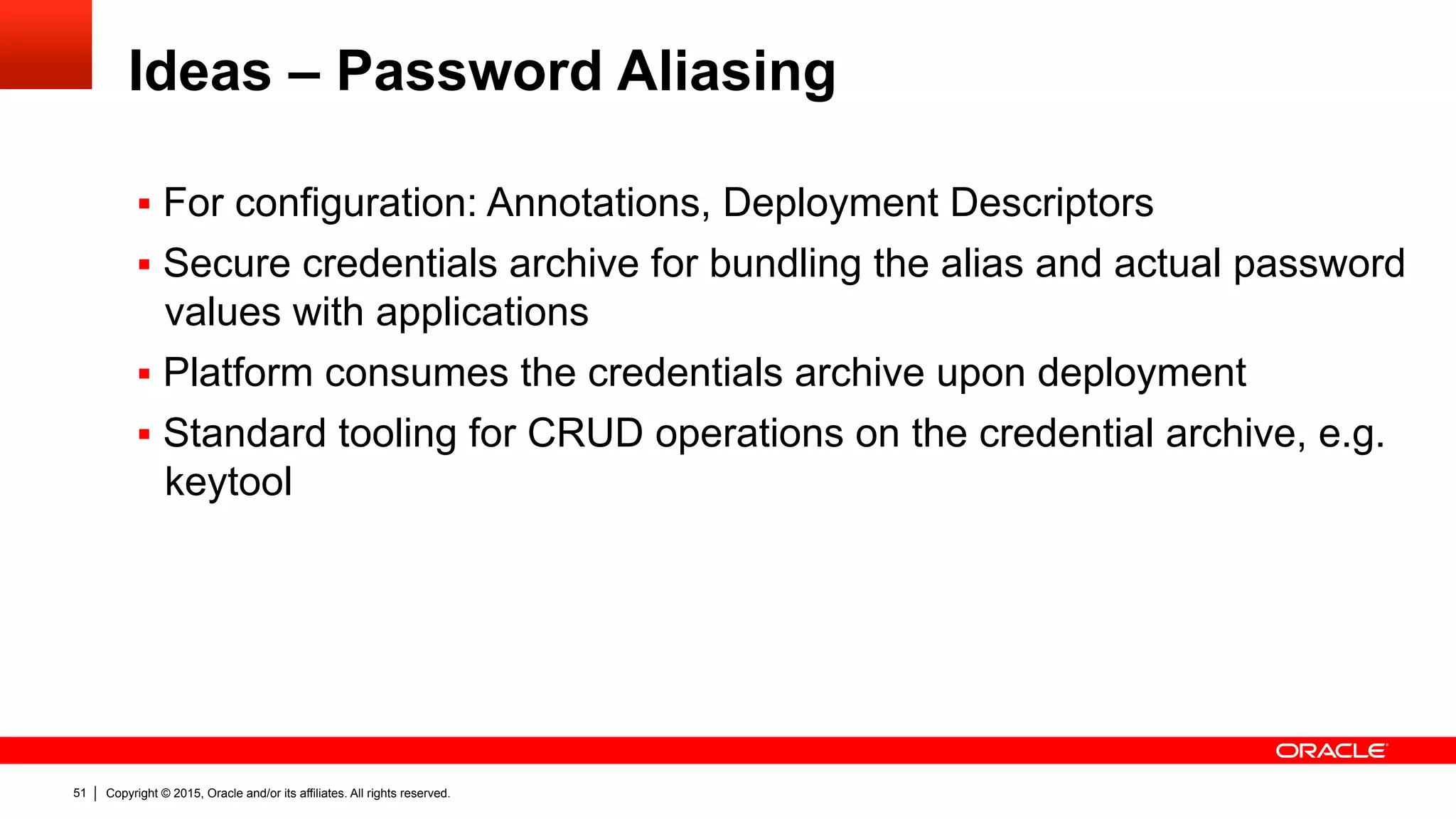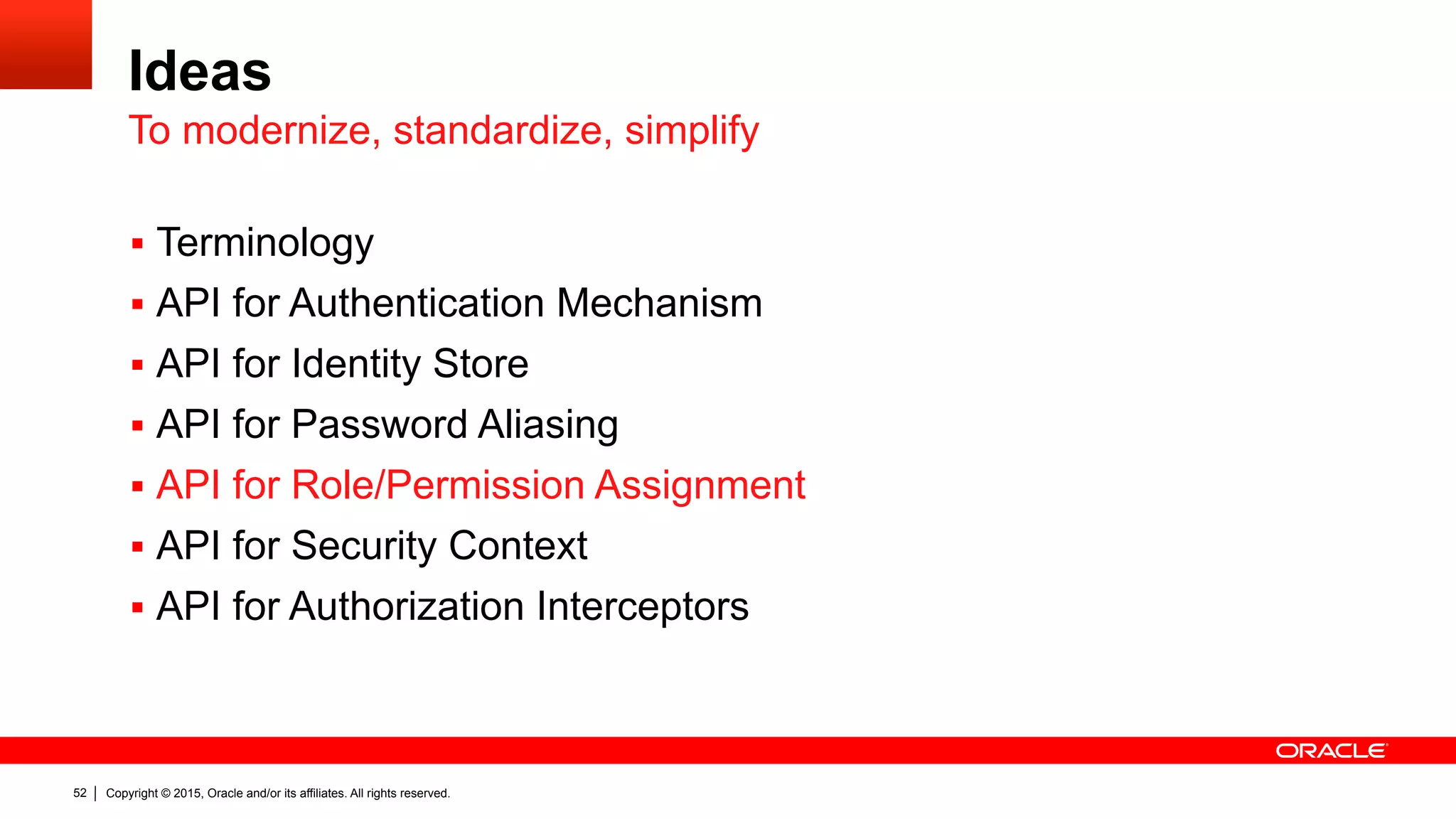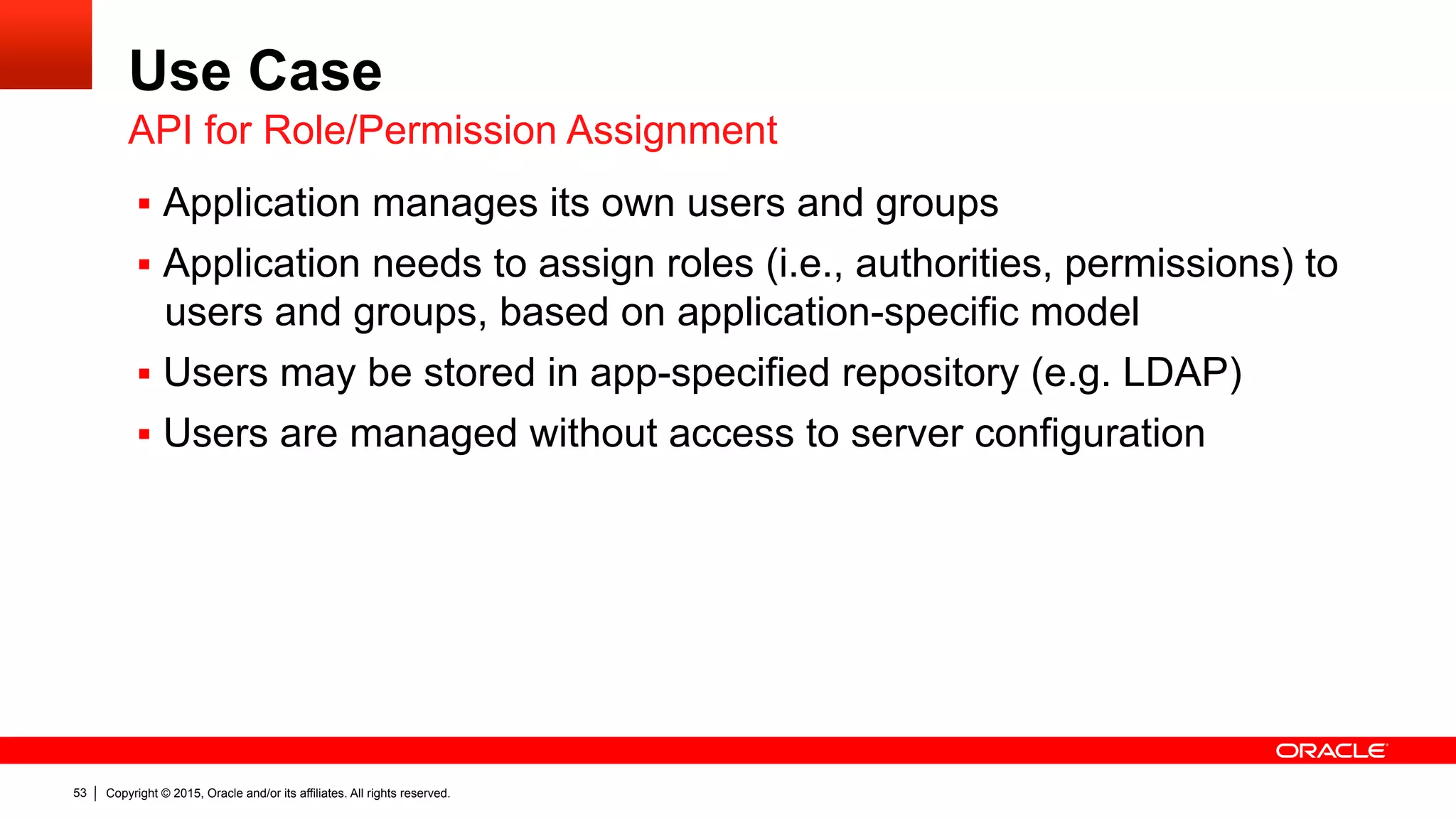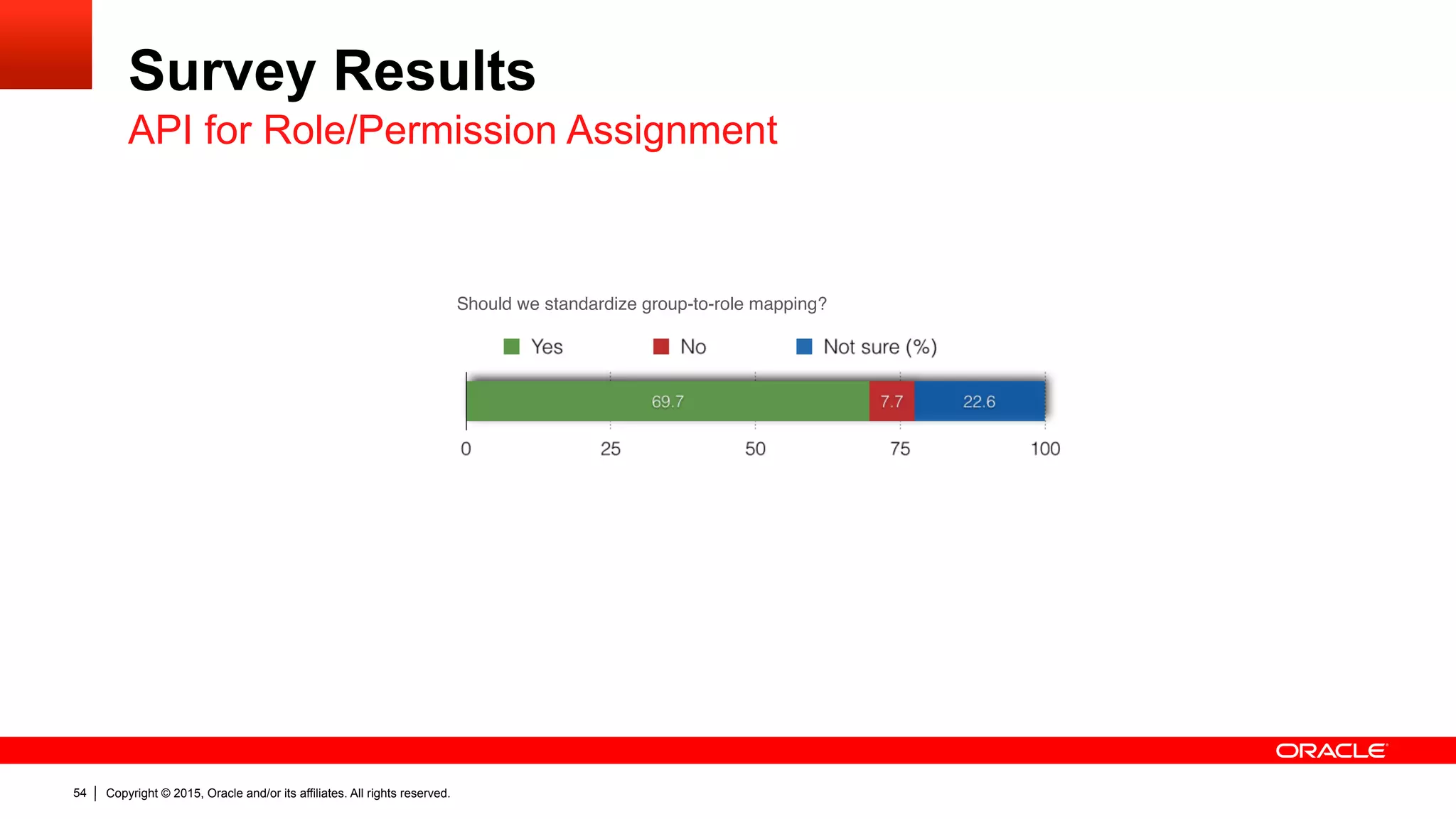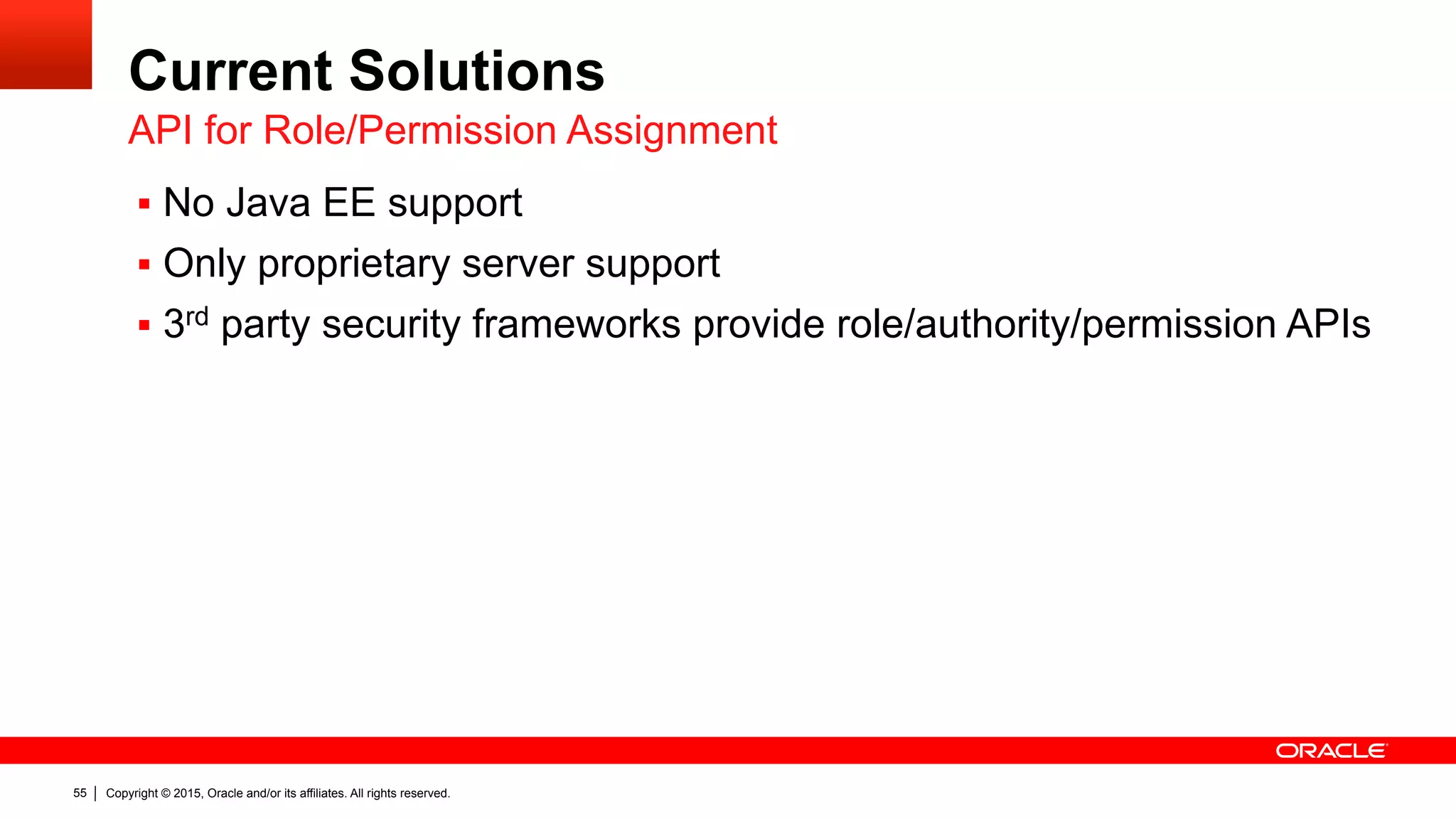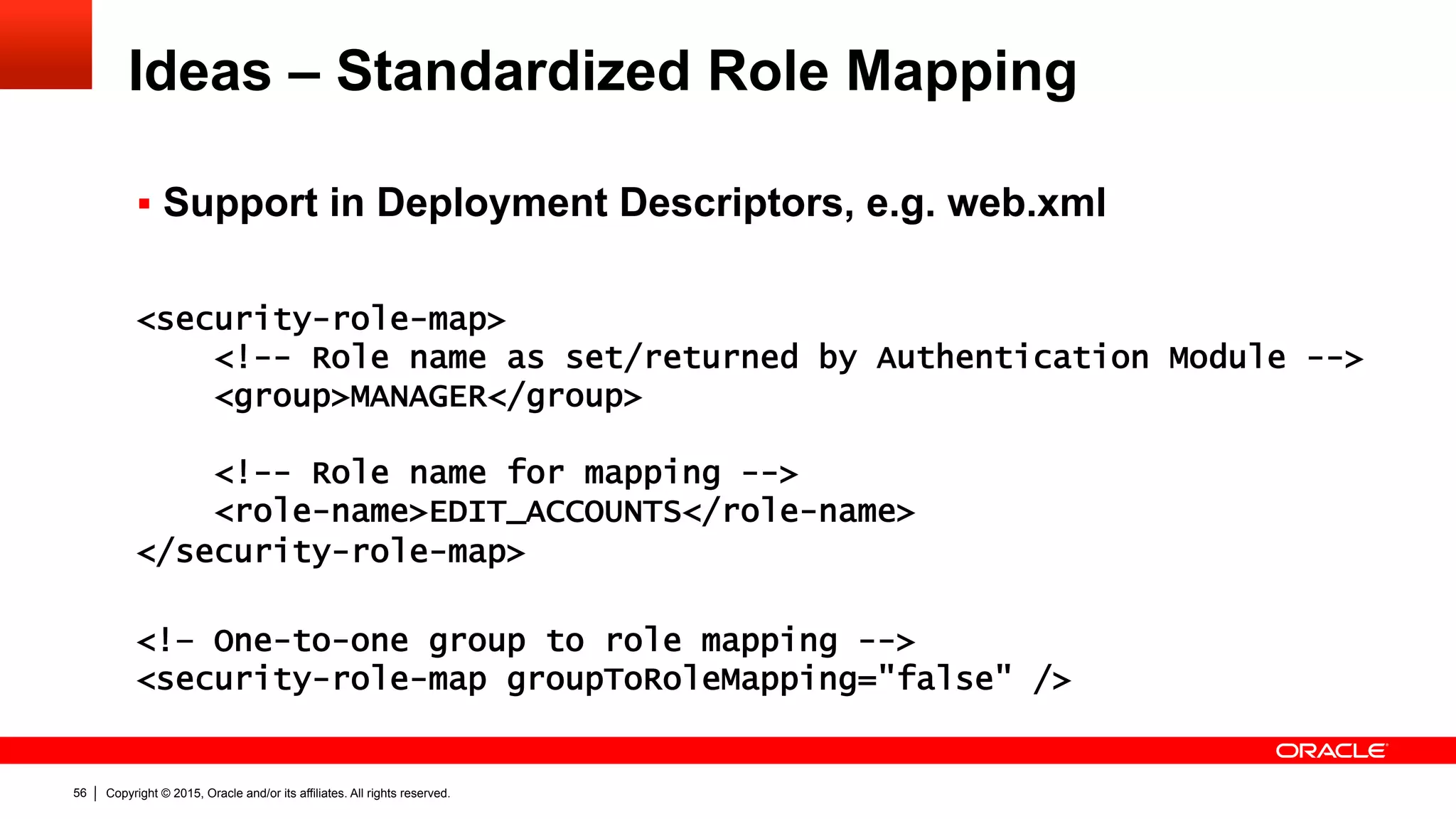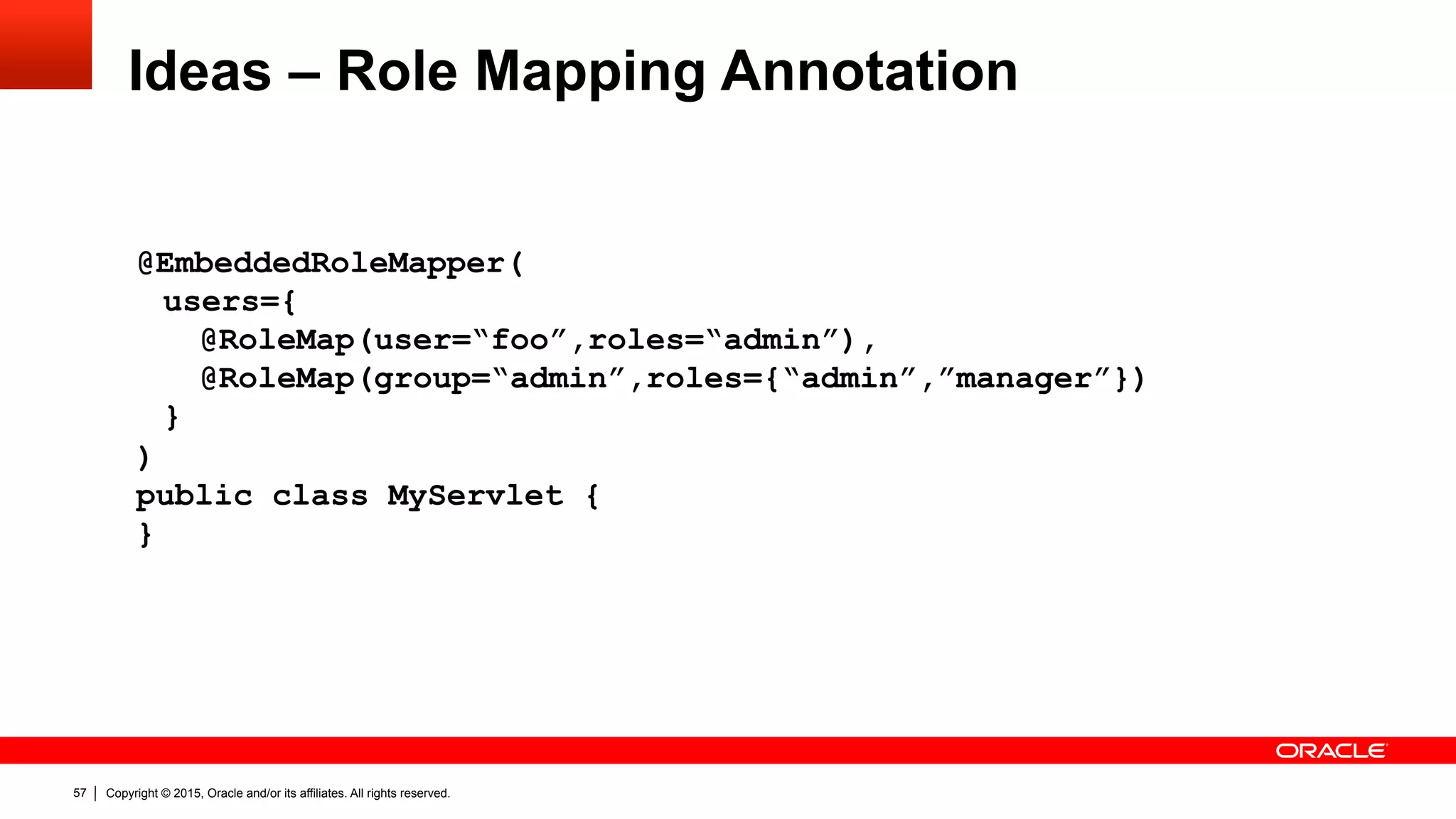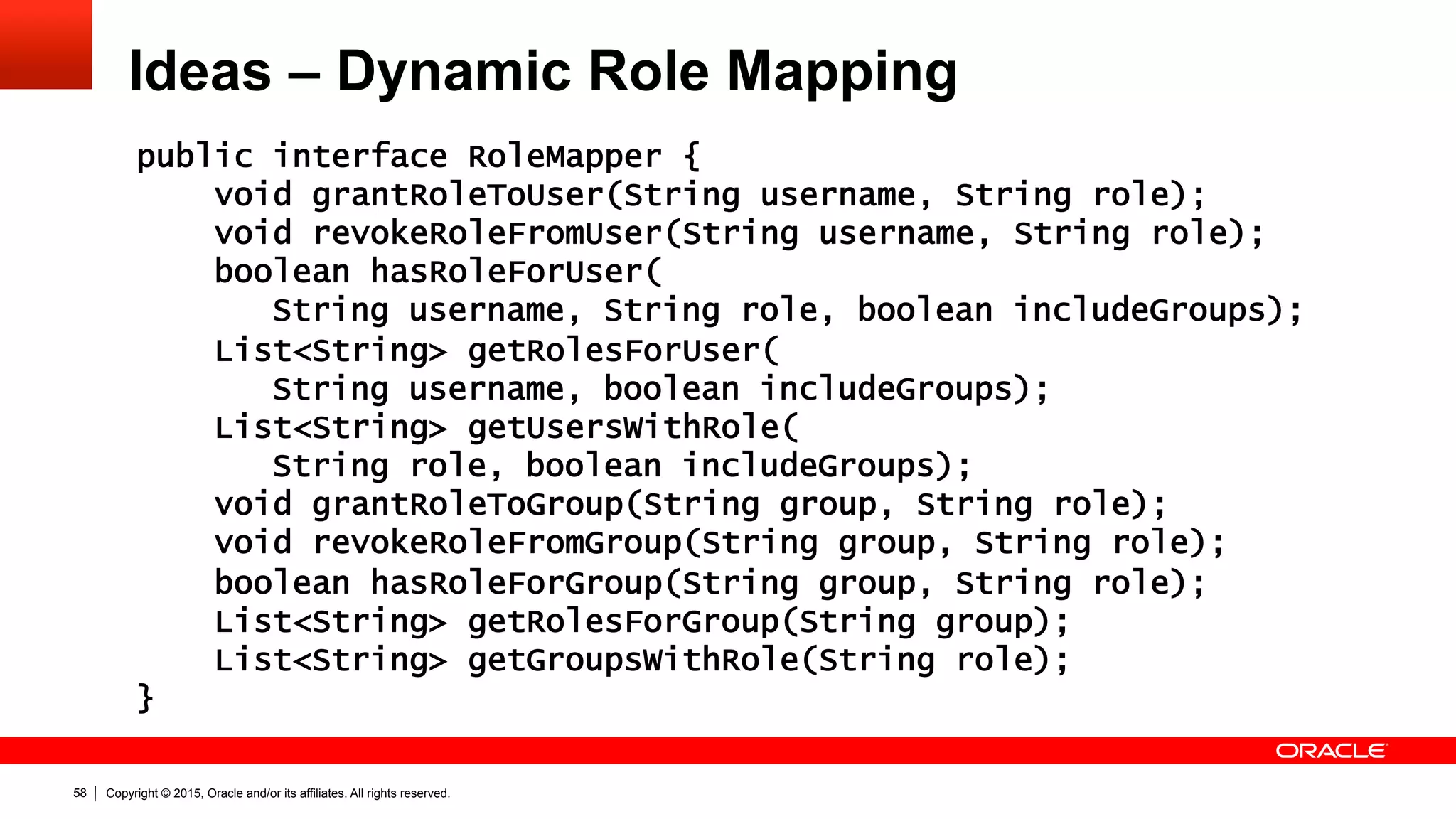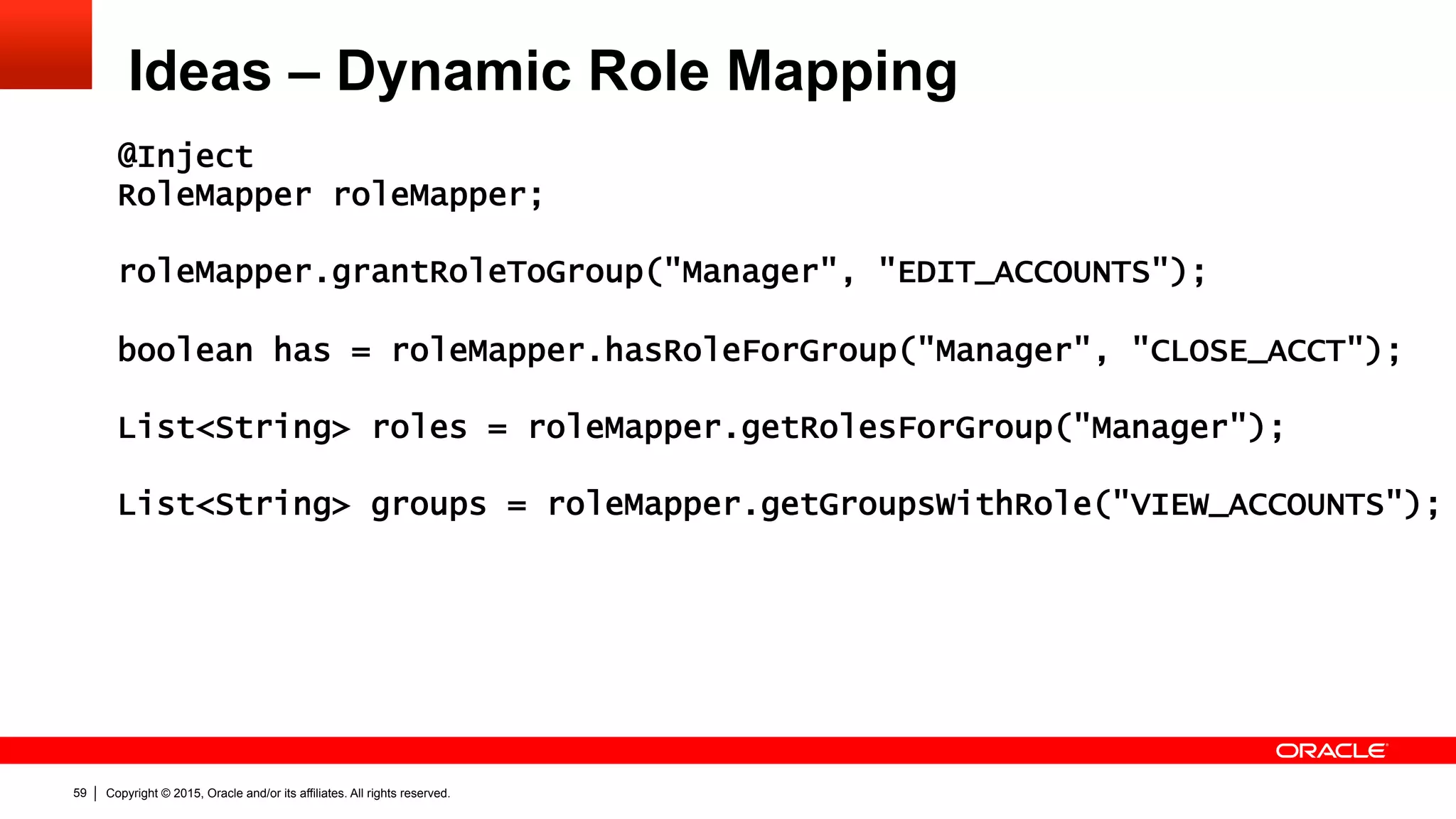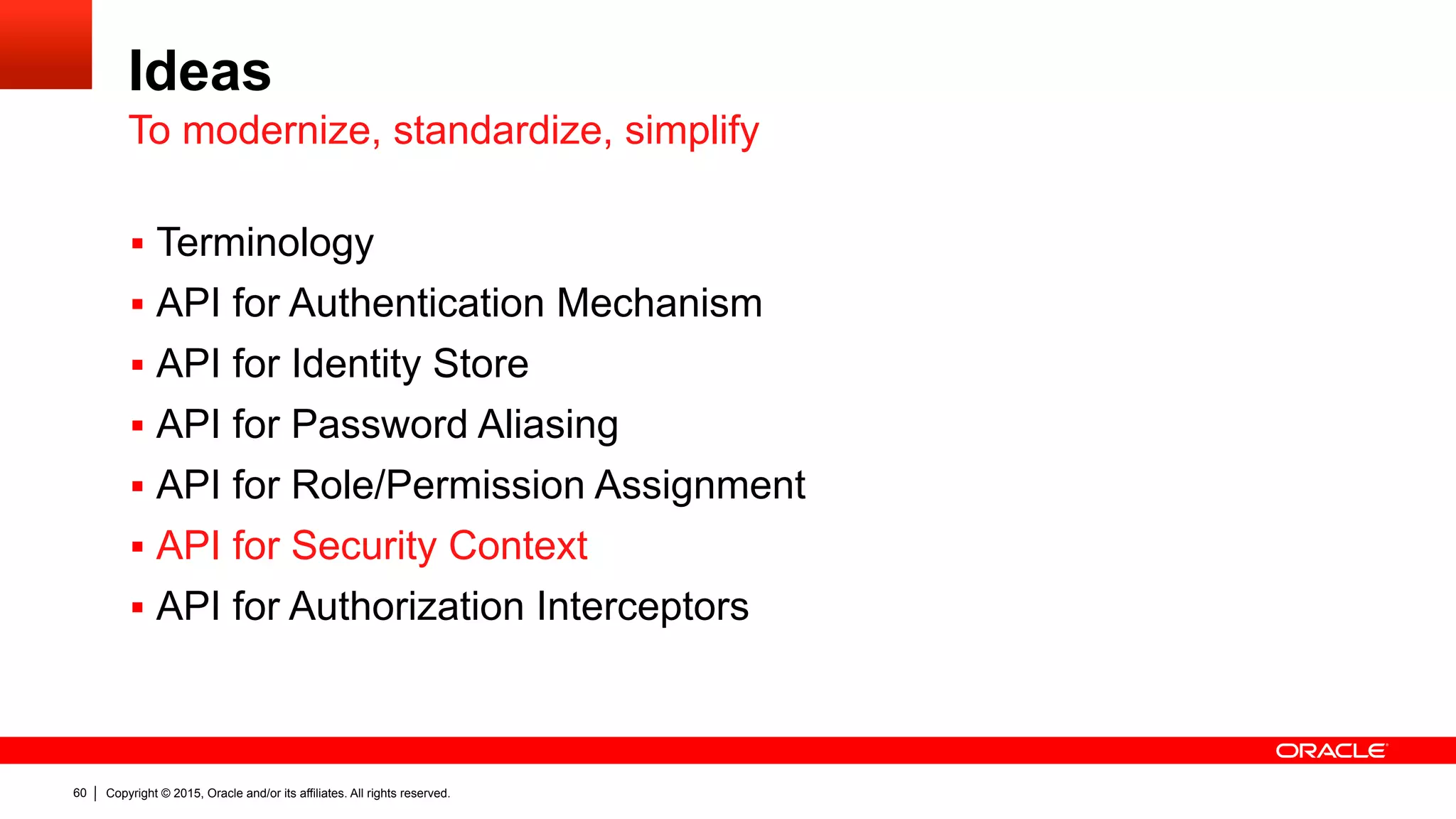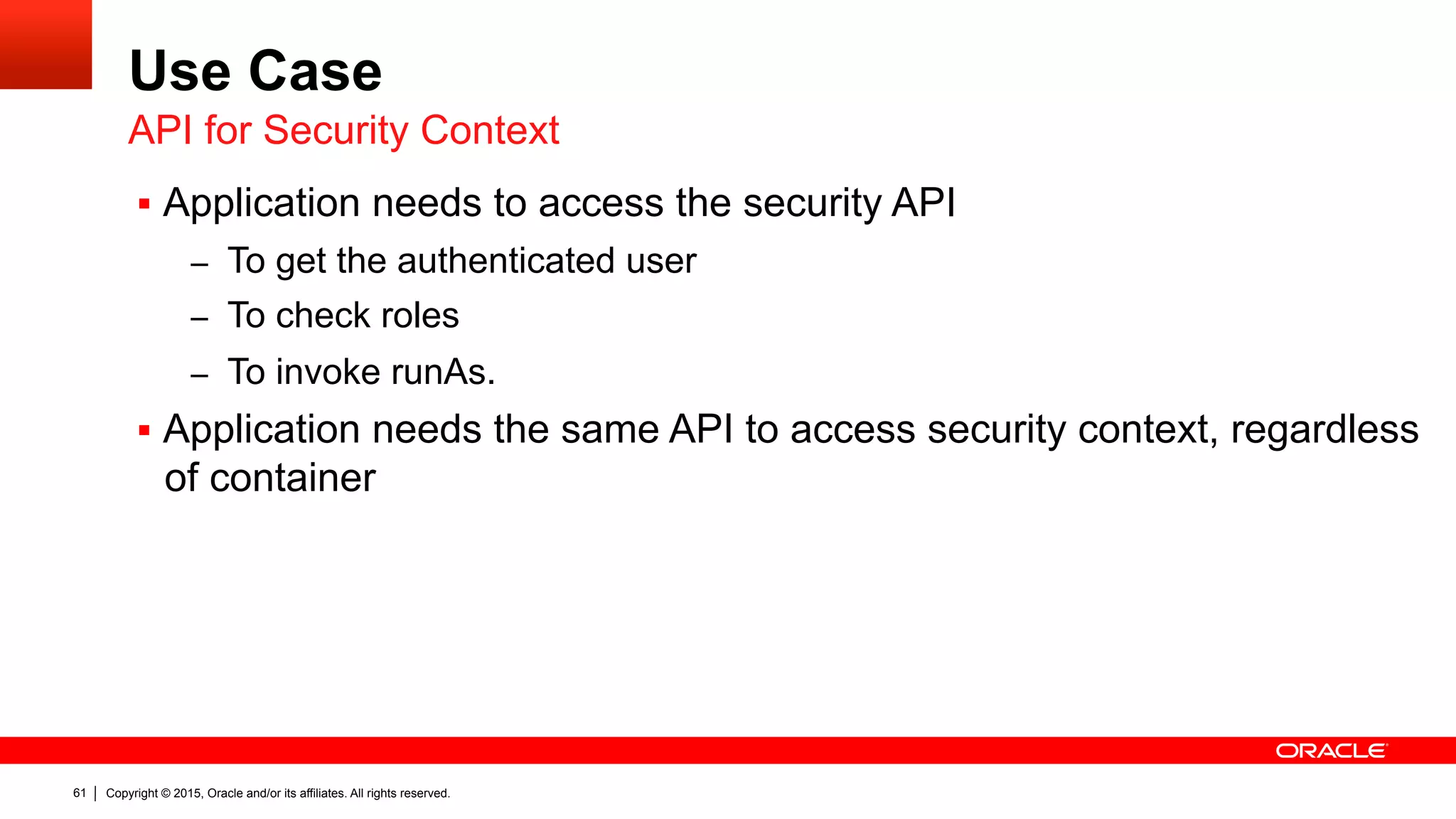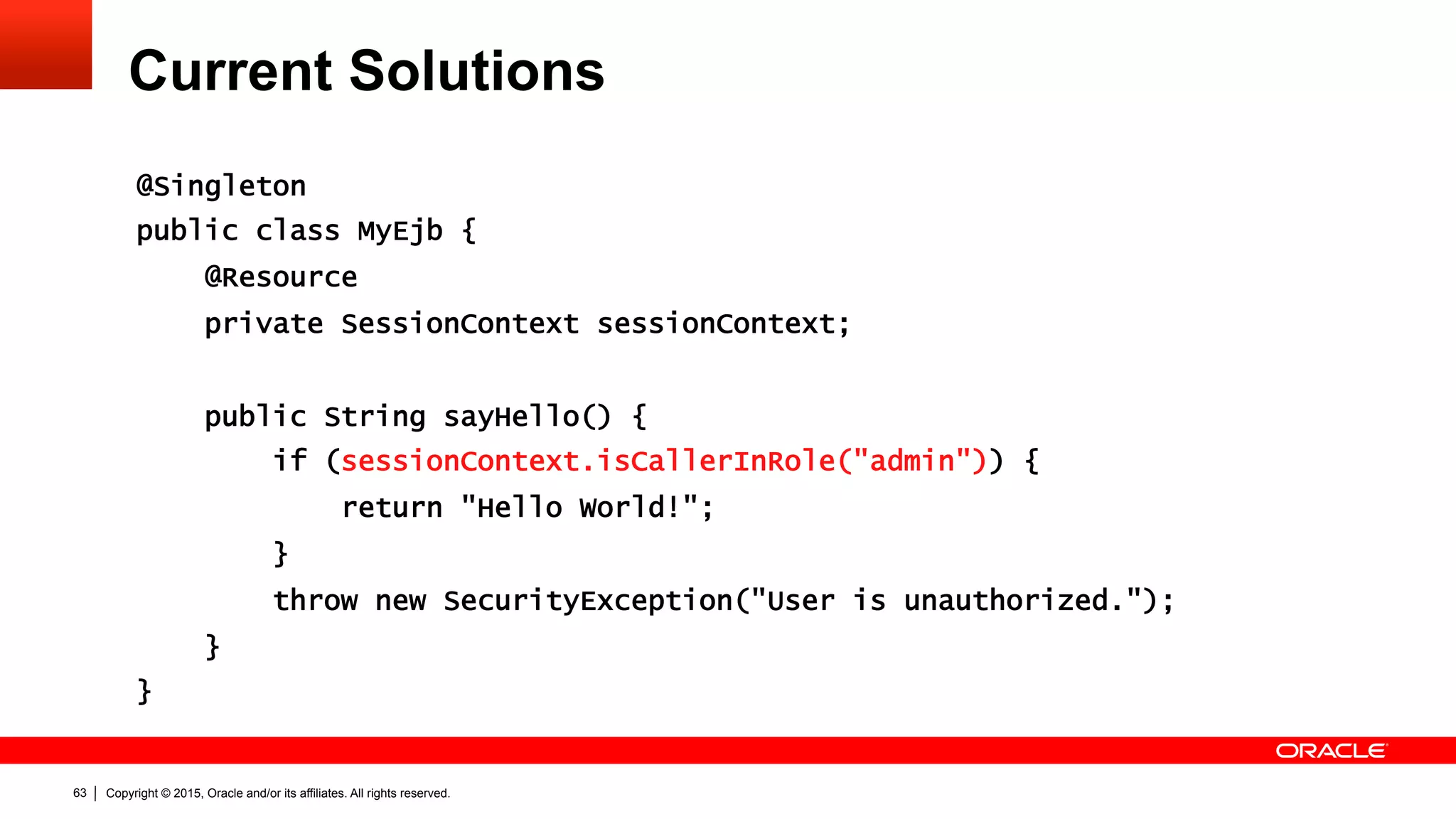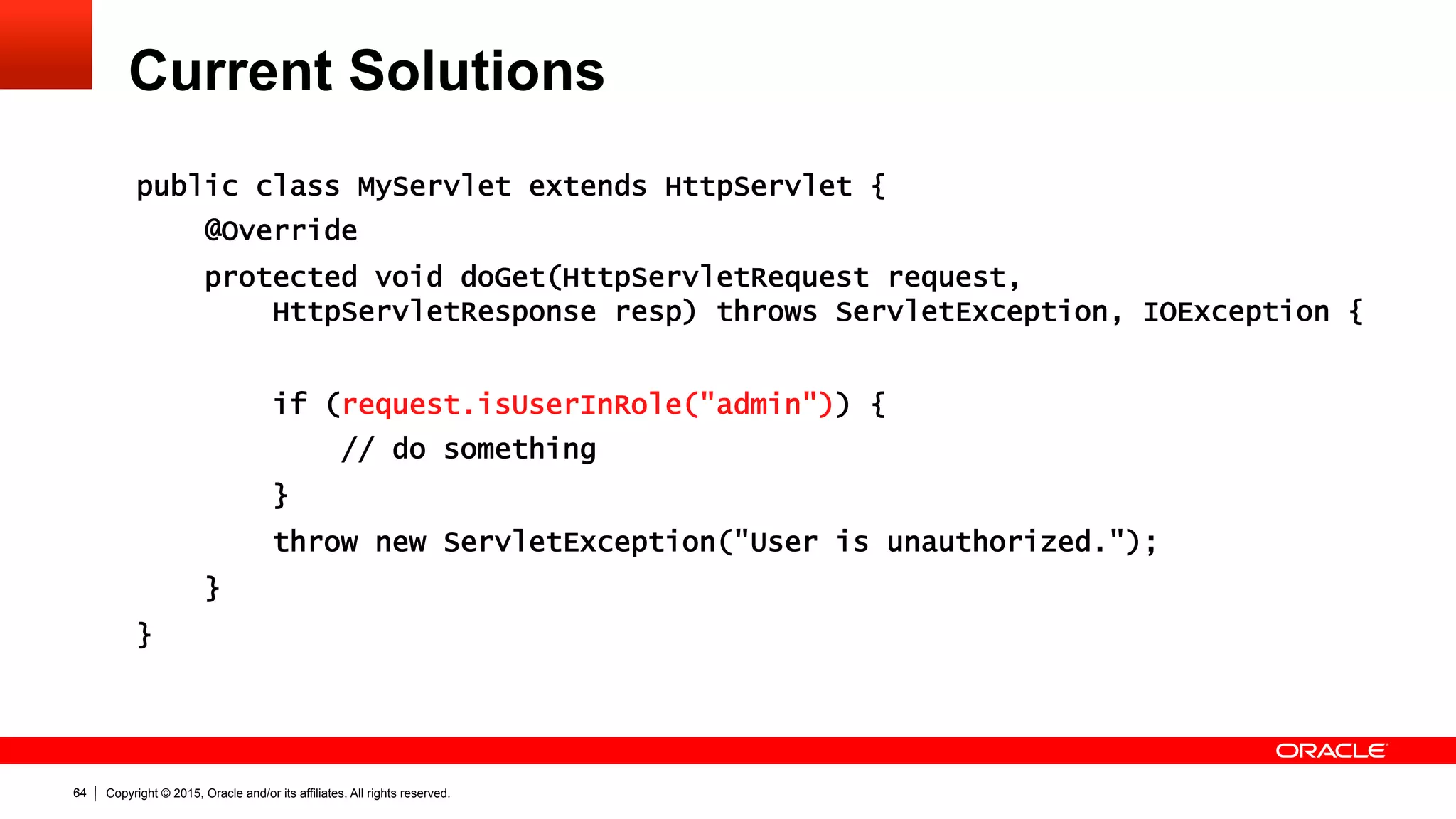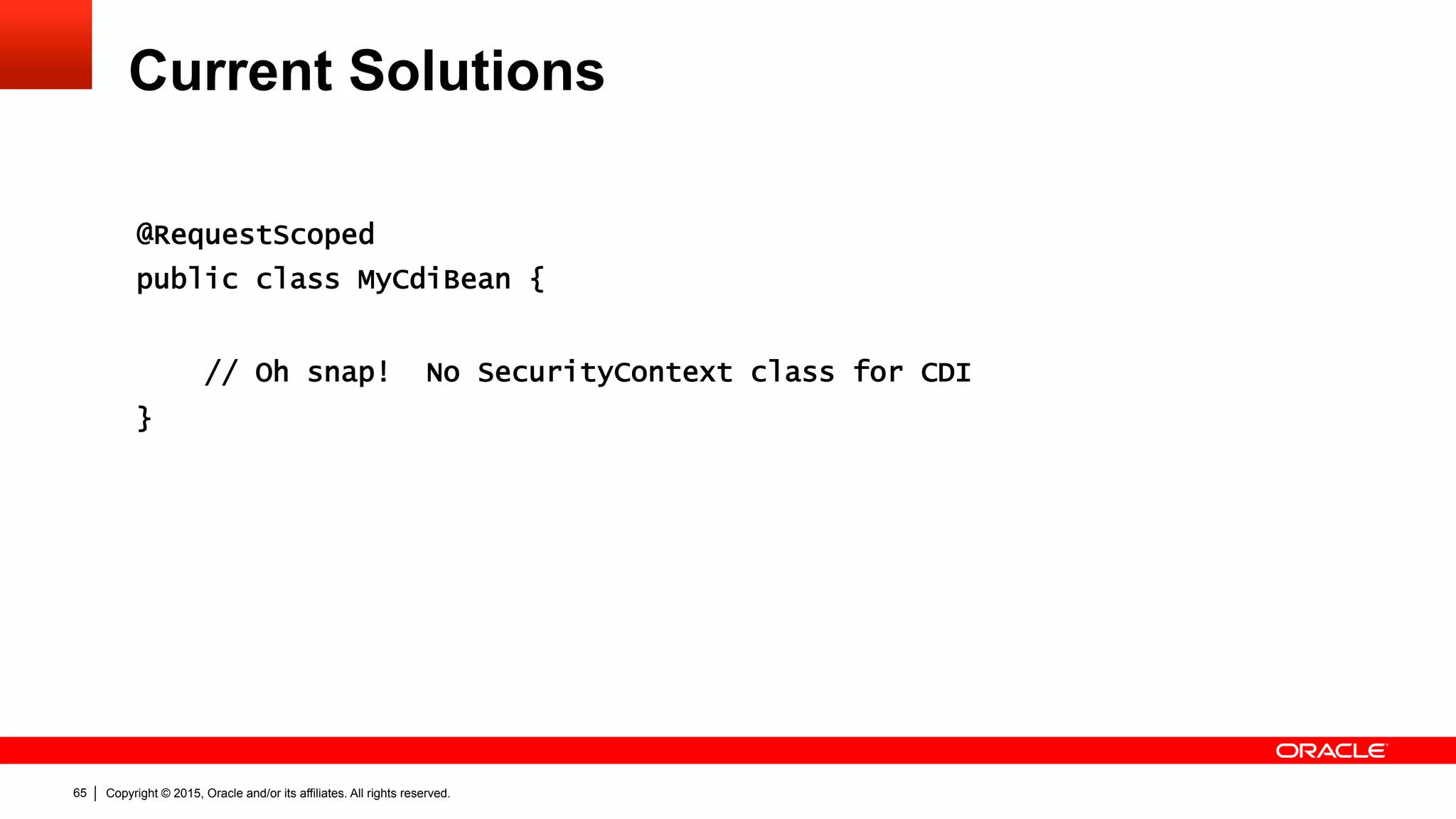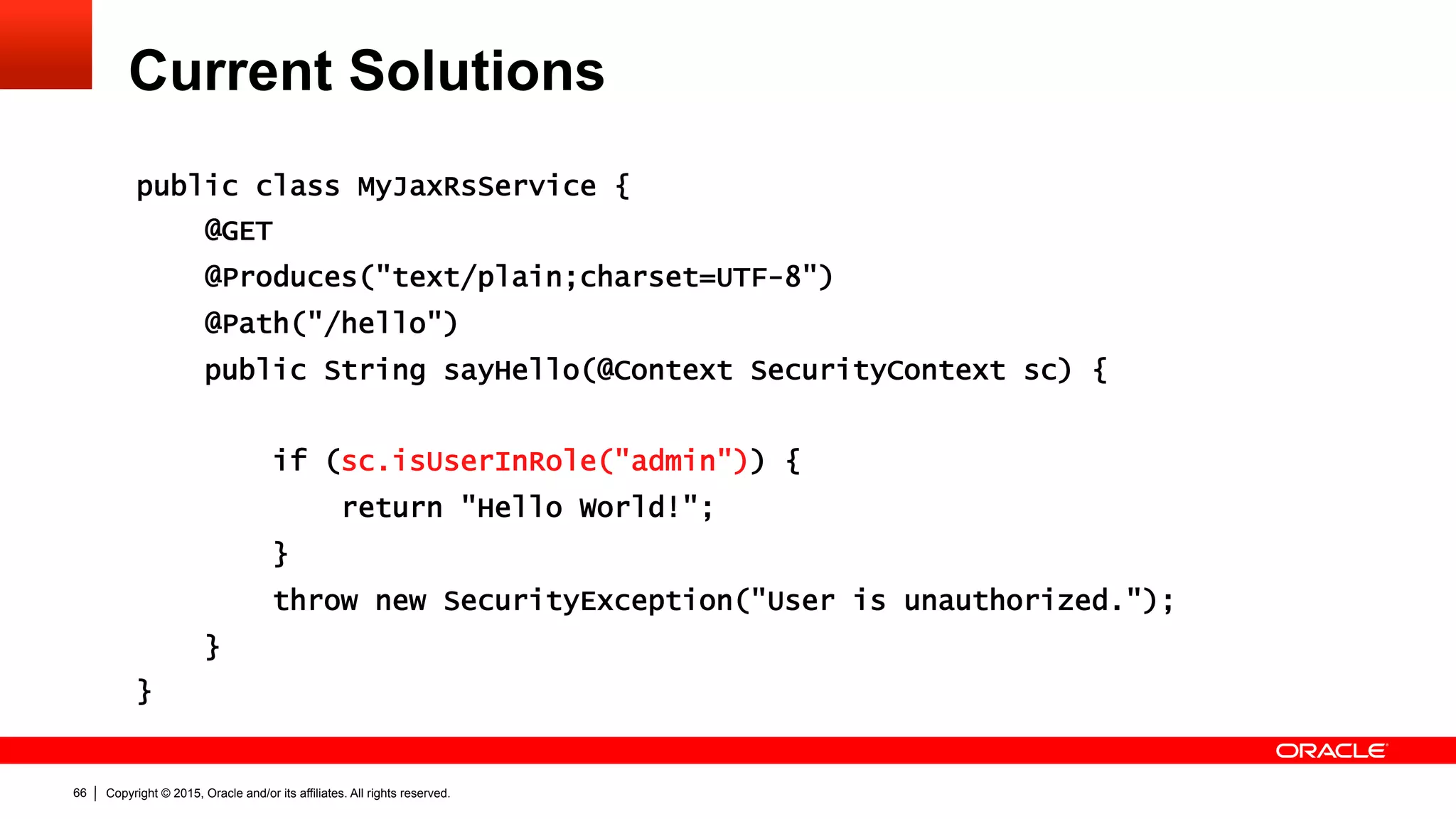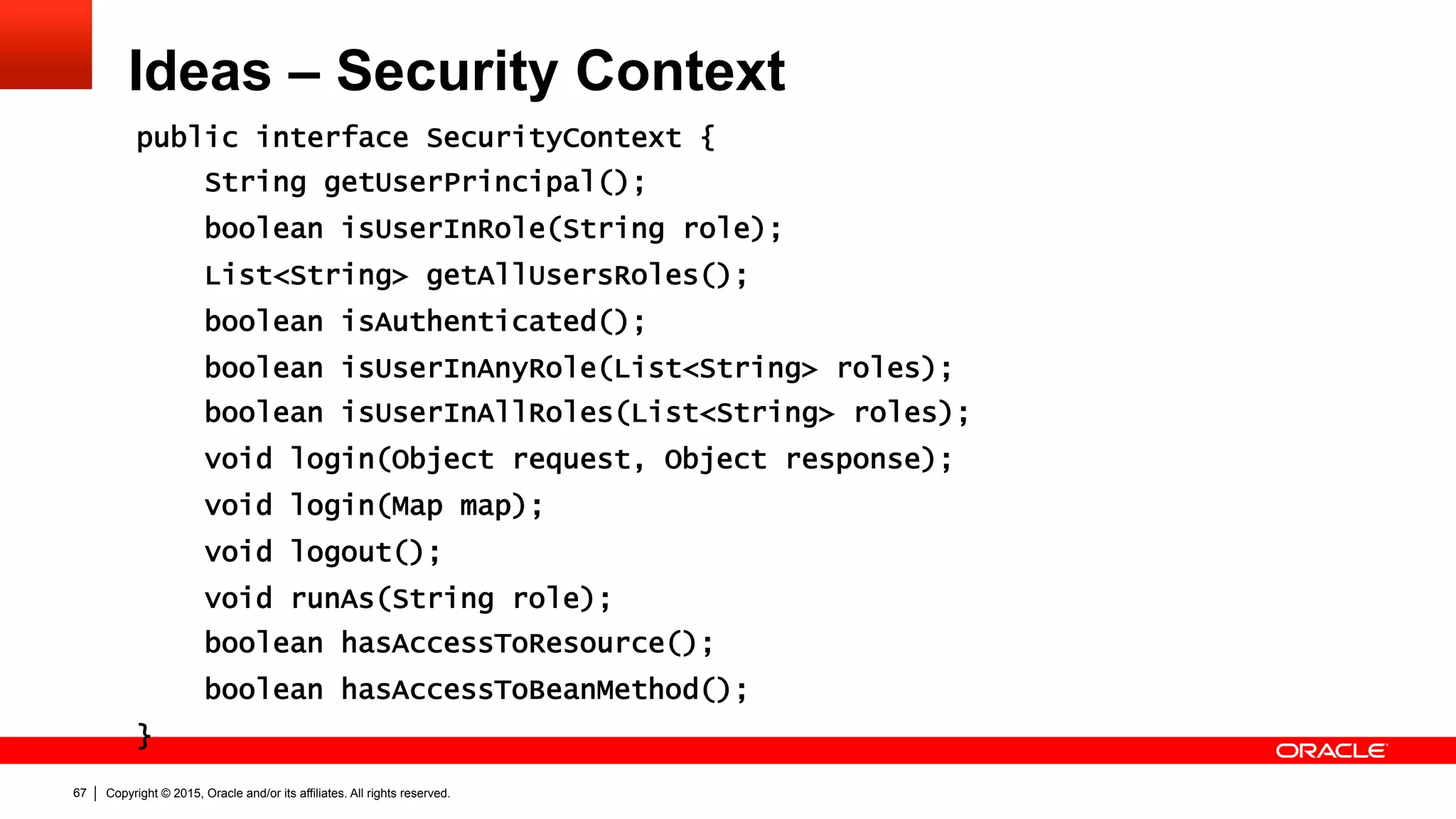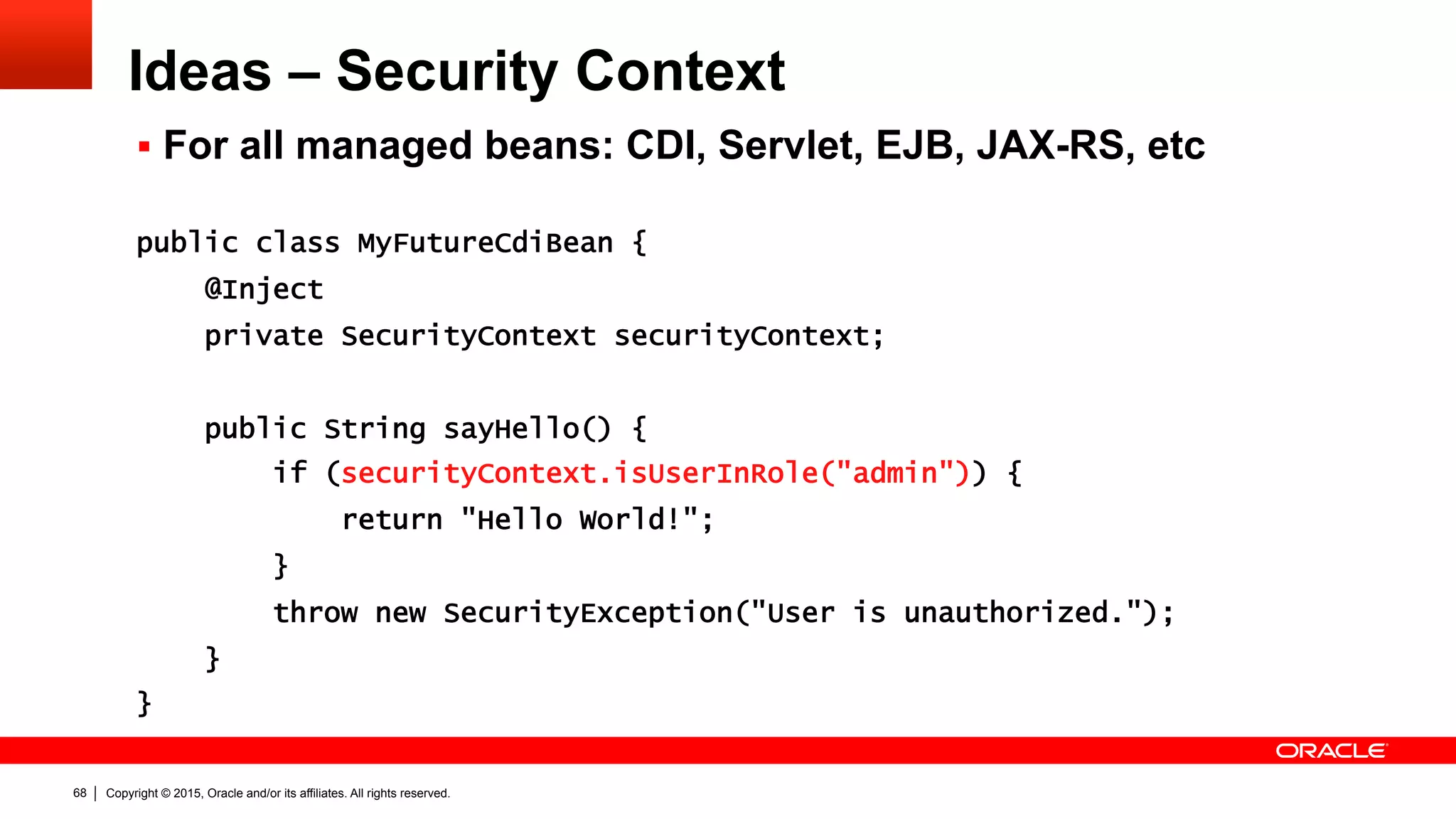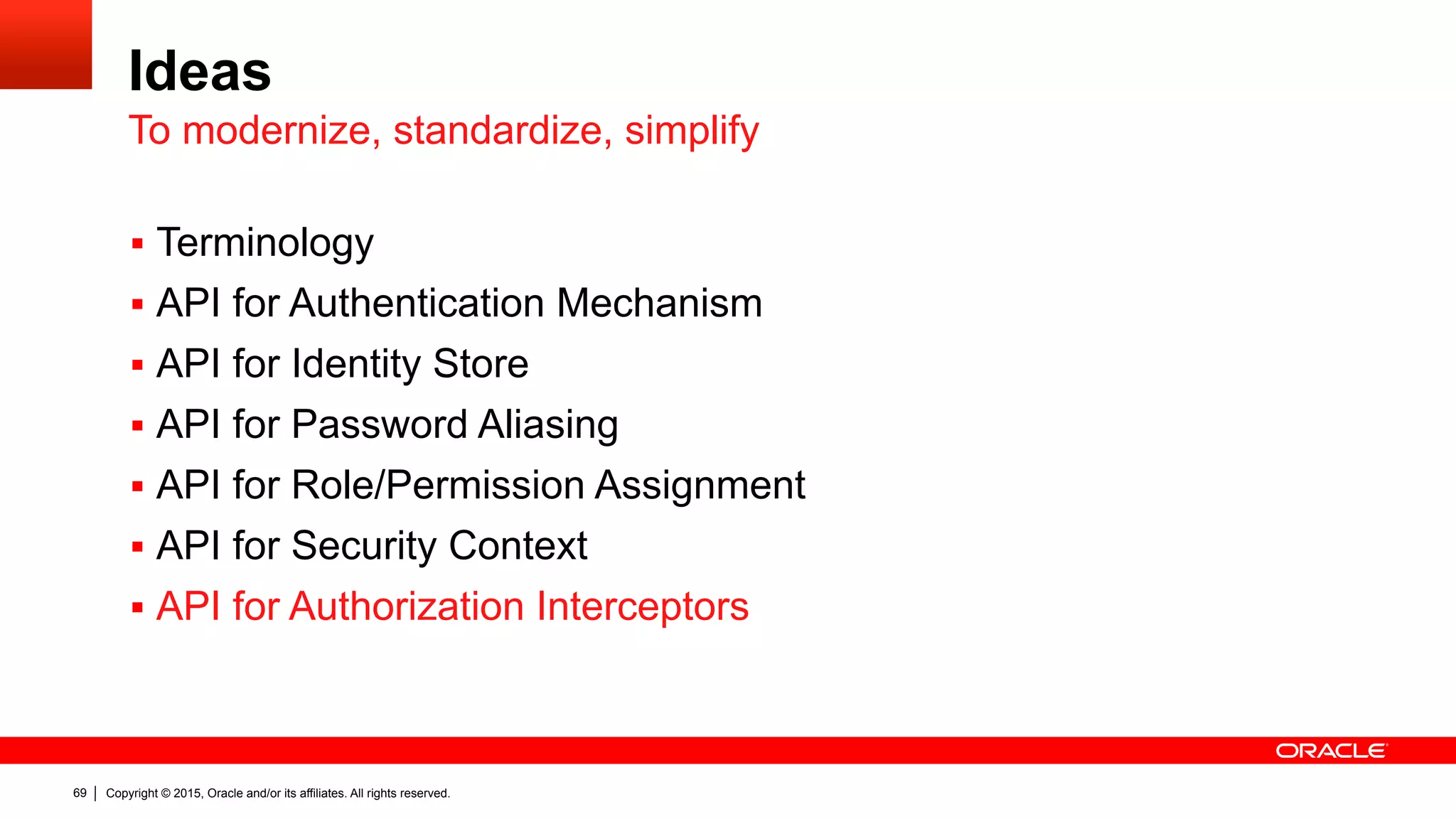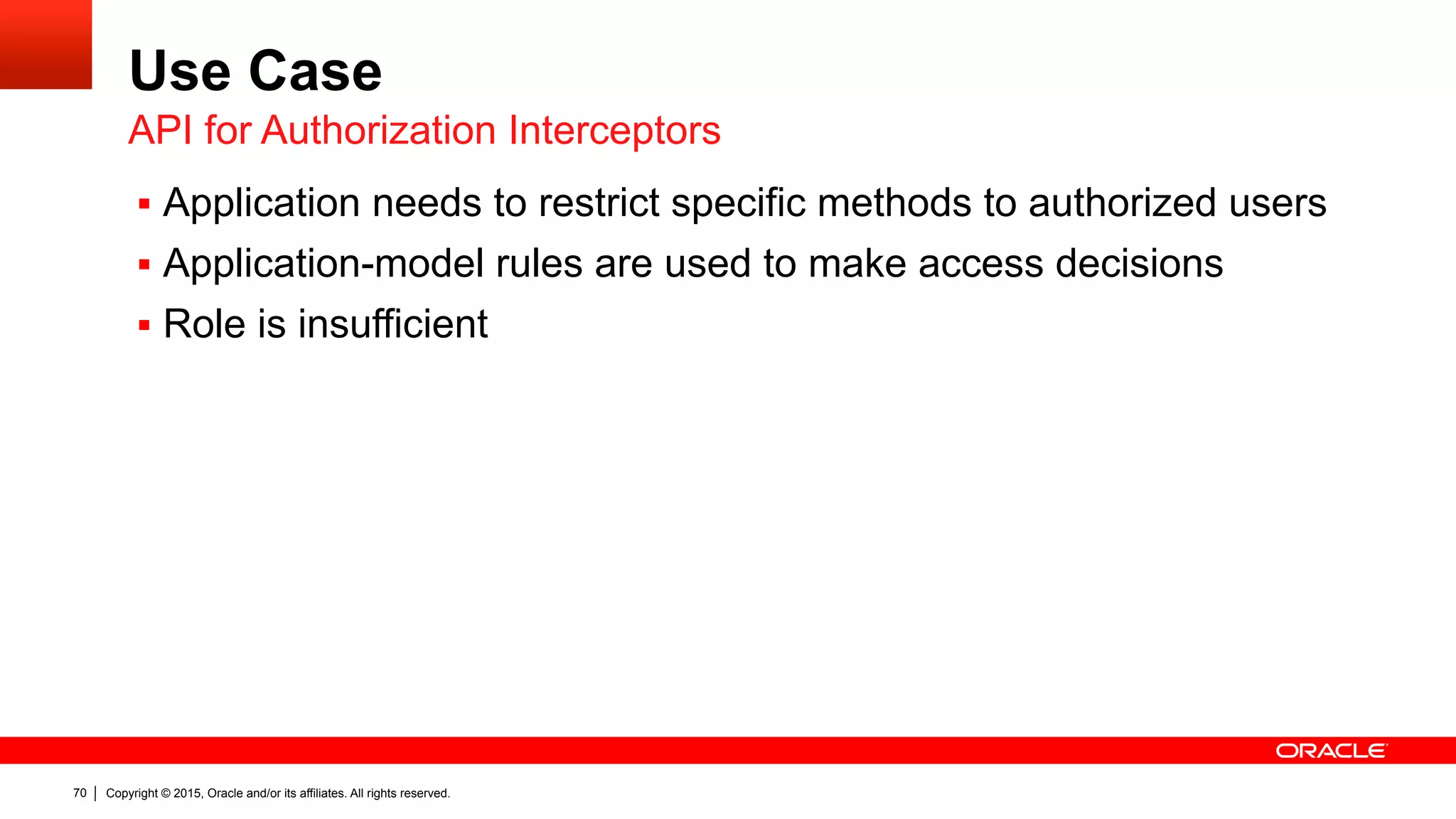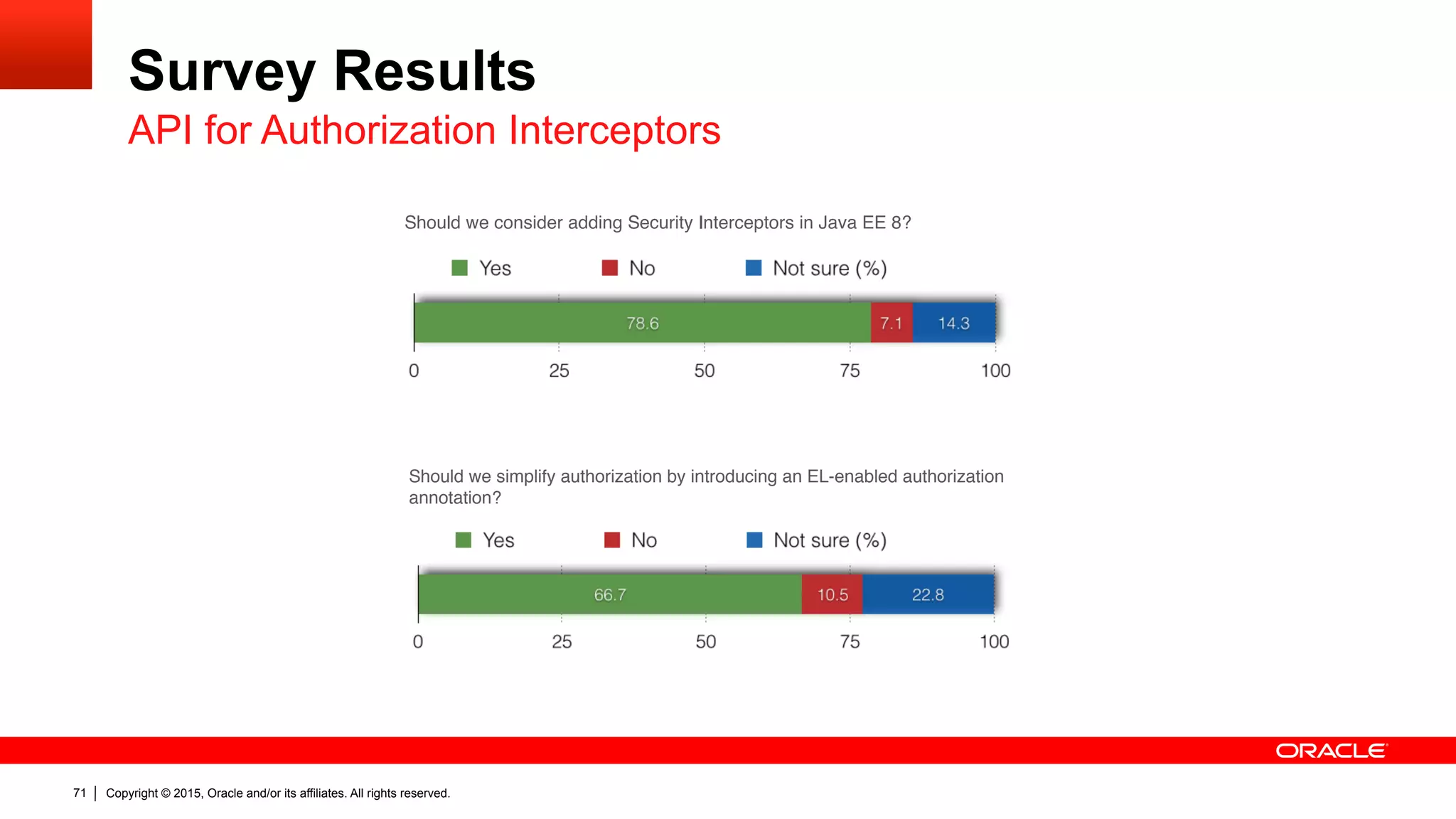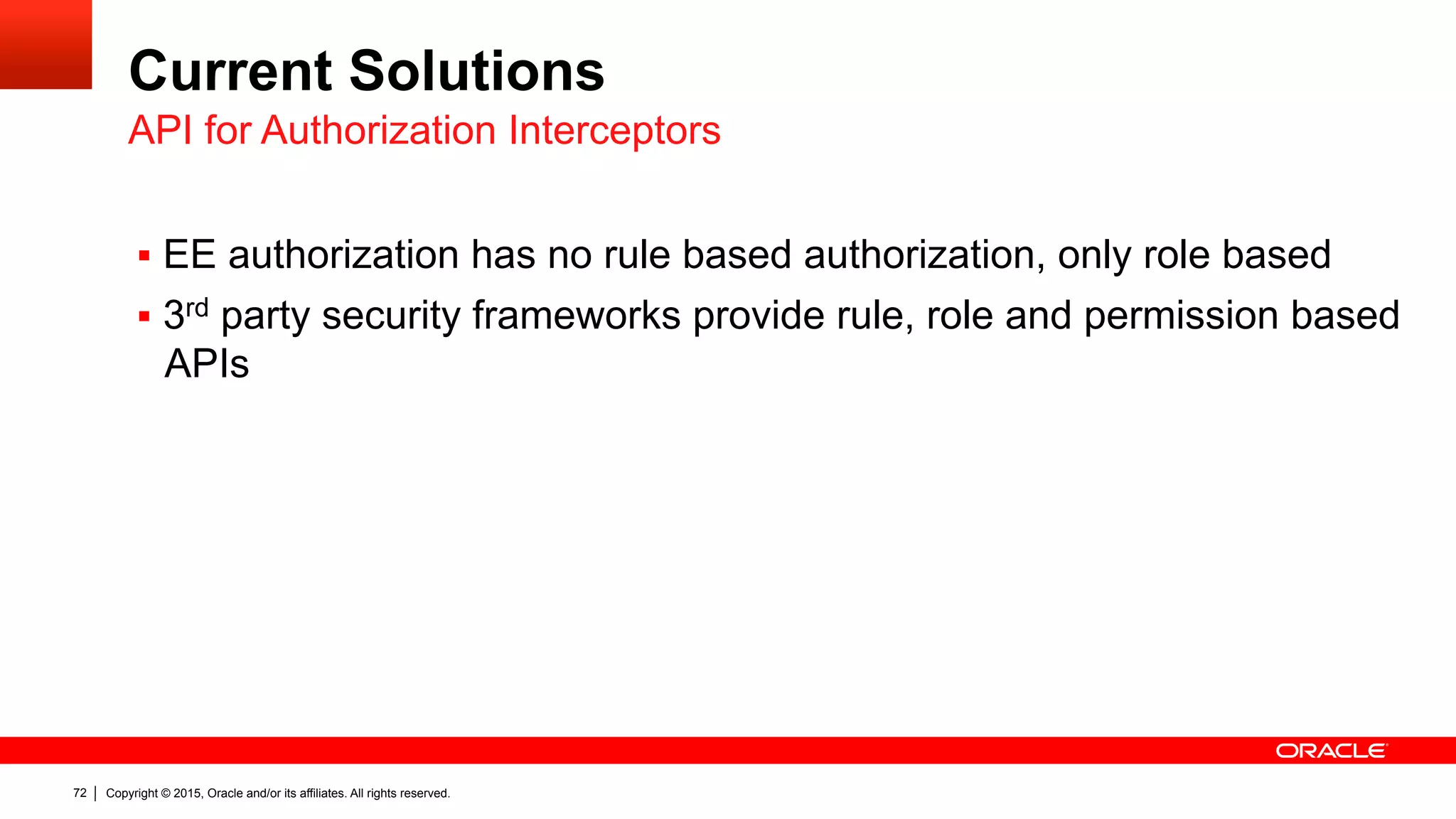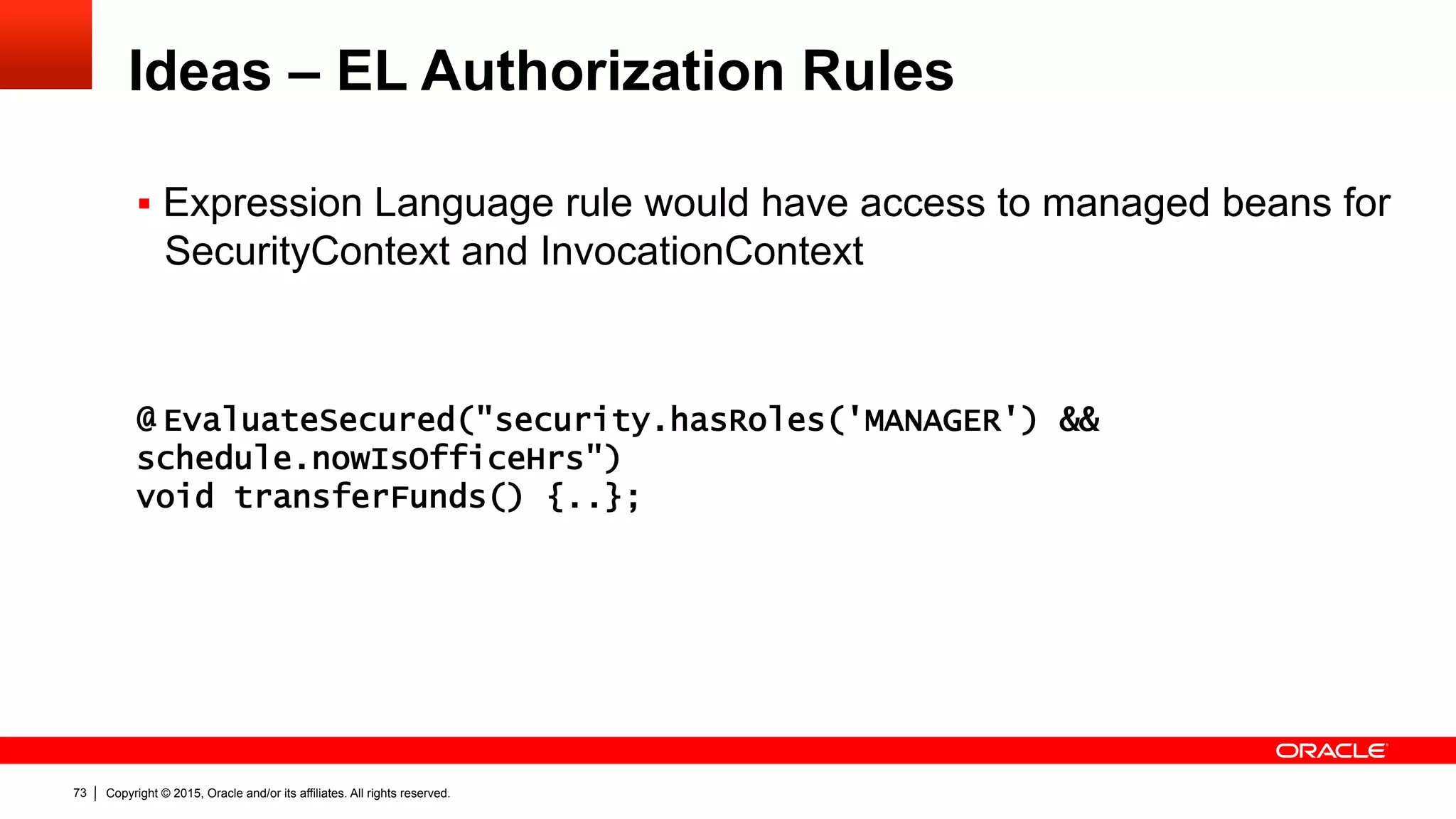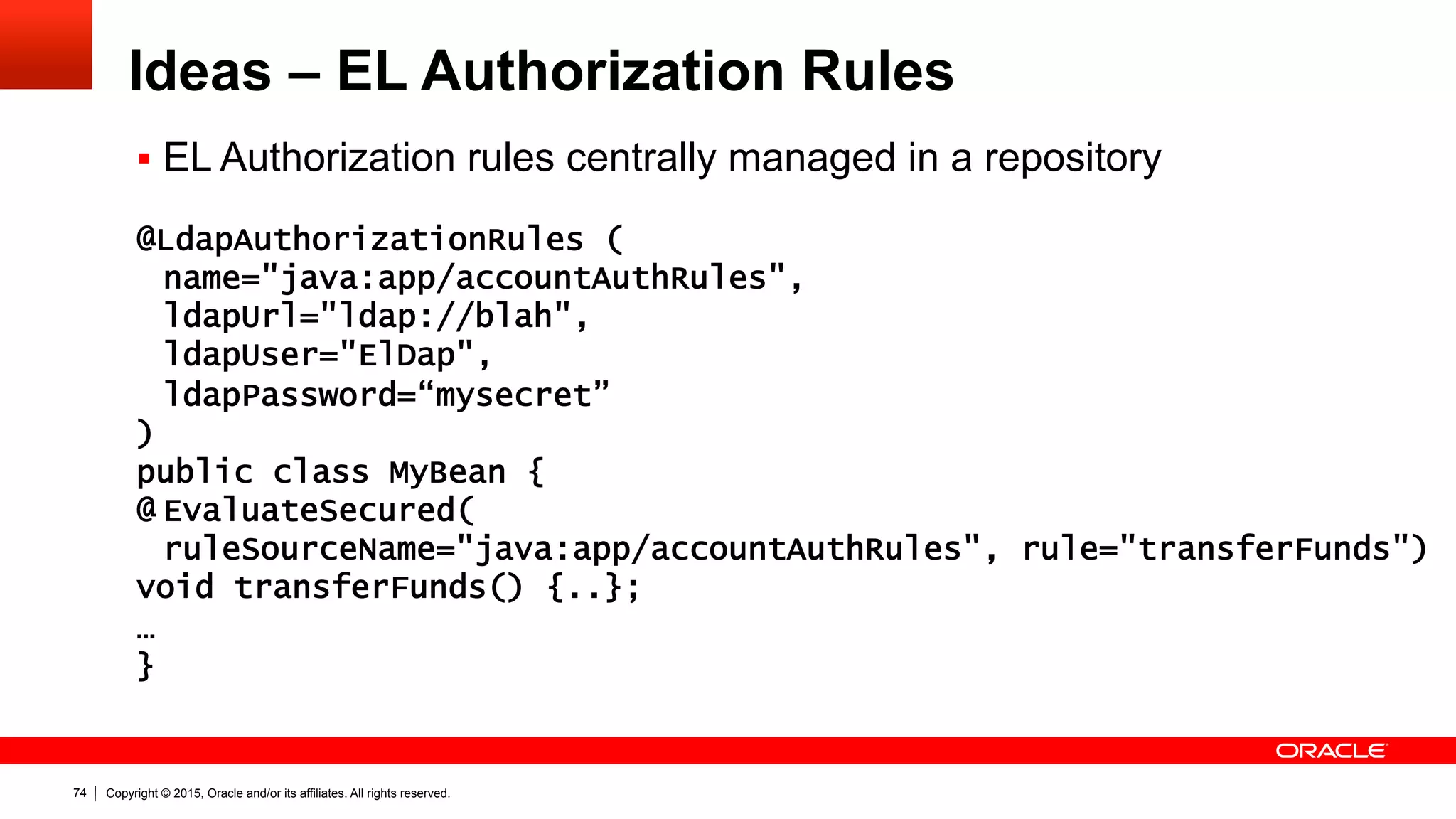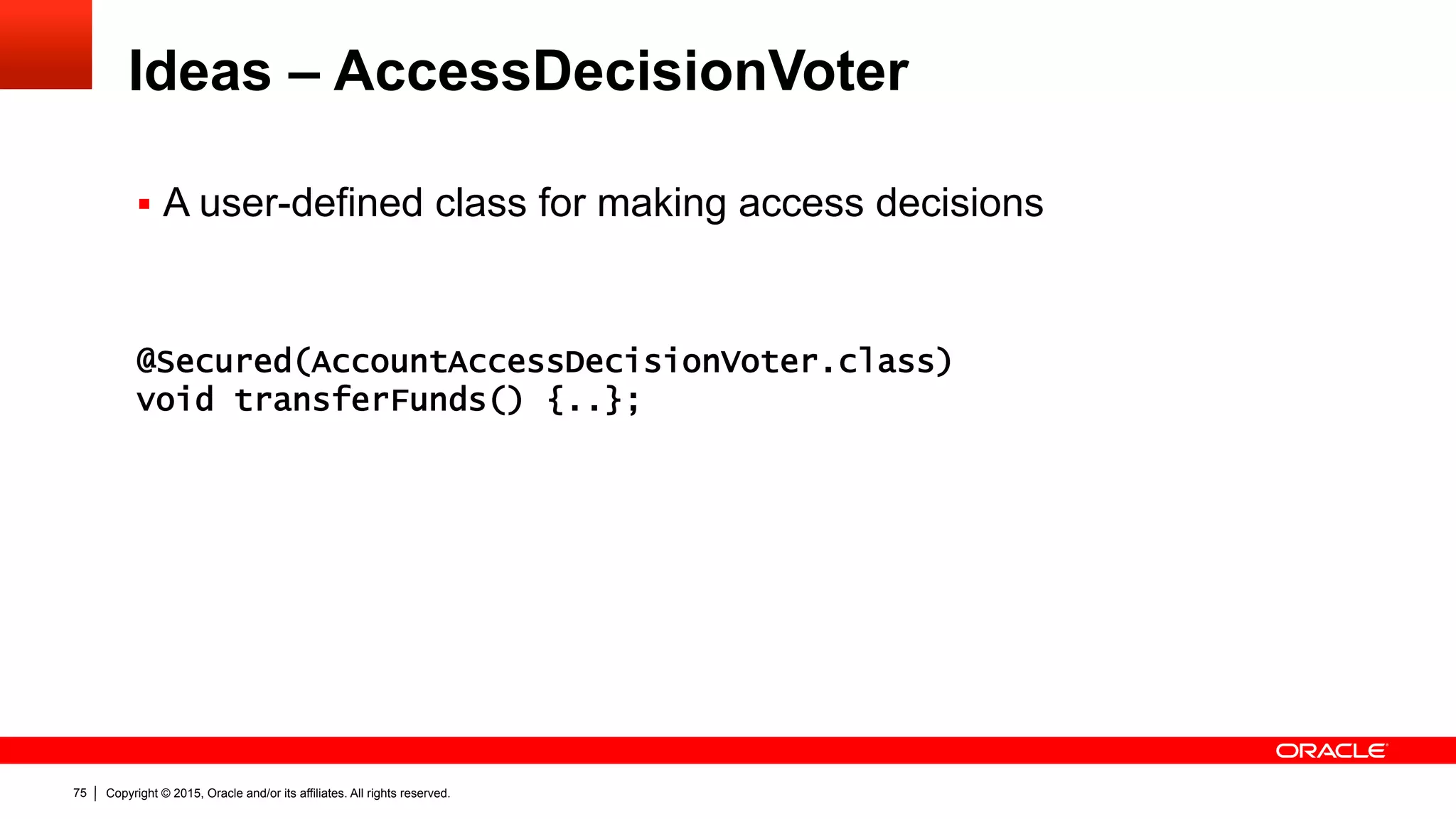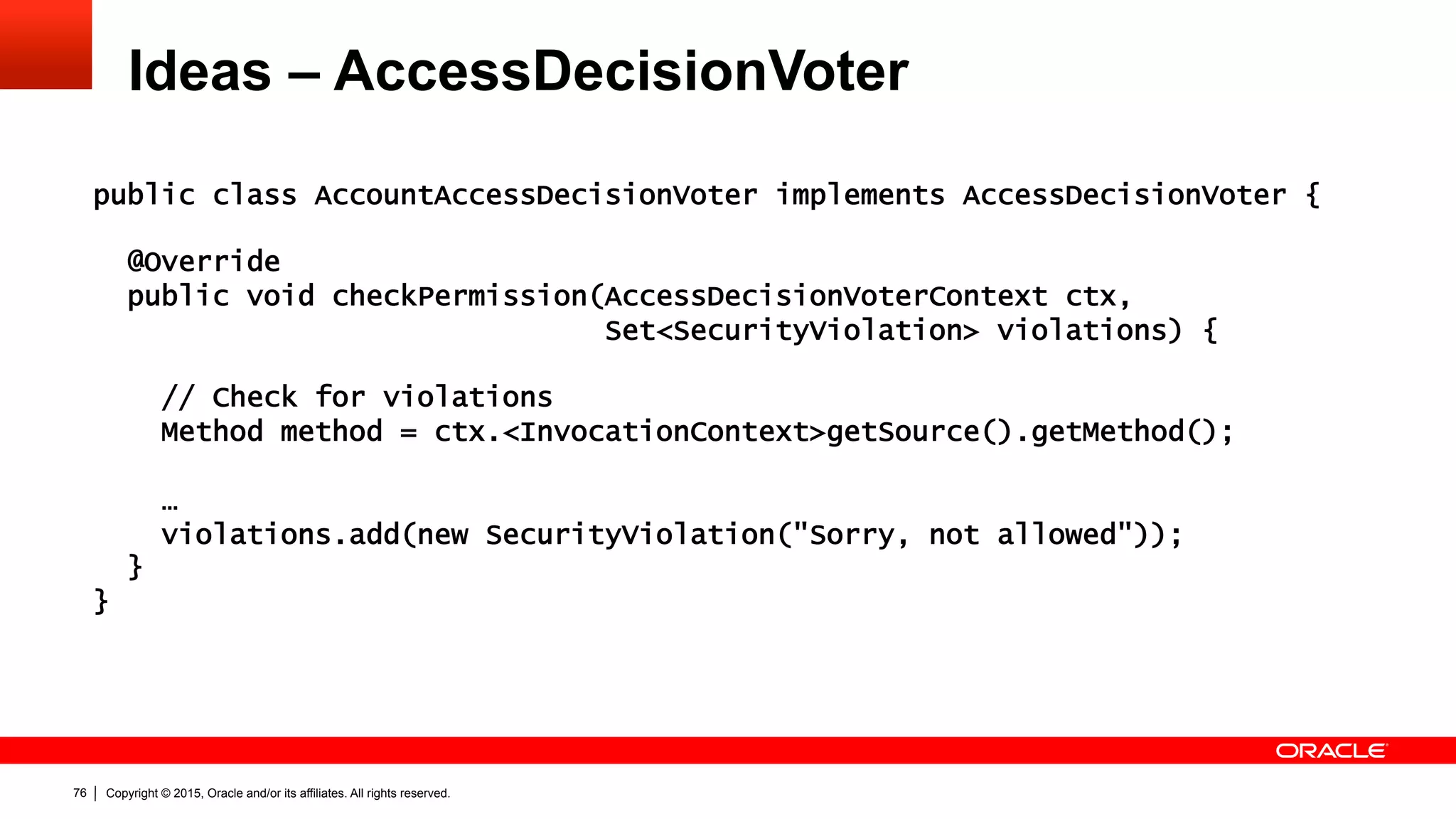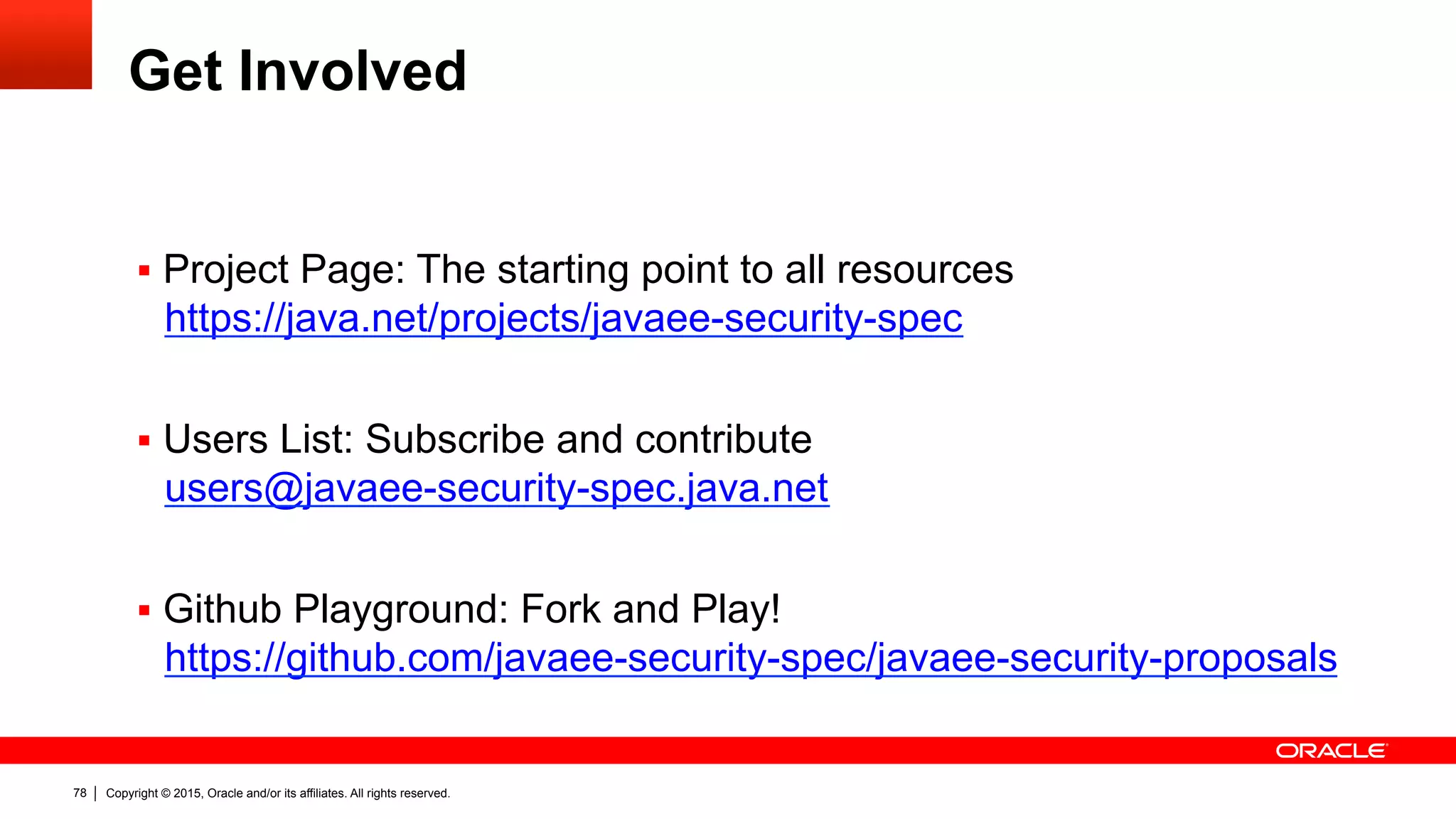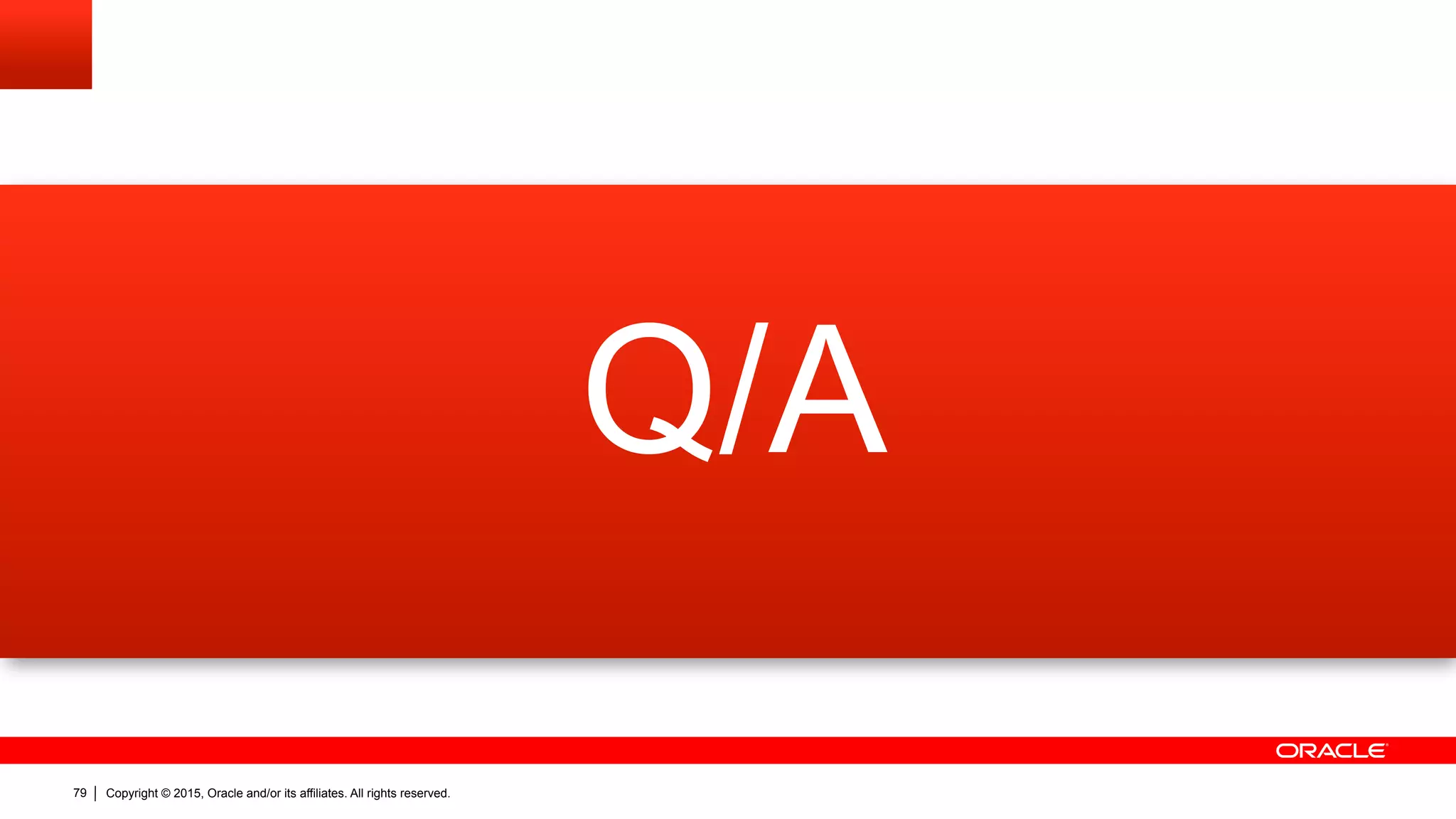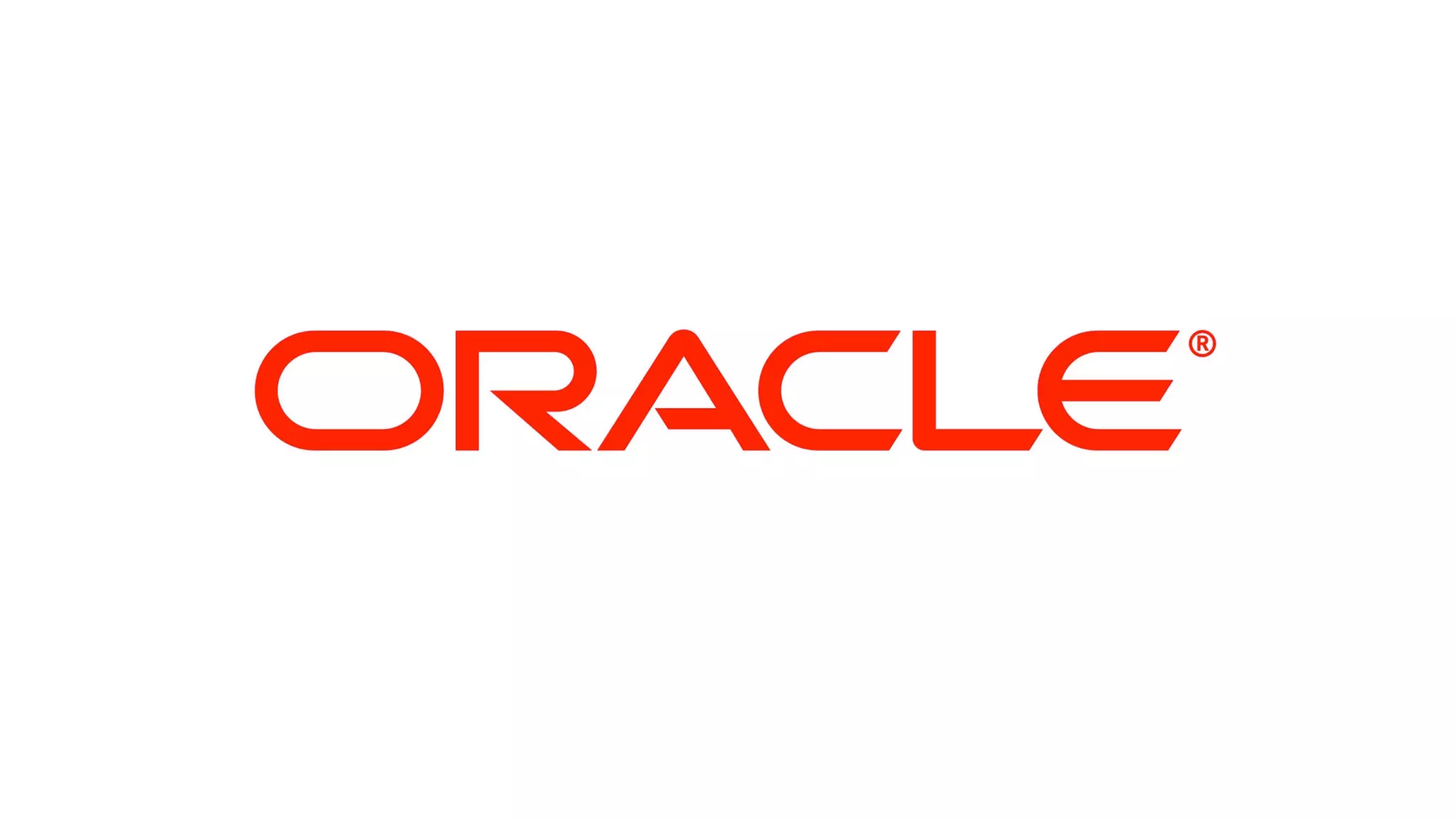The document discusses the Java EE Security API (JSR 375), highlighting its motivations and the need for modernization due to the challenges developers face with current Java EE security models, particularly in cloud environments. It outlines a plan for a new security API that aims to simplify authentication, authorization, and identity management while addressing portability and configuration issues. The expert group for JSR 375 has been actively brainstorming ideas to achieve these goals, with a focus on developer-friendly solutions and standardized terminology.
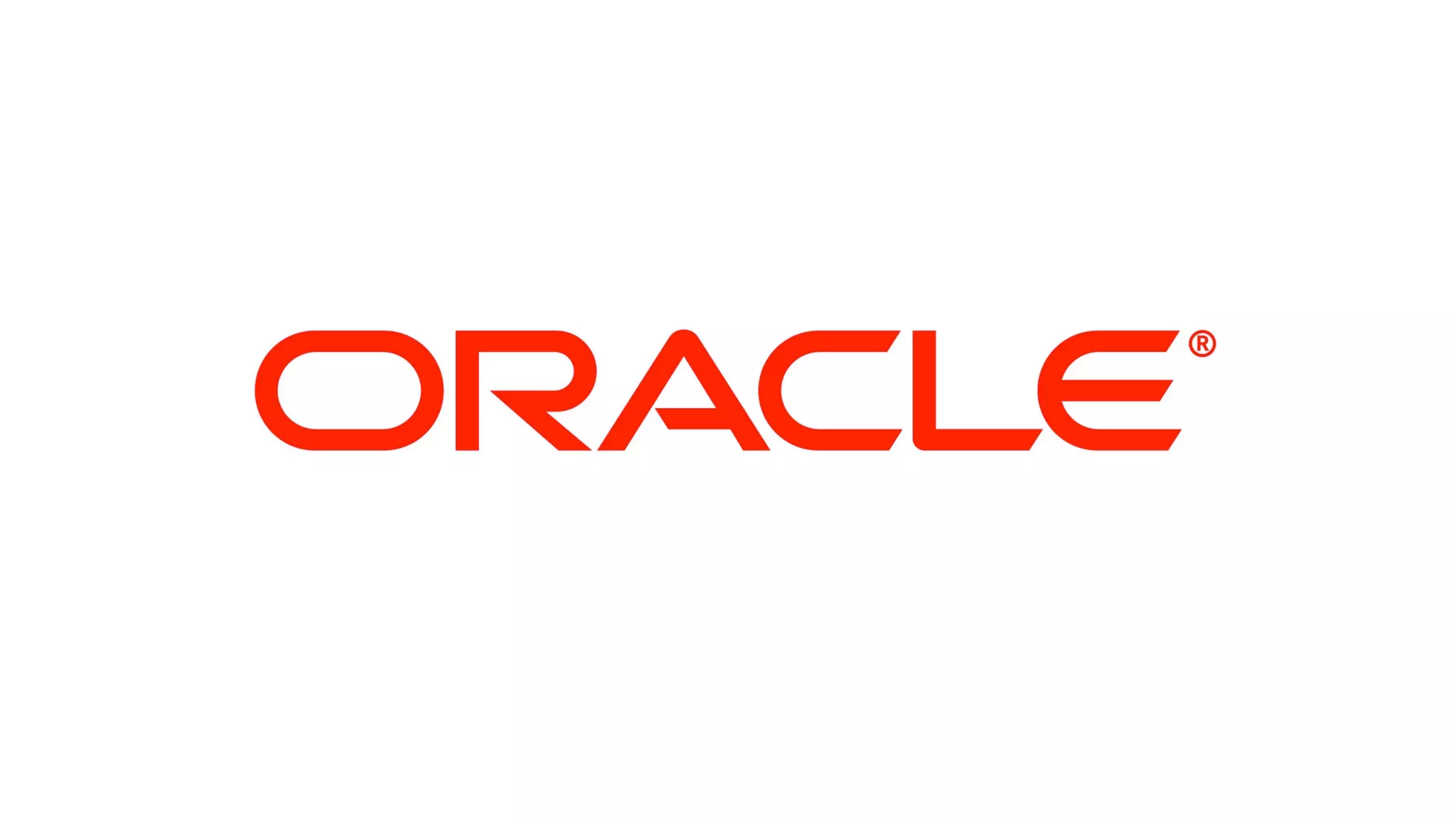

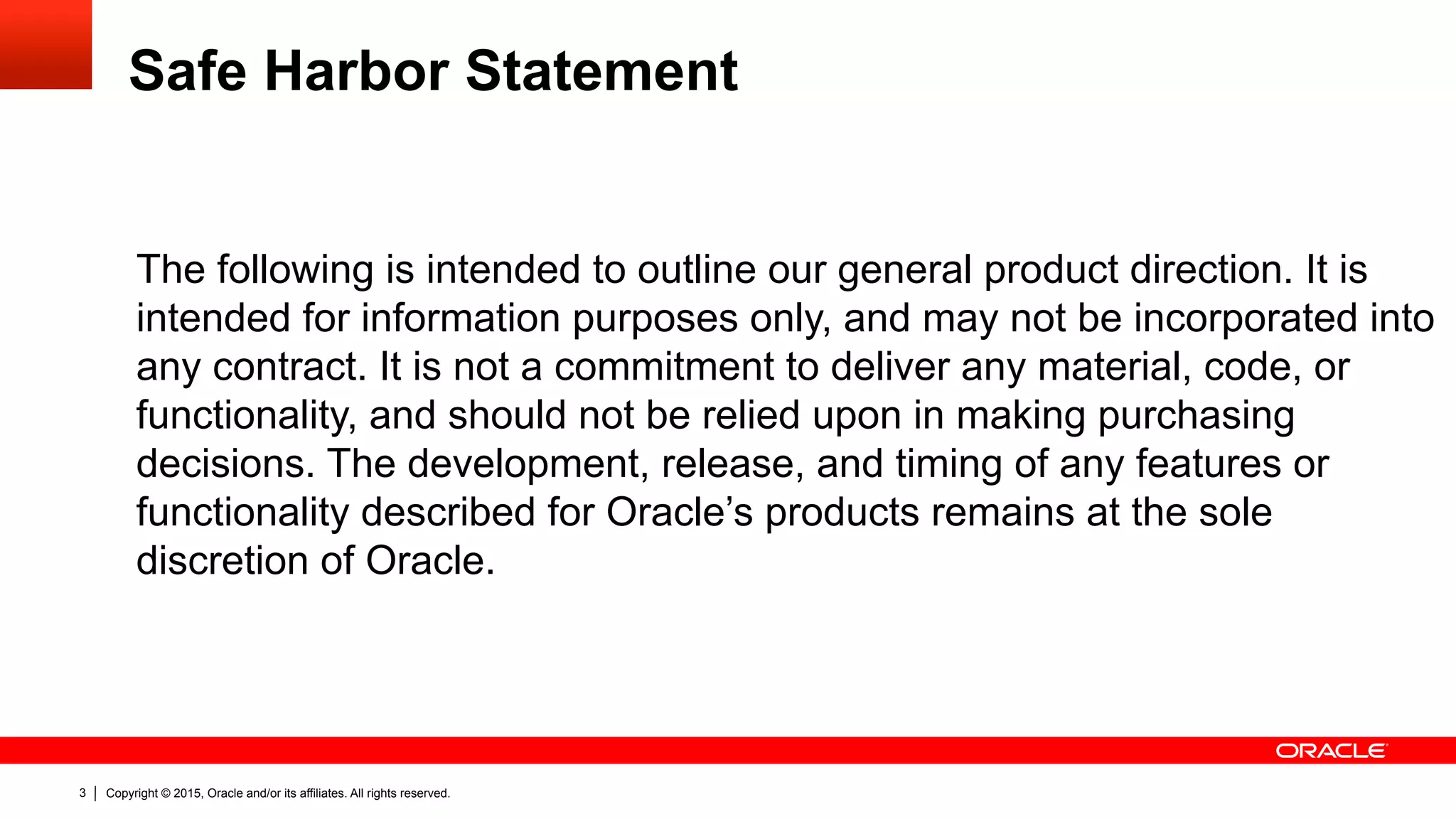

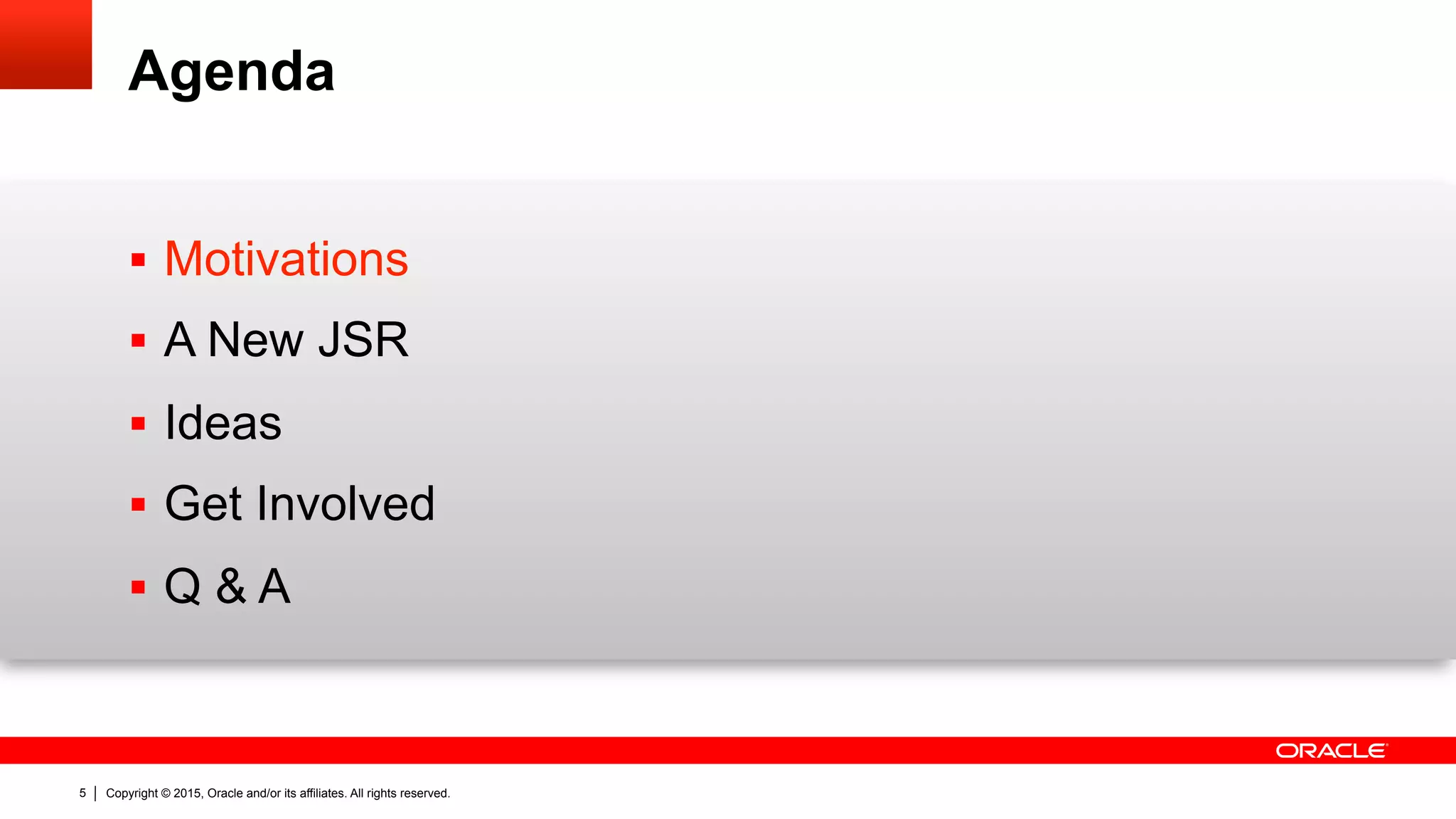
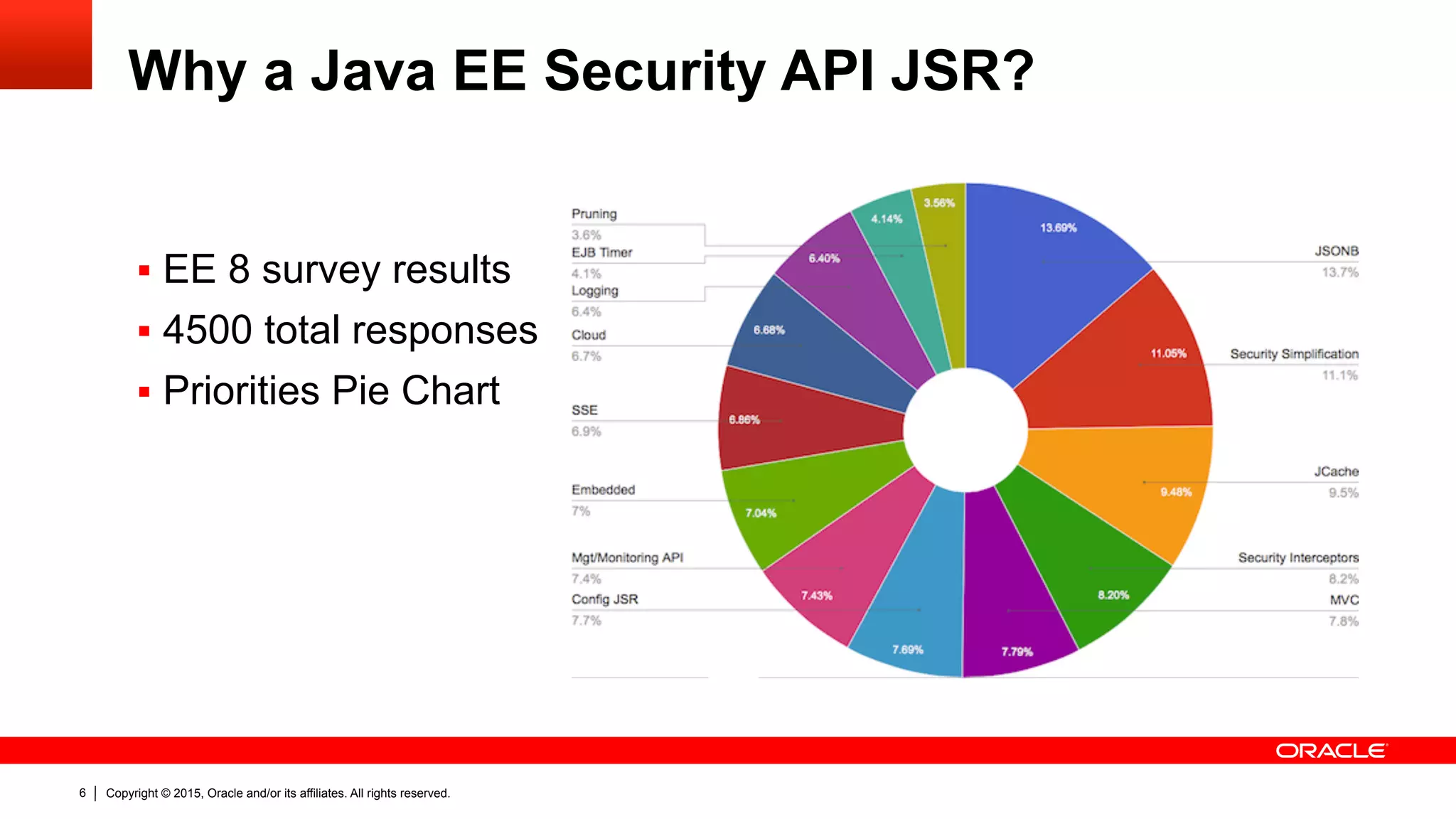
![Copyright © 2015, Oracle and/or its affiliates. All rights reserved.7
What’s wrong with Java EE Security?
"The ultimate goal is to have basic security working without the need of
any kind of vendor specific configuration, deployment descriptors, or
whatever. ” – Arjan Tijms
“[The EE security] model is problematic in cloud/PaaS environments
where developers do not necessarily have easy access to non-standard
vendor runtime features and a self-contained application is much easier
to manage.” – Reza Rahman
The community says…](https://image.slidesharecdn.com/devoxxfr-ee8-jsr375-security-api-v1-150413135019-conversion-gate01/75/Finally-EE-Security-API-JSR-375-7-2048.jpg)

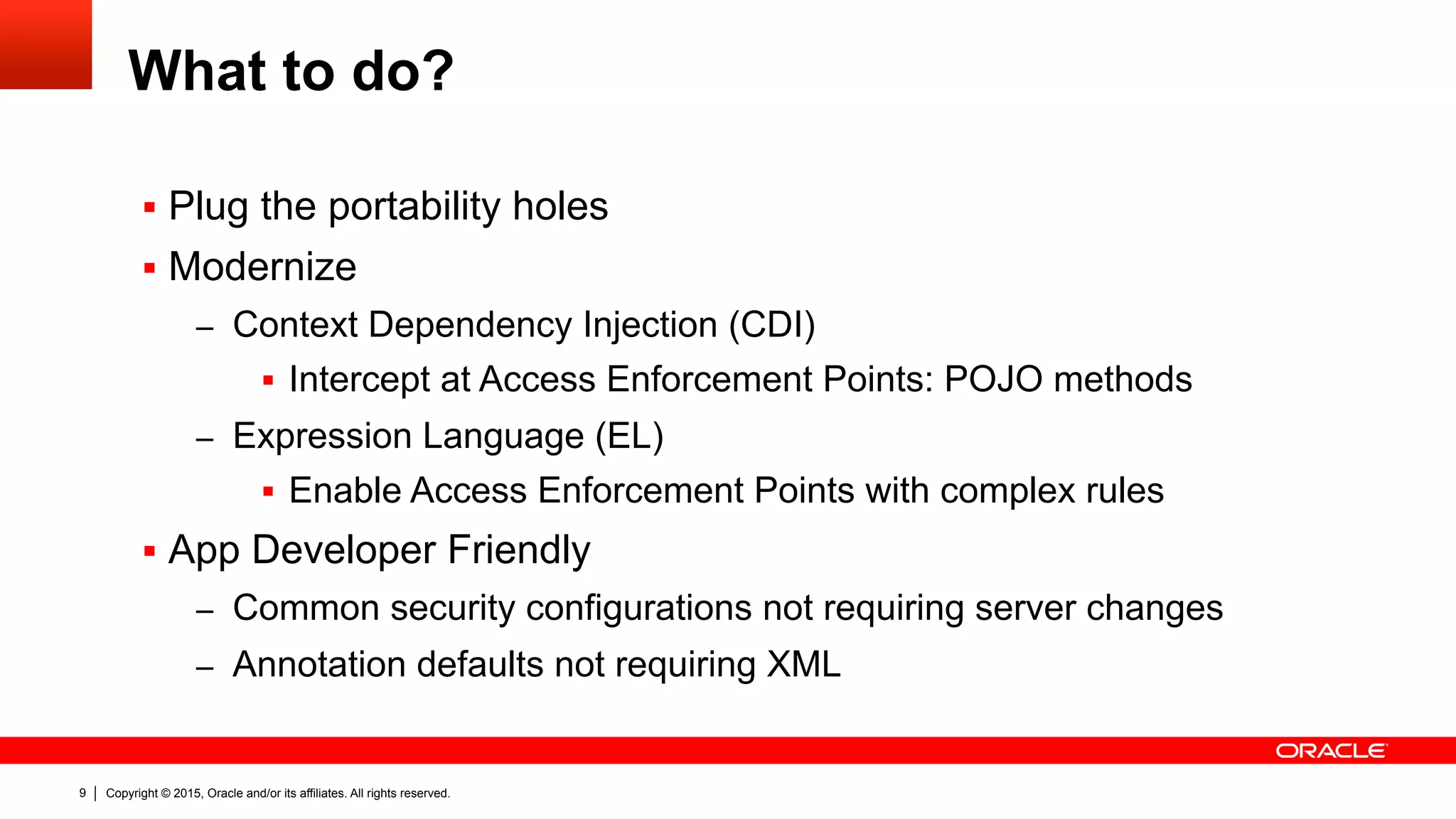
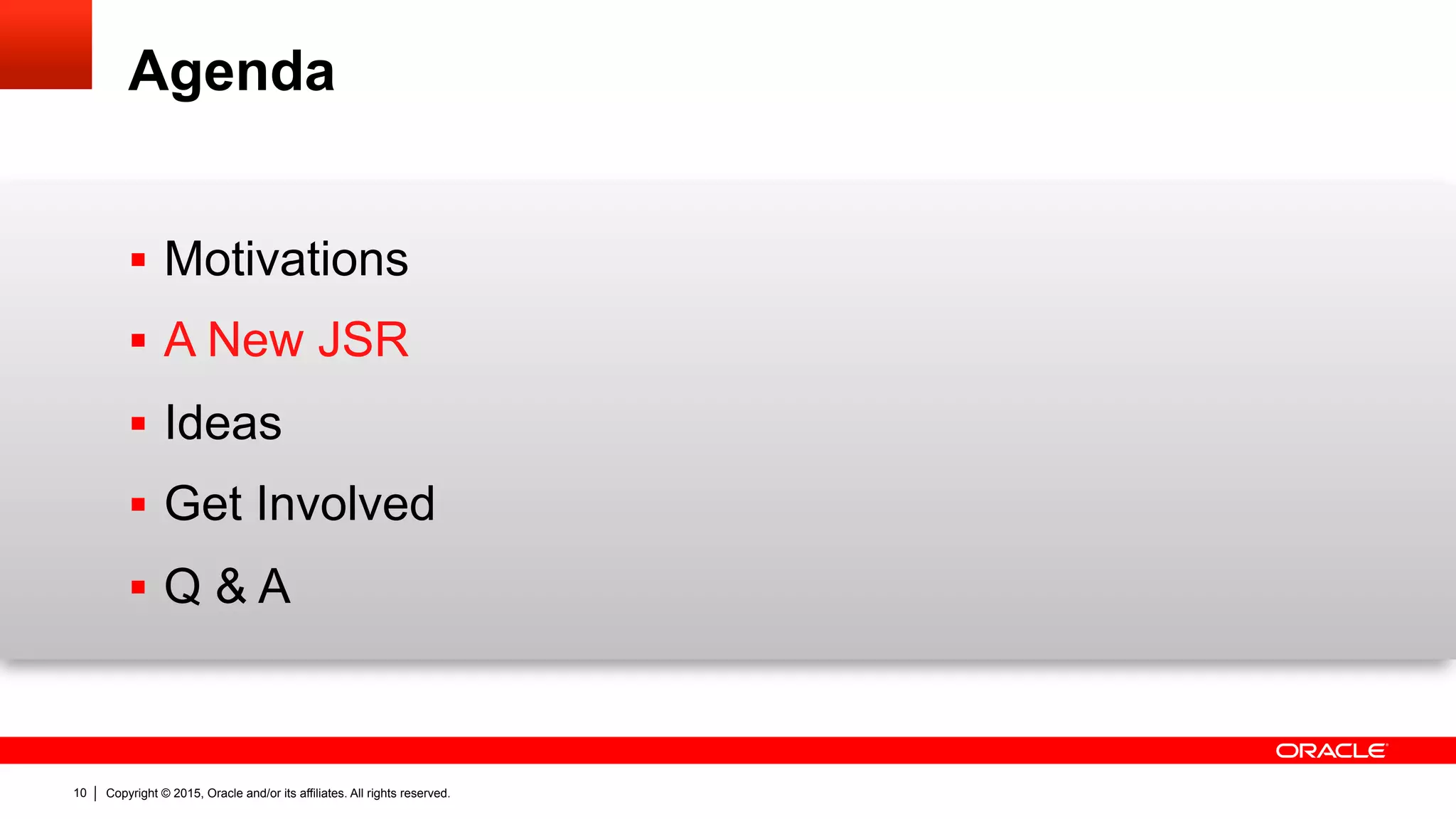

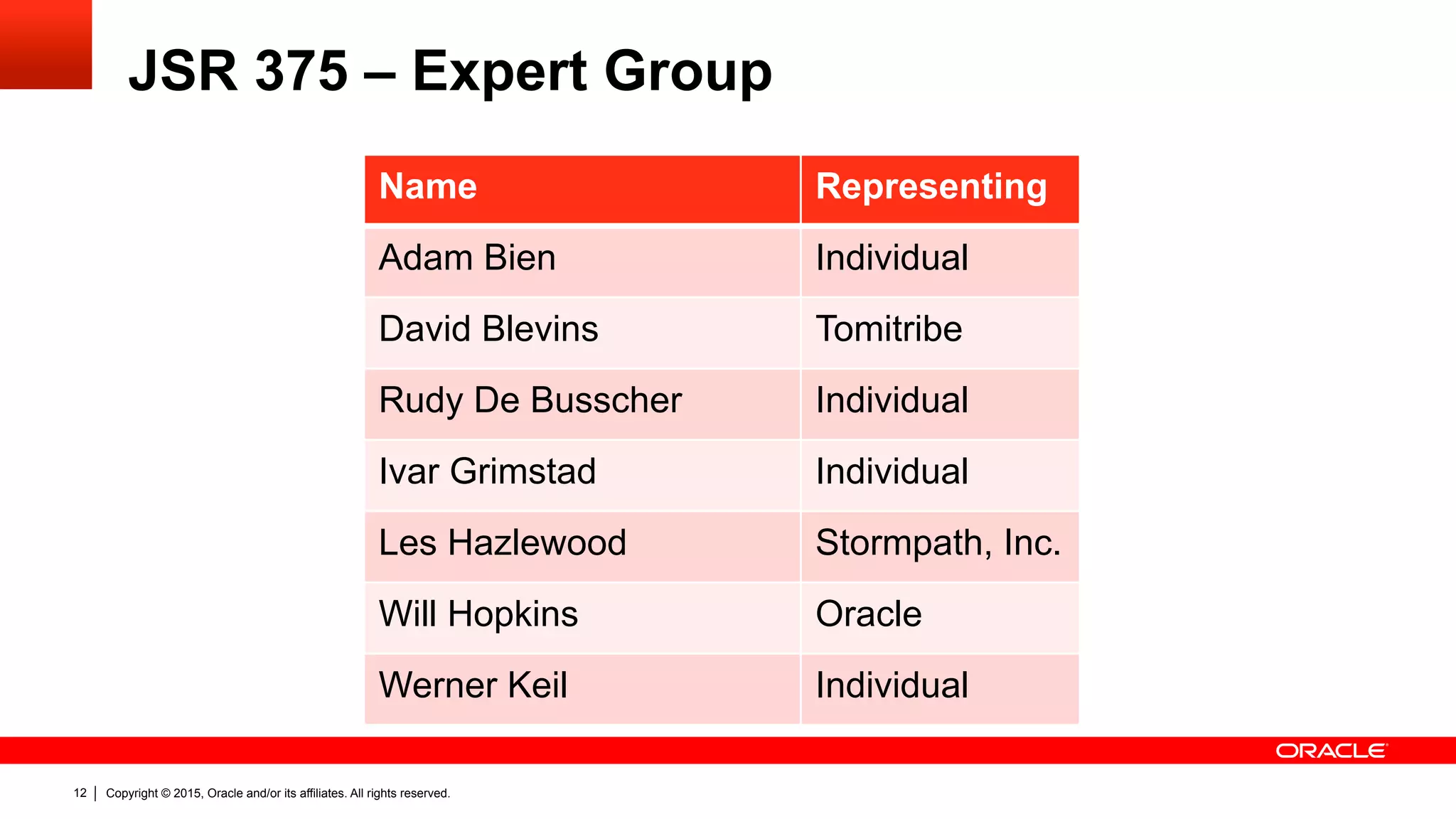
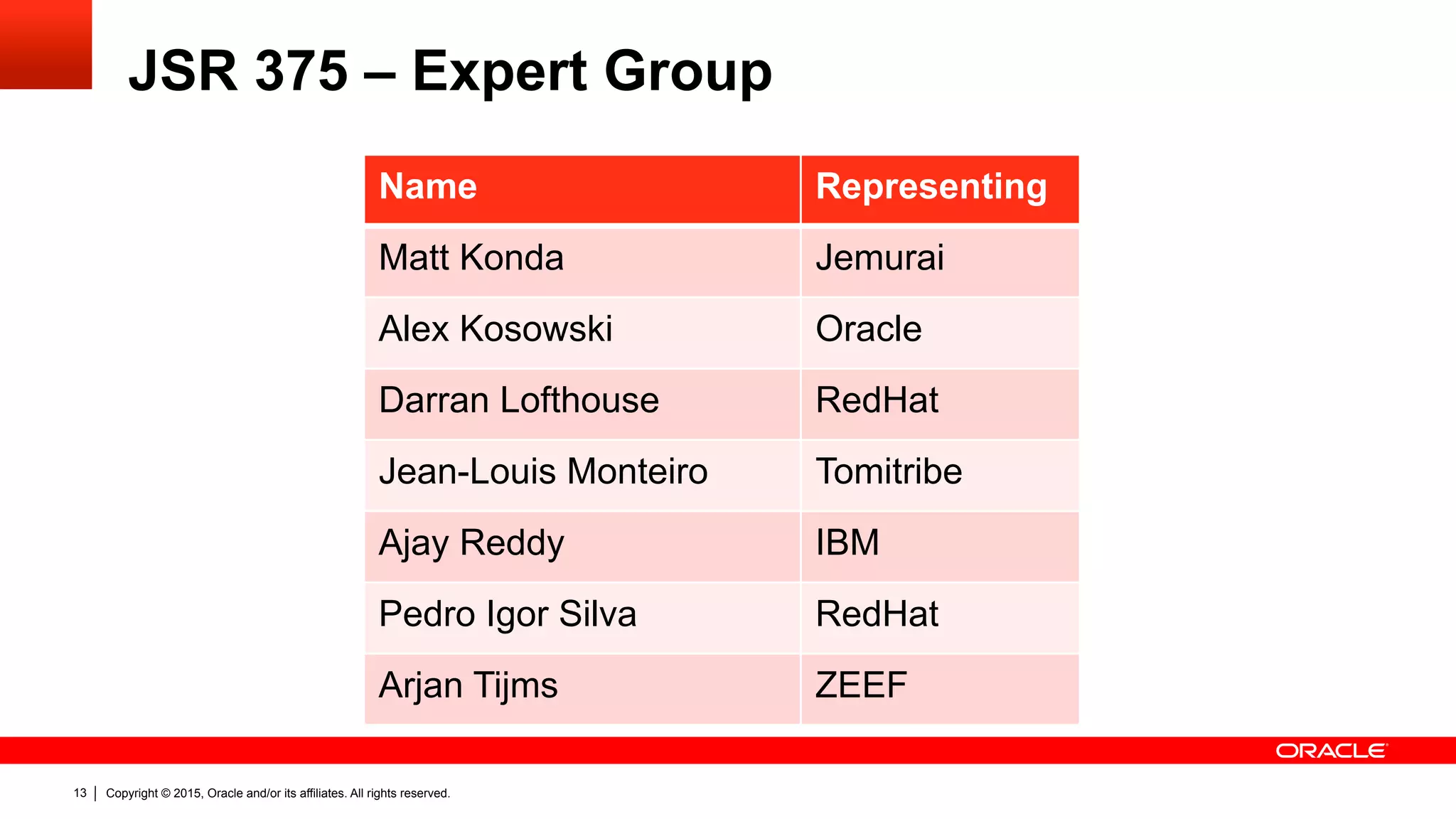
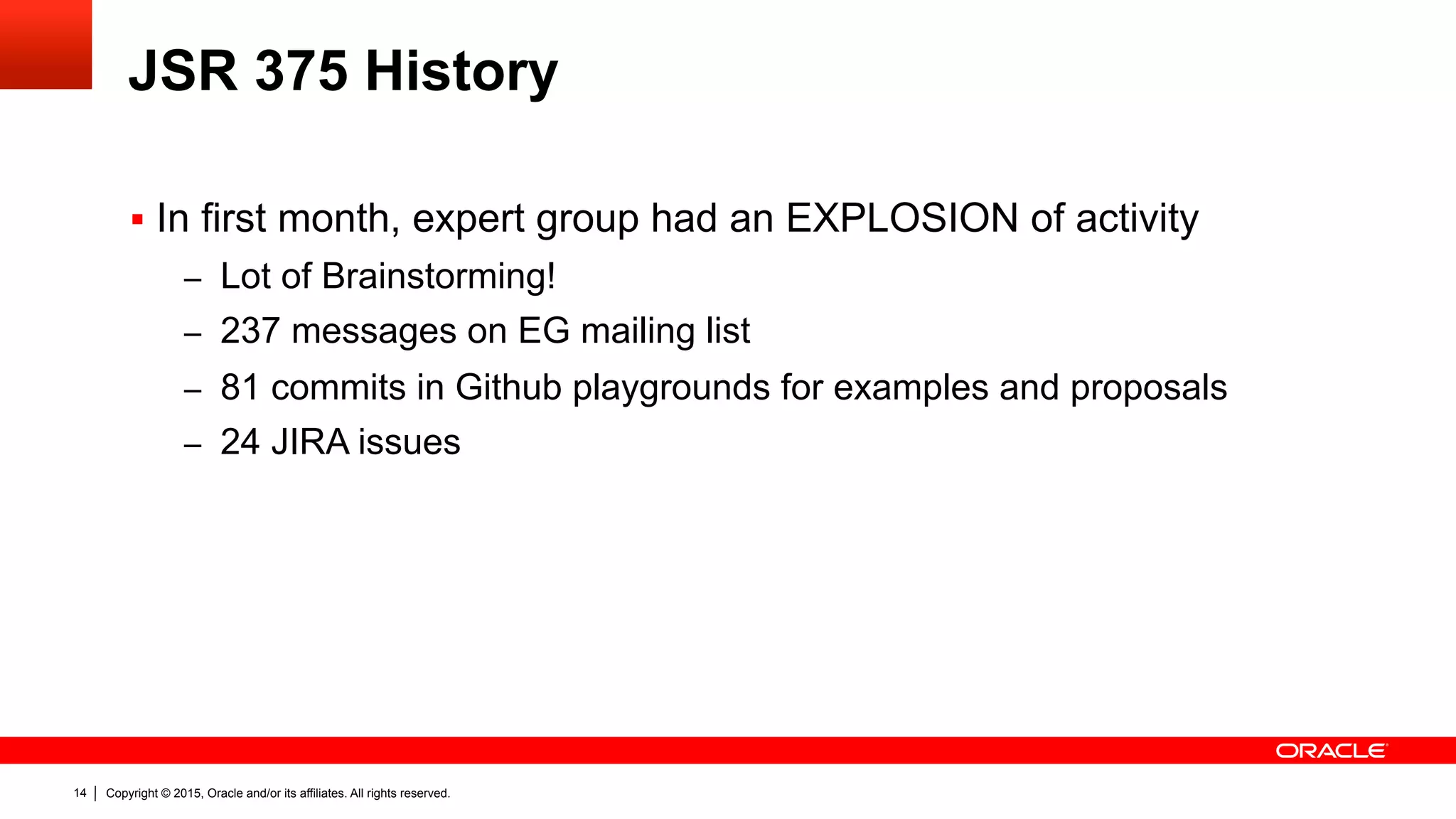
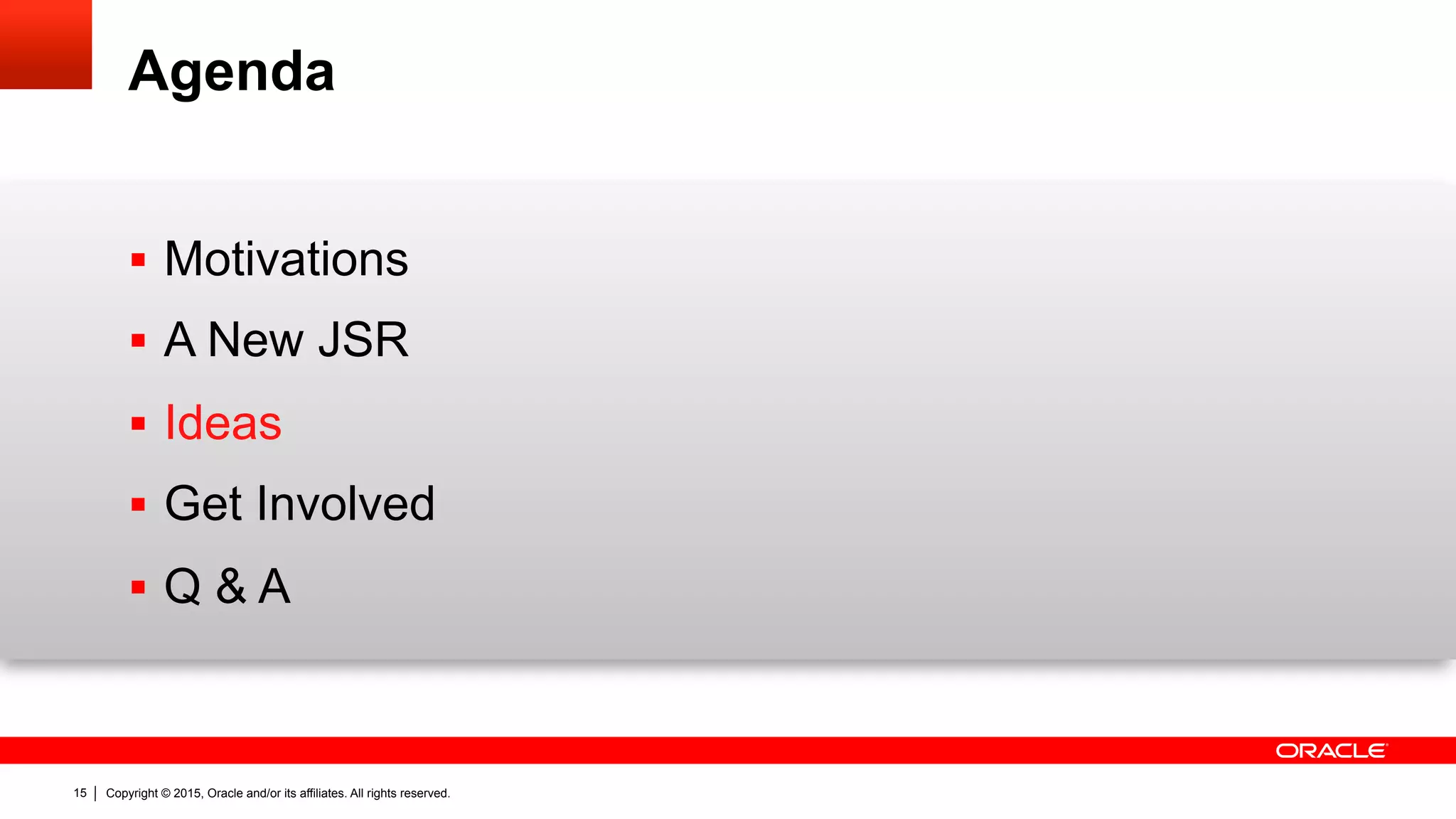
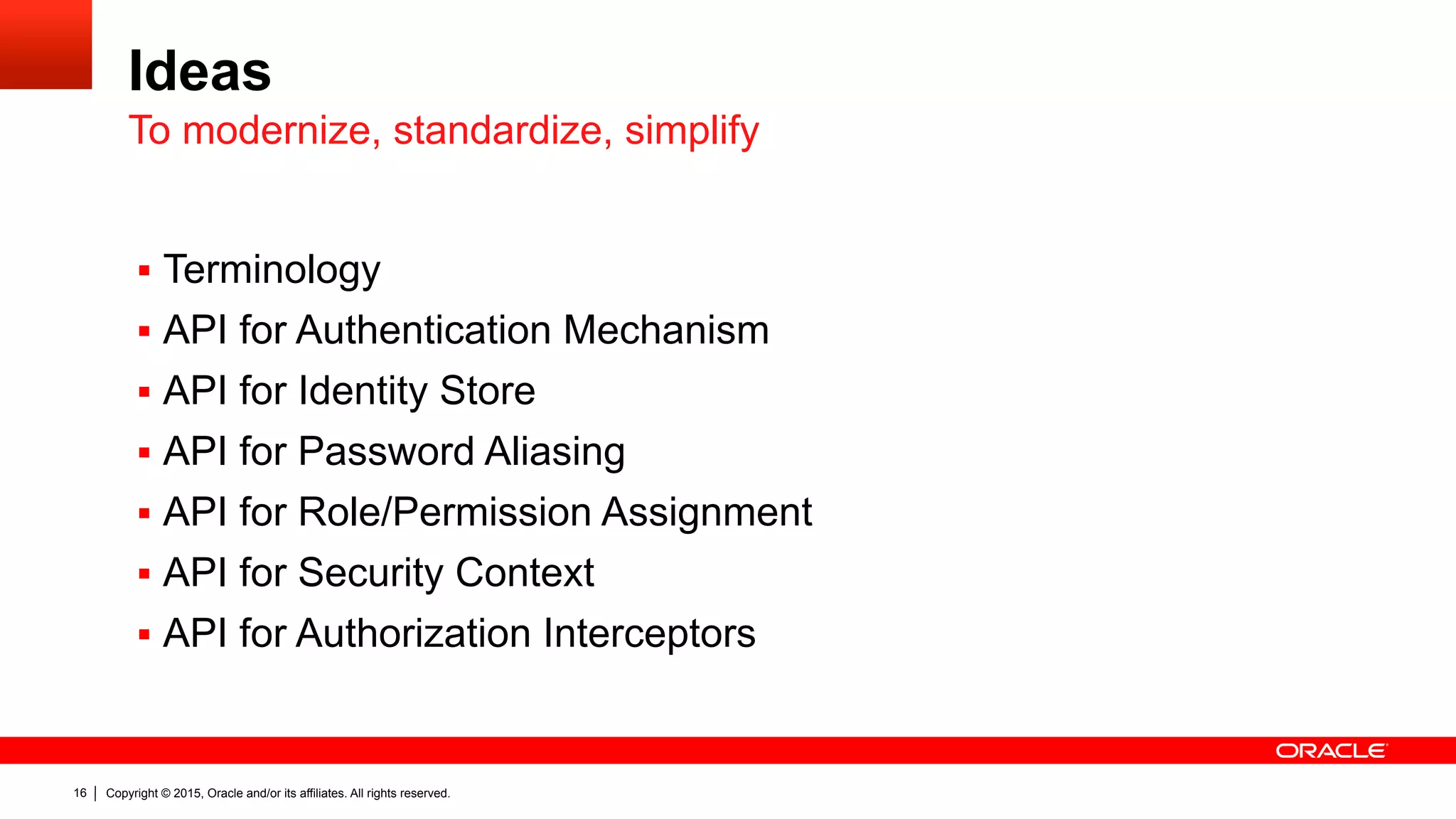

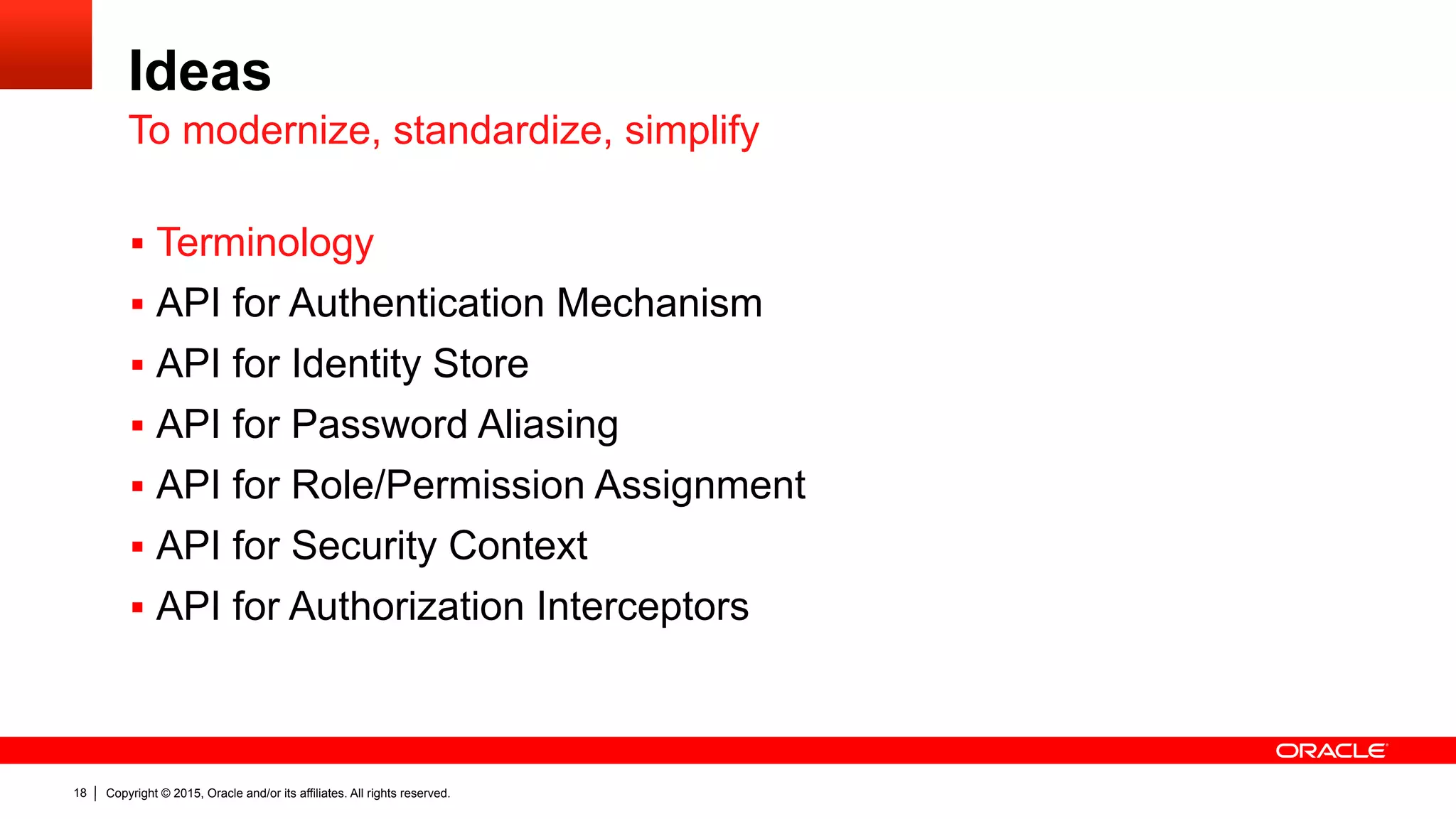
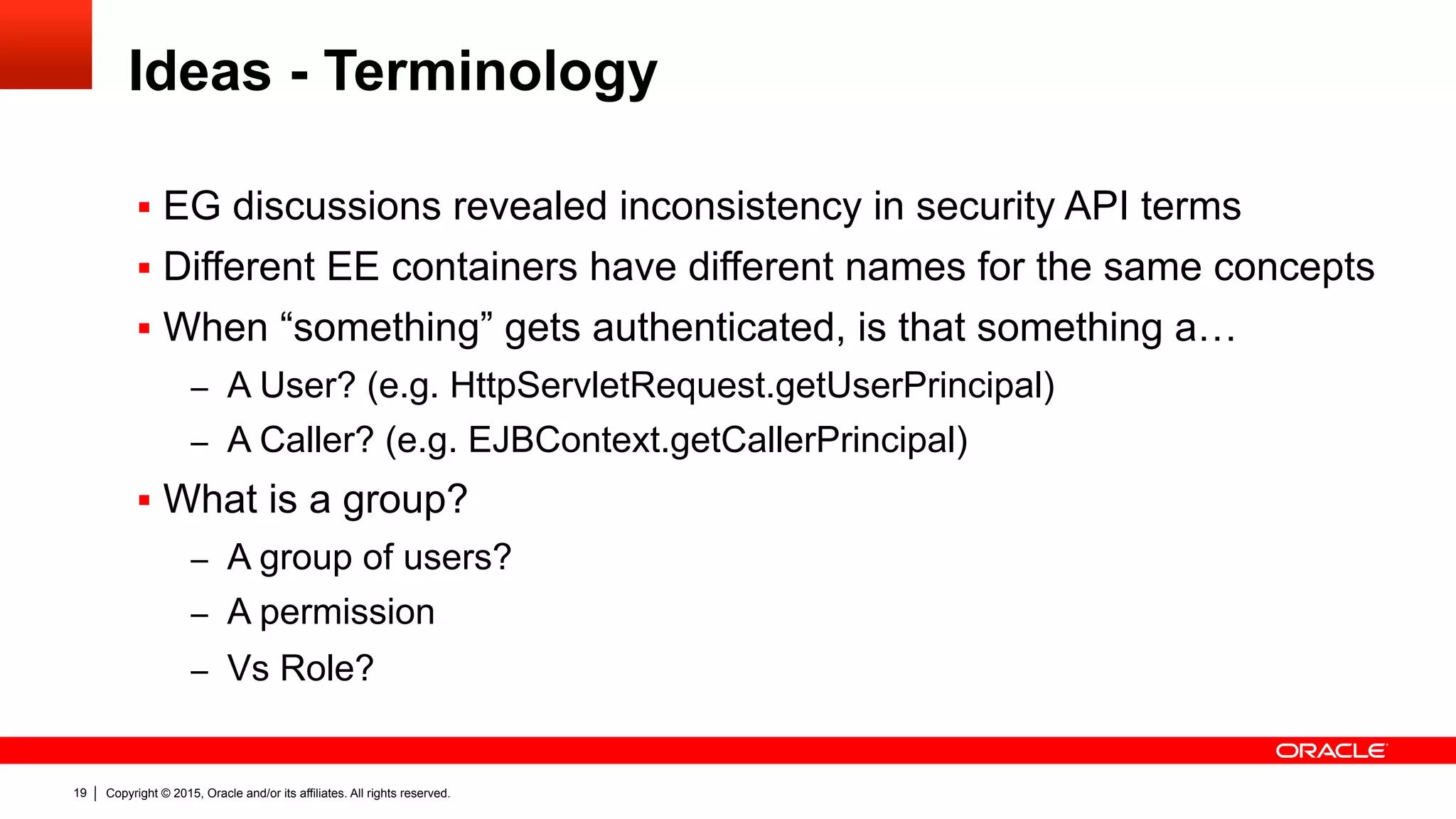
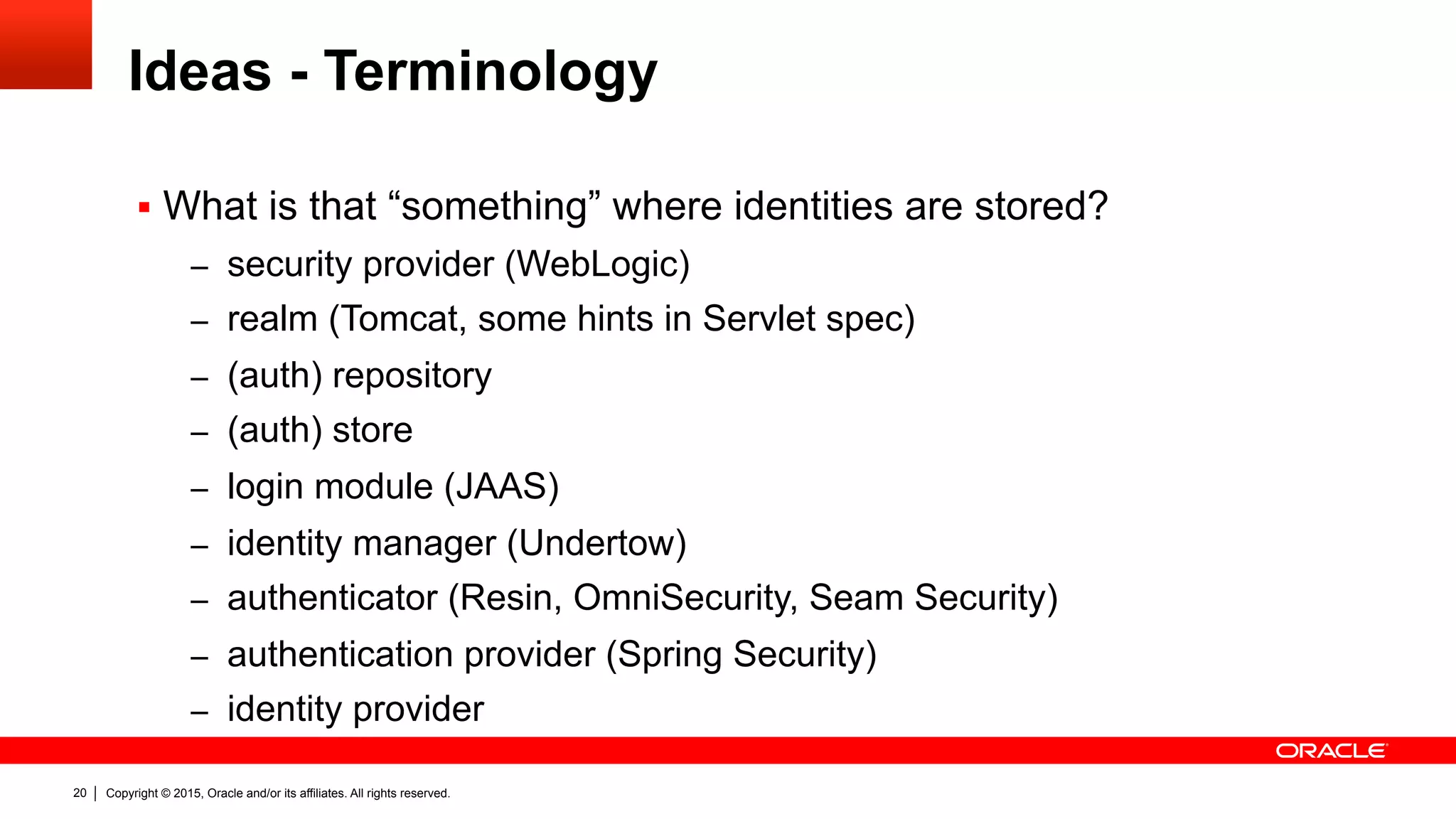
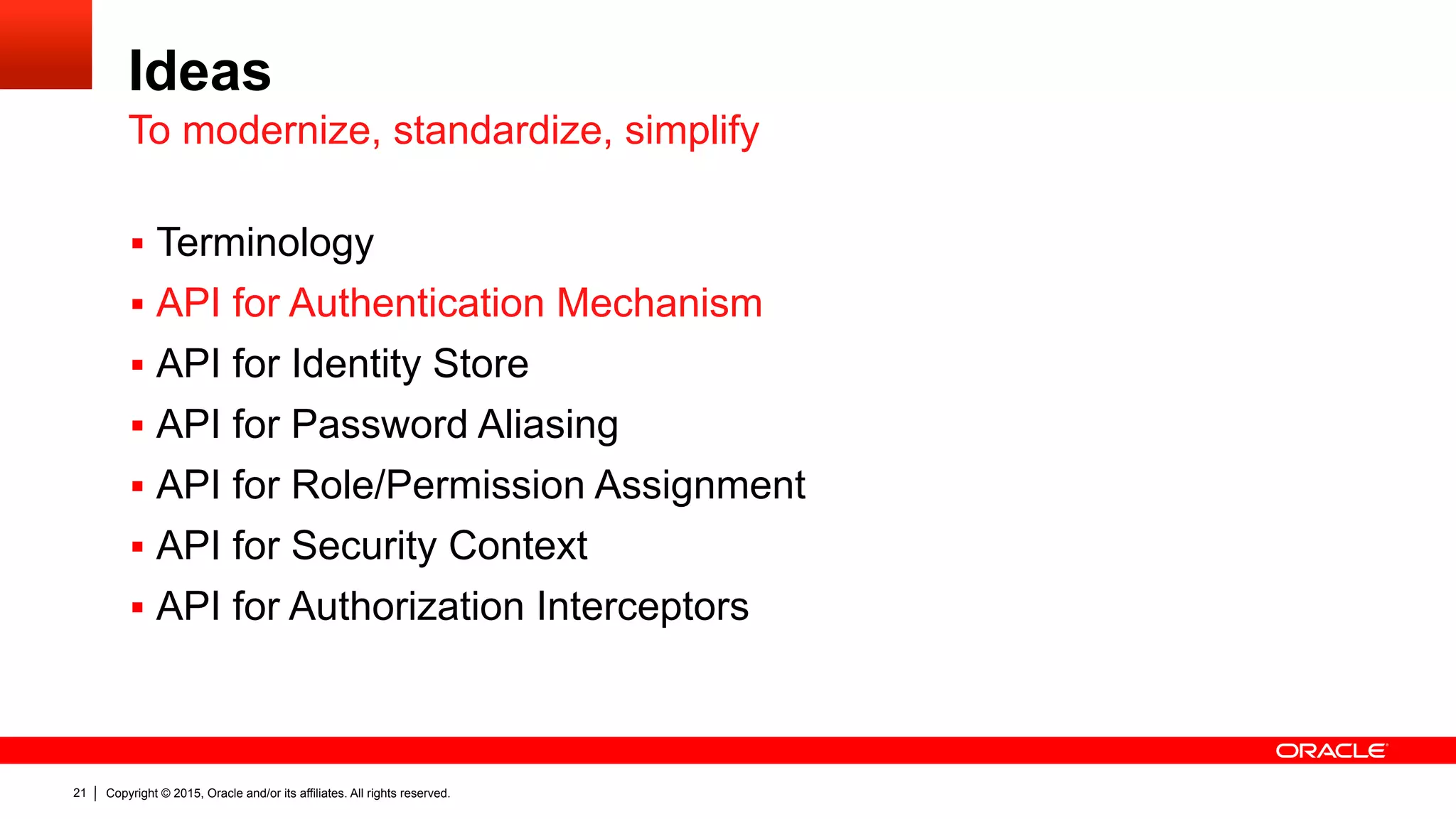
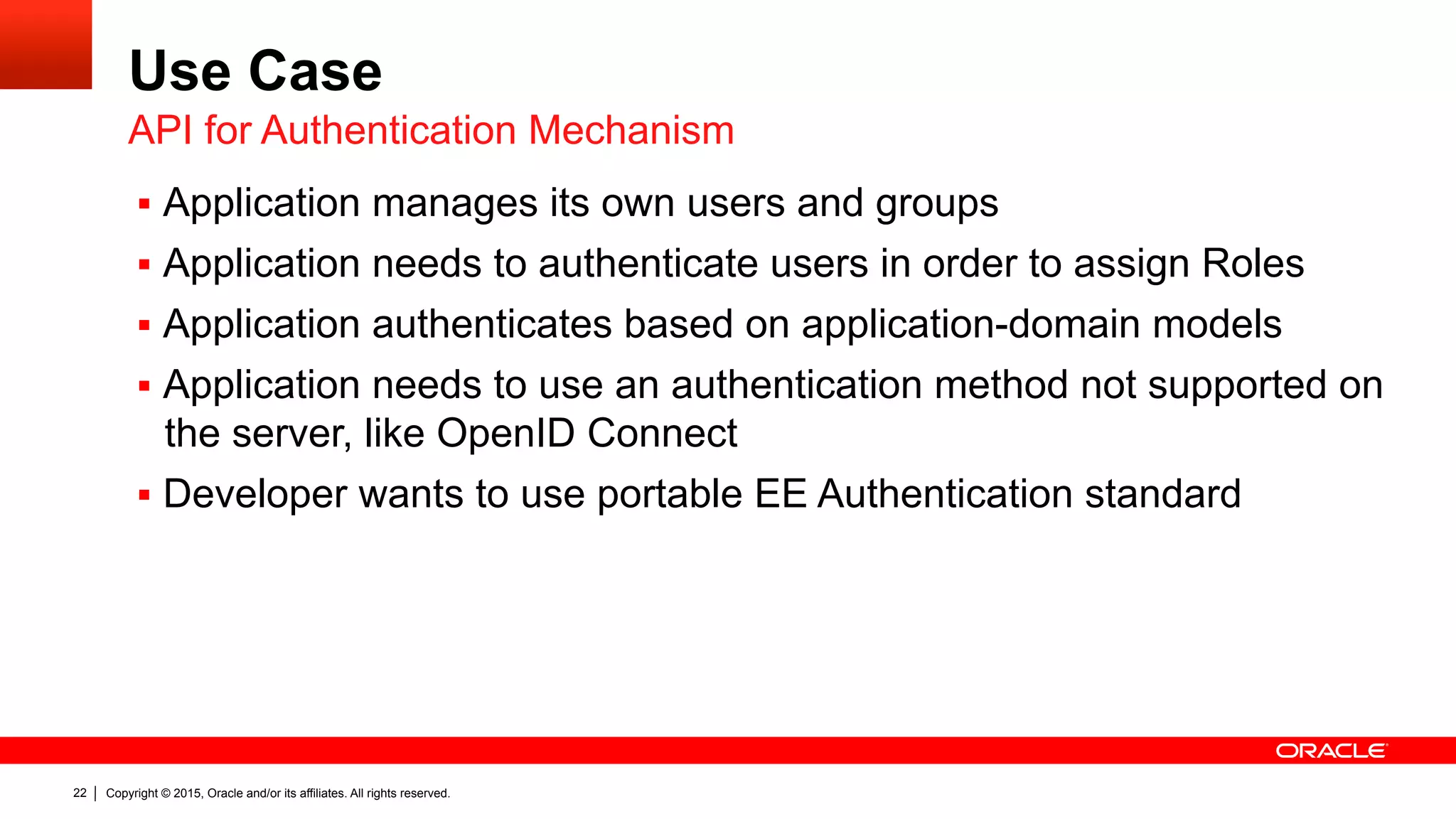
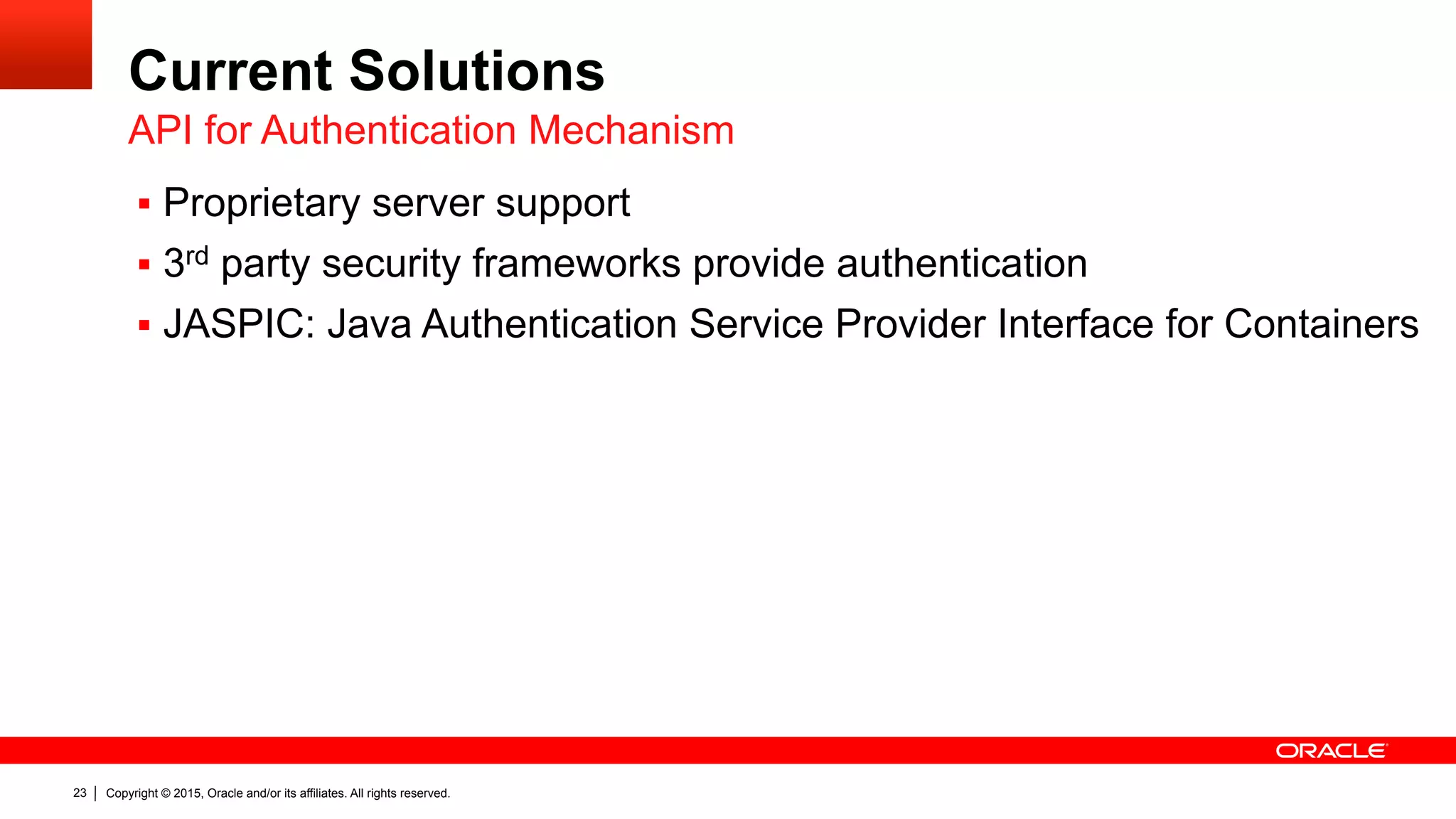
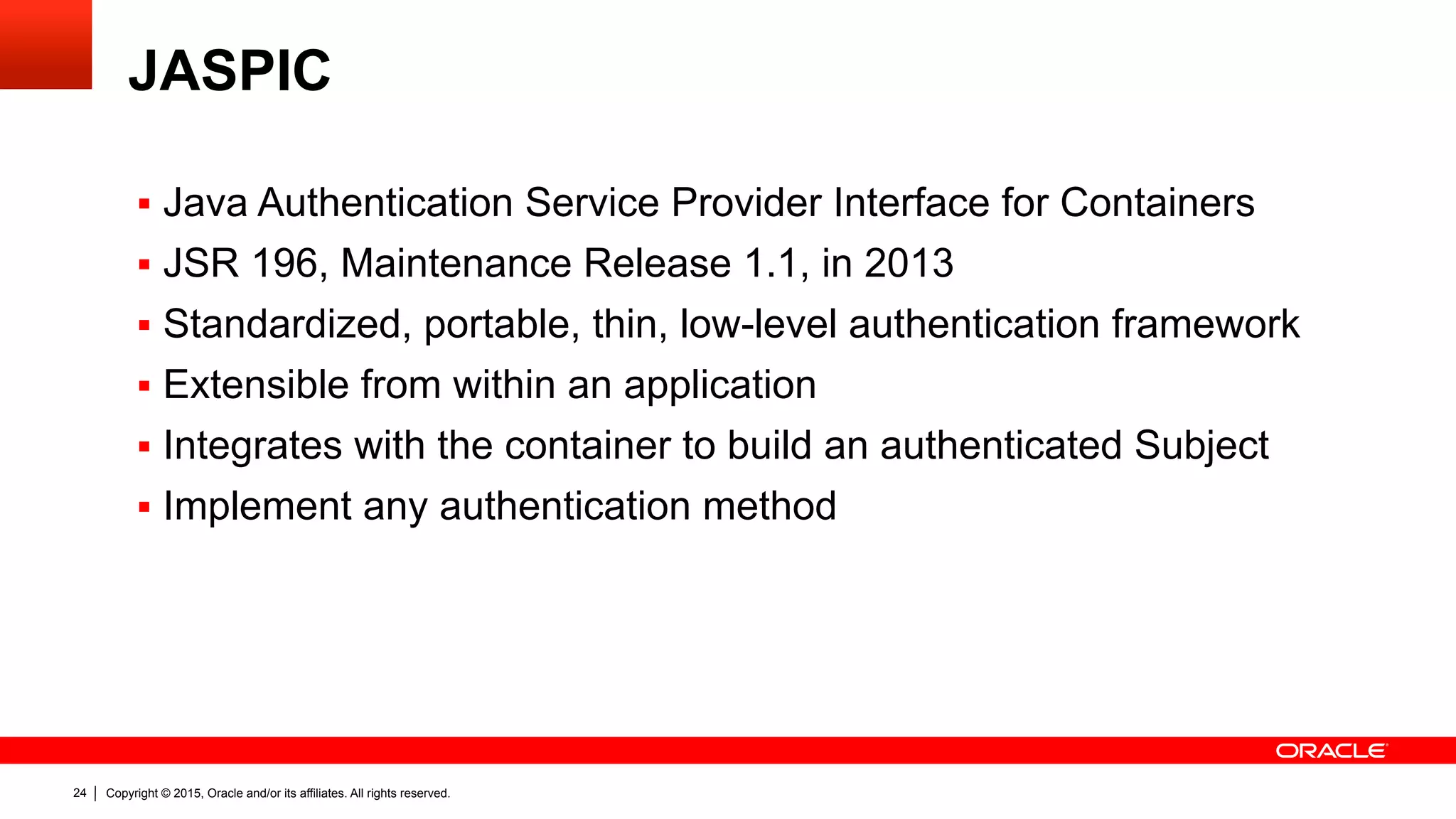
![Copyright © 2015, Oracle and/or its affiliates. All rights reserved.25
JASPIC Server Auth Module
public interface ServerAuthModule {
public void initialize(MessagePolicy requestPolicy,
MessagePolicy responsePolicy, CallbackHandler handler,
Map options) throws AuthException;
public AuthStatus validateRequest(MessageInfo messageInfo,
Subject clientSubject, Subject serviceSubject);
public Class<?>[] getSupportedMessageTypes();
public AuthStatus secureResponse(MessageInfo messageInfo,
Subject serviceSubject);
public void cleanSubject(MessageInfo messageInfo, Subject subject);
}](https://image.slidesharecdn.com/devoxxfr-ee8-jsr375-security-api-v1-150413135019-conversion-gate01/75/Finally-EE-Security-API-JSR-375-25-2048.jpg)
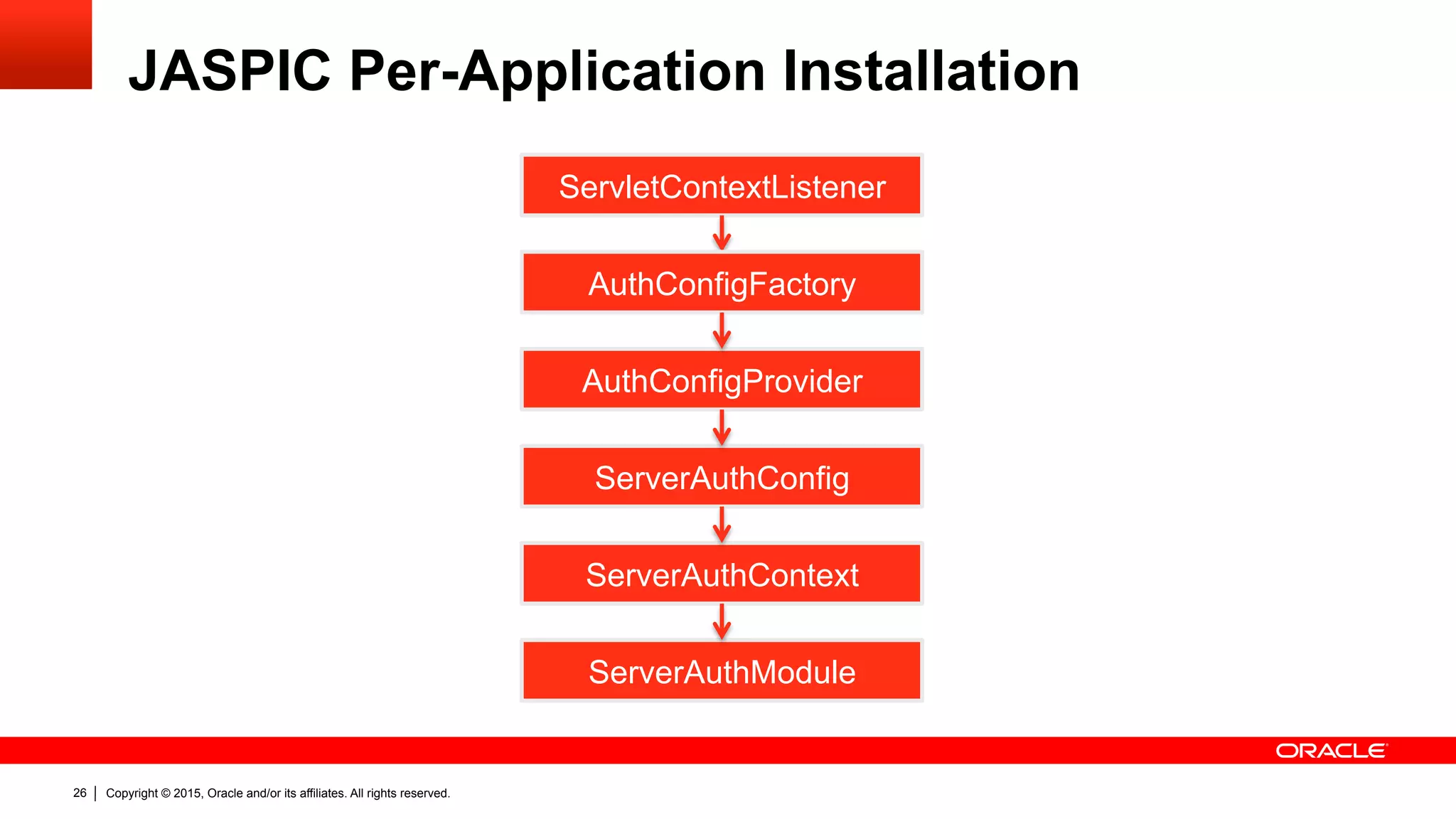
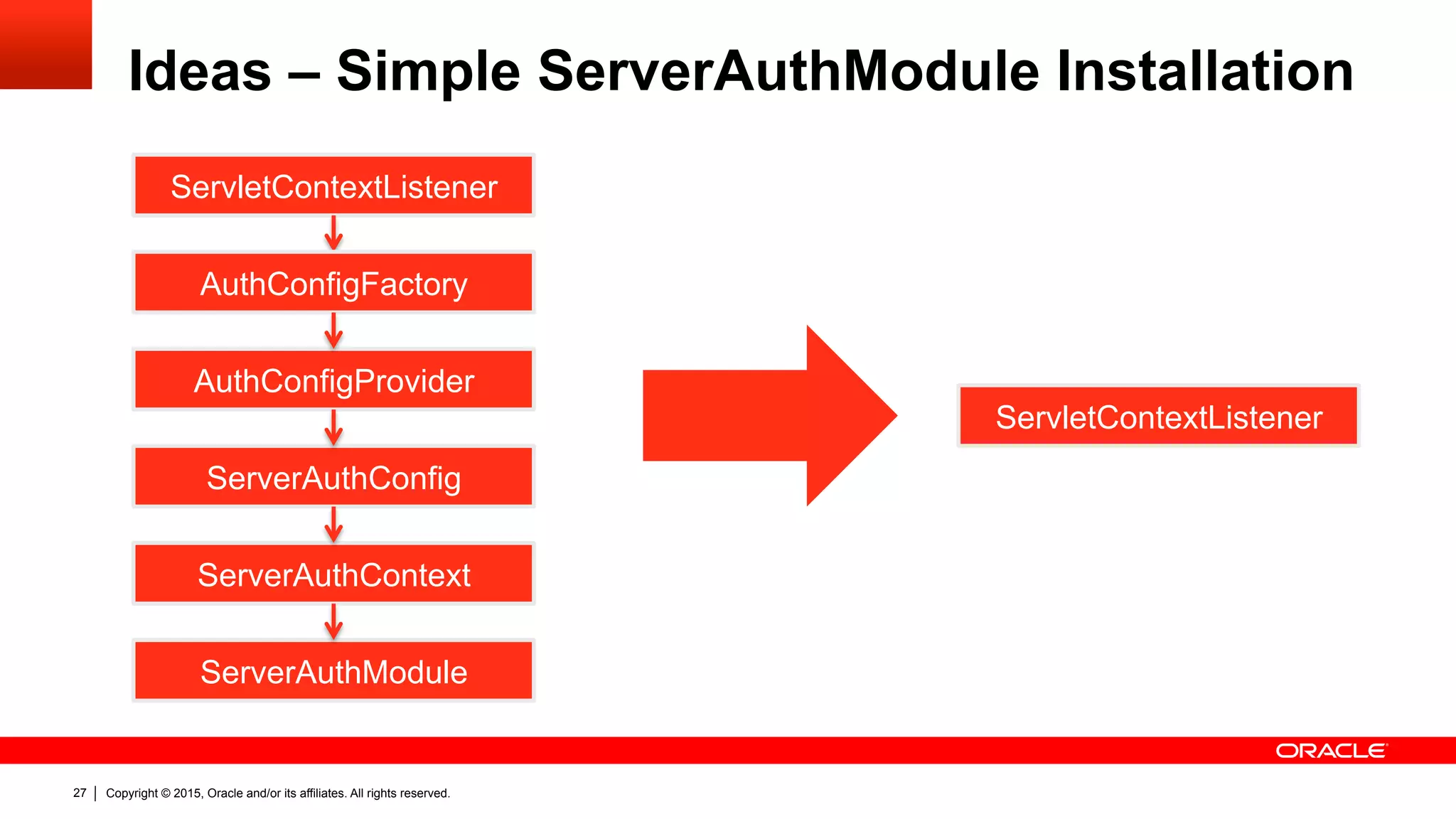

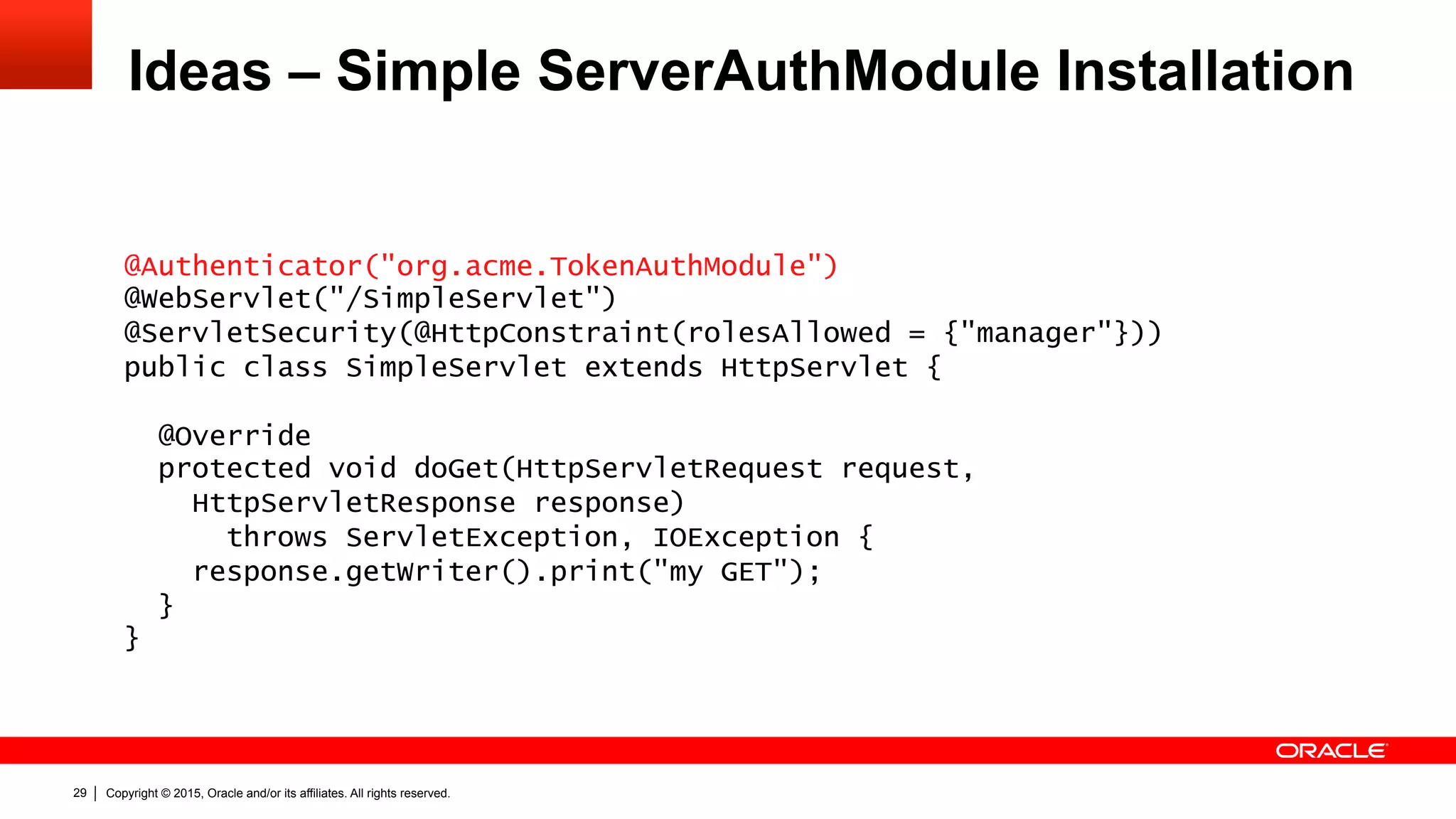
![Copyright © 2015, Oracle and/or its affiliates. All rights reserved.30
Ideas – Profile Specific Helper Classes
public class BasicServerAuthModule implements ServerAuthModule {
public void initialize(…) throws AuthException { … }
public Class<?>[] getSupportedMessageTypes() { … }
public AuthStatus secureResponse(MessageInfo messageInfo,
Subject serviceSubject) throws AuthException { … }
public void cleanSubject(MessageInfo messageInfo, Subject subject)
throws AuthException { … }
public AuthStatus validateRequest(MessageInfo messageInfo,
Subject clientSubject, Subject serviceSubject) throws AuthException {
final HttpServletRequest request =
(HttpServletRequest) messageInfo.getRequestMessage();
… }](https://image.slidesharecdn.com/devoxxfr-ee8-jsr375-security-api-v1-150413135019-conversion-gate01/75/Finally-EE-Security-API-JSR-375-30-2048.jpg)
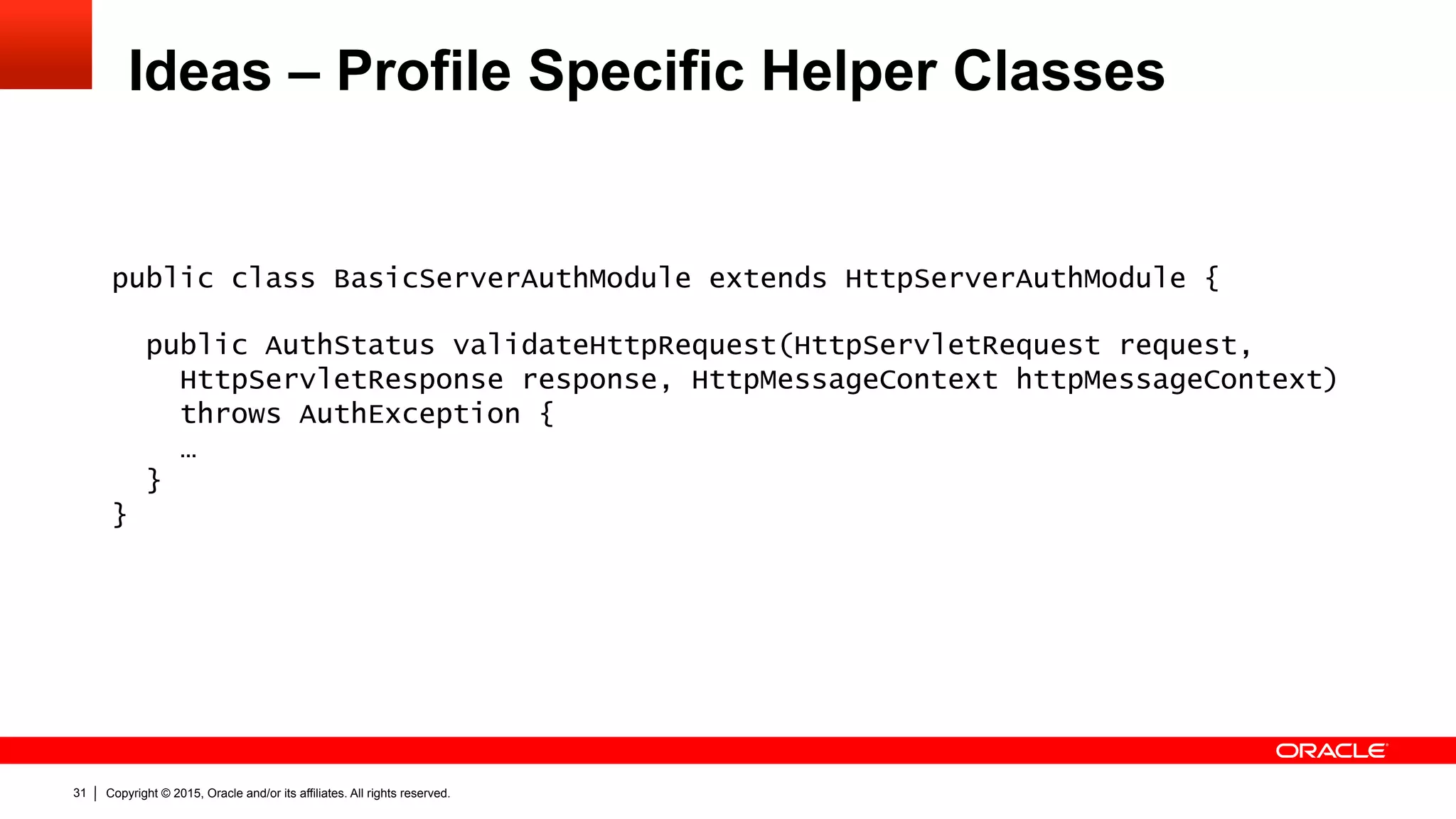
![Copyright © 2015, Oracle and/or its affiliates. All rights reserved.32
Ideas – Profile Specific Helper Classes
public class BasicServerAuthModule extends HttpServerAuthModule {
public AuthStatus validateHttpRequest(HttpServletRequest request,
HttpServletResponse response, HttpMessageContext httpMessageContext)
throws AuthException {
final String header = request.getHeader("Authorization");
final String[] credentials = parseCredentials(header);
final String username = credentials[0];
final String password = credentials[1];
if (!"snoopy".equals(username) || !"woodst0ck".equals(password)) {
return FAILURE;
} // No callbacks required!!!
return httpMessageContext.notifyContainerAboutLogin(
"snoopy",
// the groups/roles of the authenticated user
Arrays.asList("RedBaron", "JoeCool", "MansBestFriend"));
}](https://image.slidesharecdn.com/devoxxfr-ee8-jsr375-security-api-v1-150413135019-conversion-gate01/75/Finally-EE-Security-API-JSR-375-32-2048.jpg)
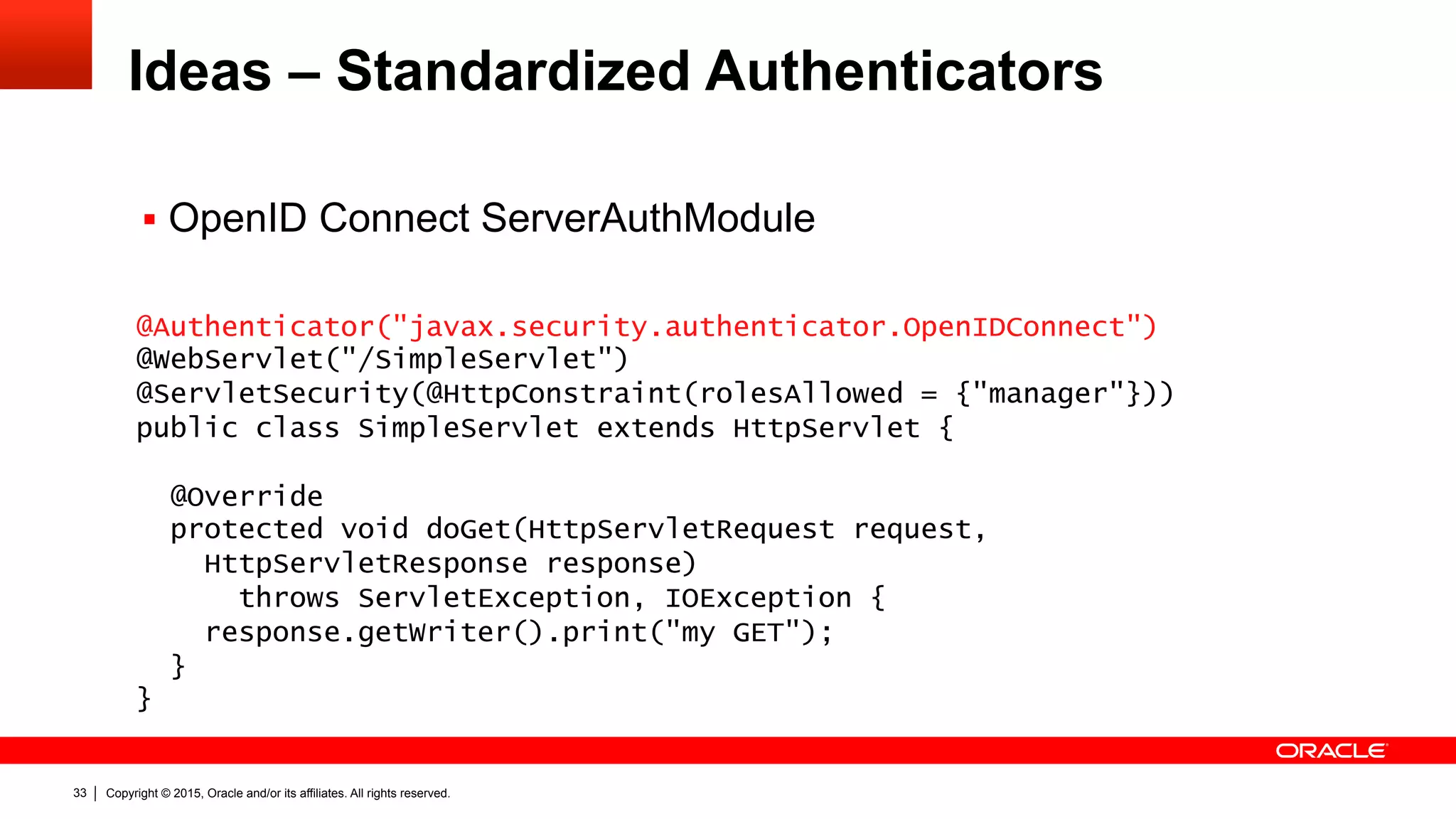
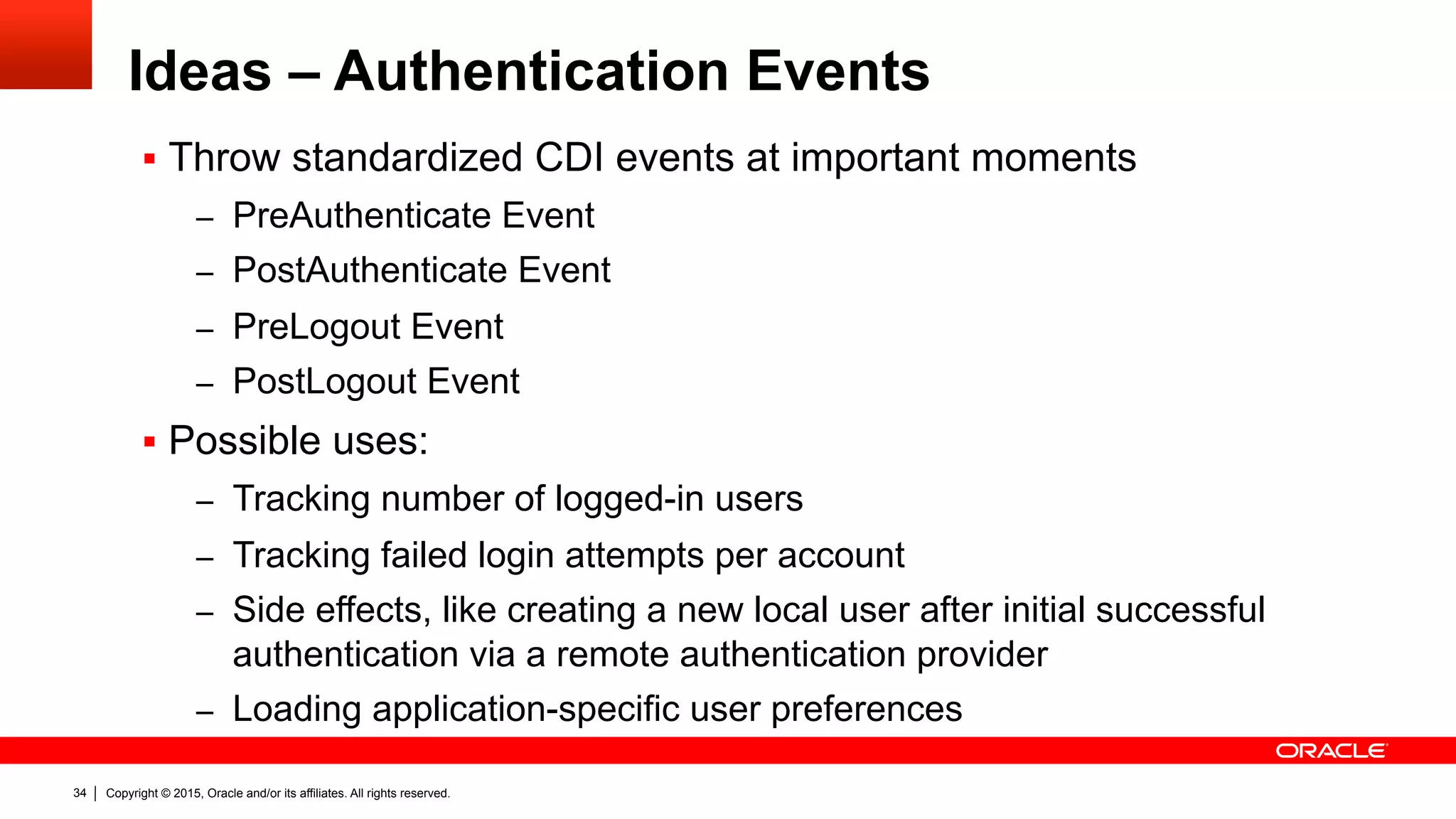
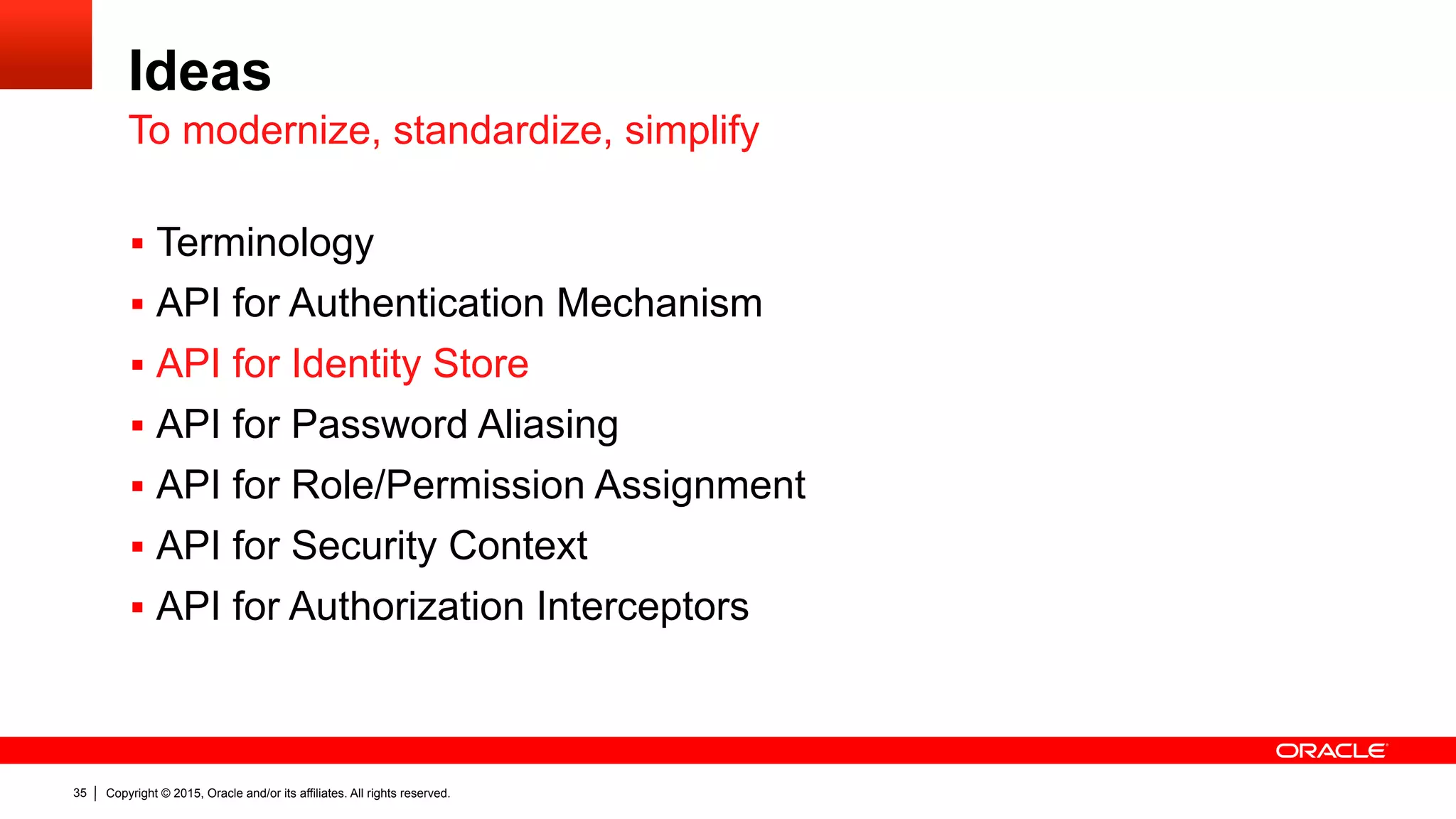
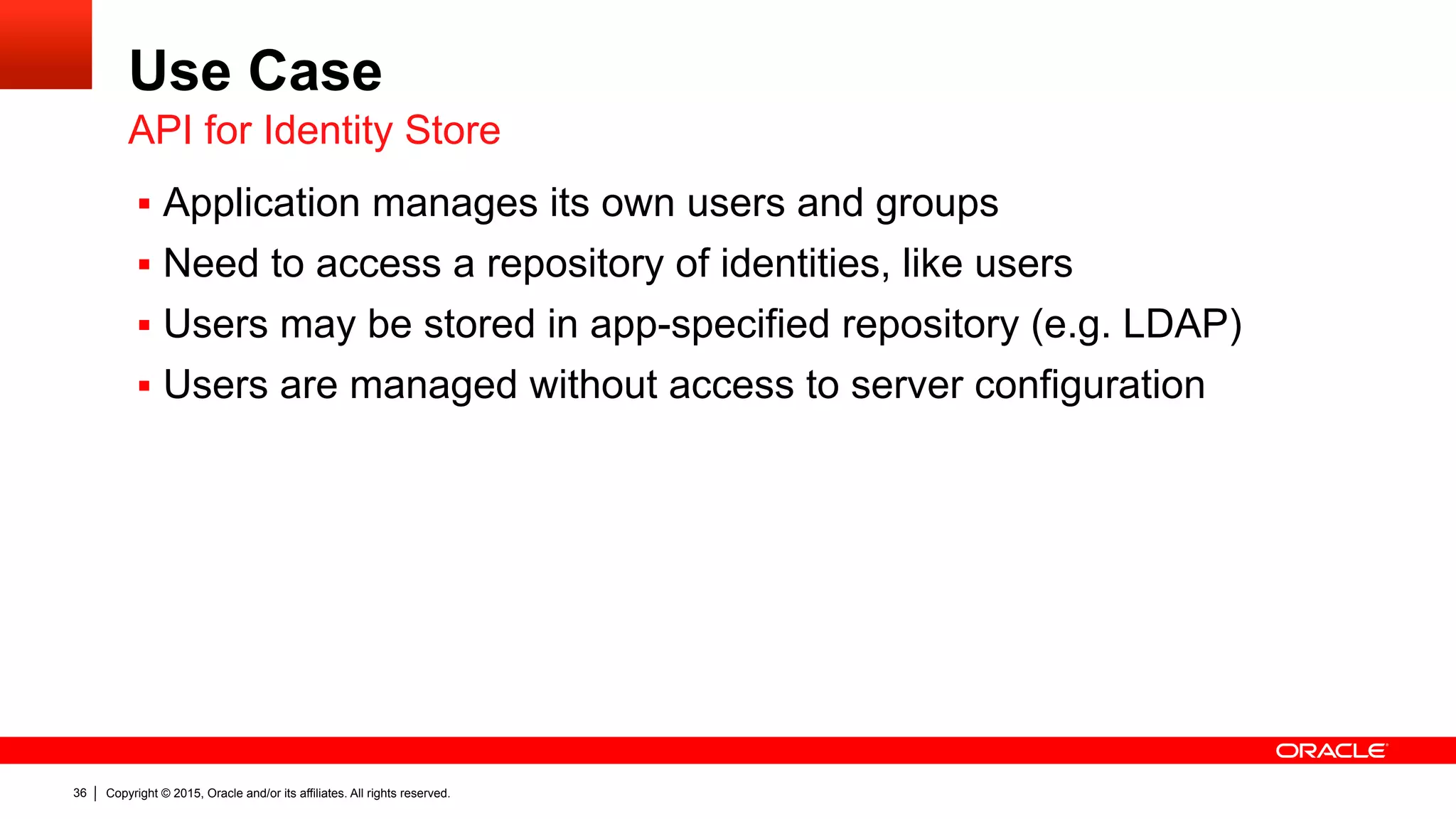
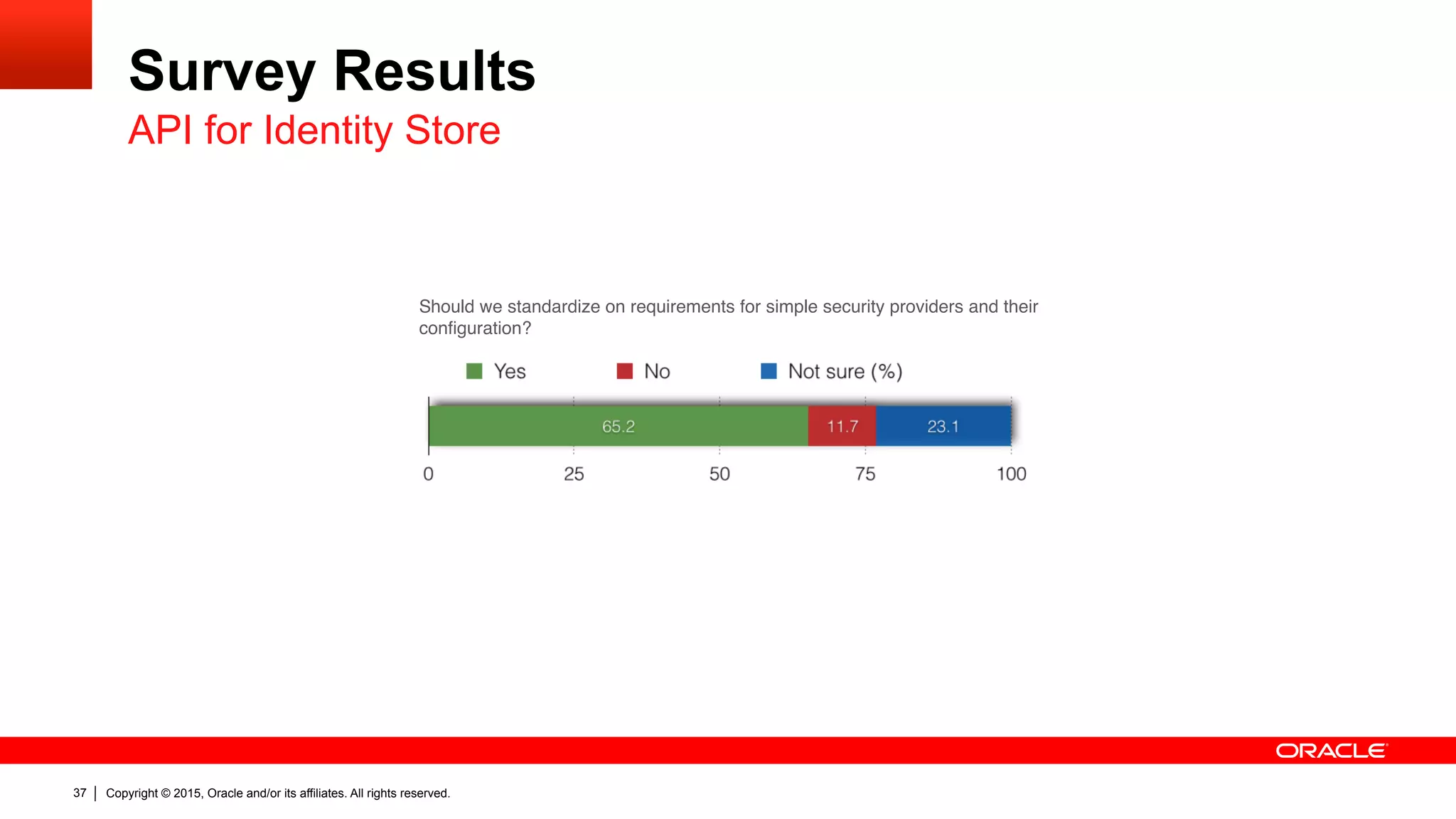
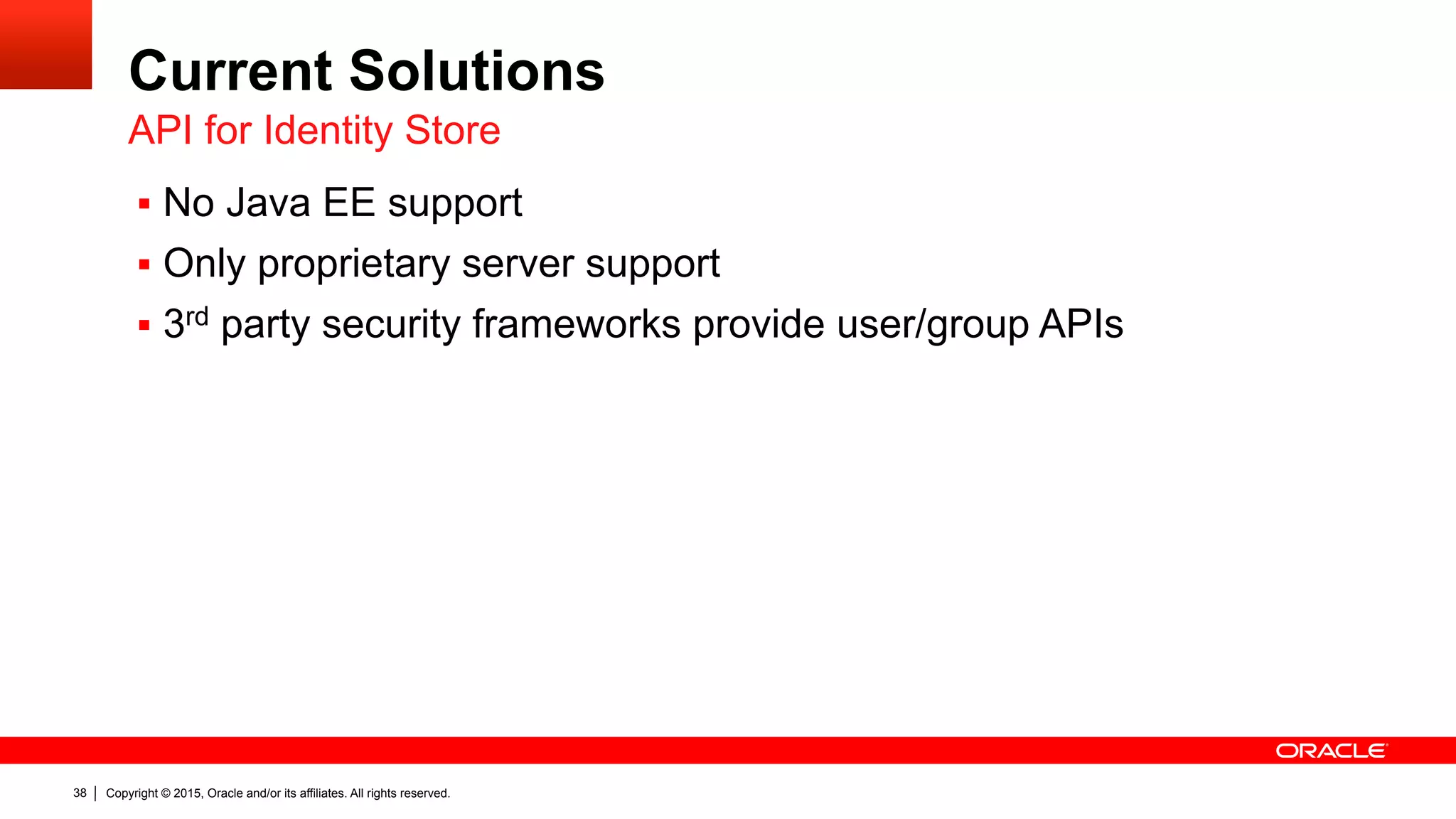
![Copyright © 2015, Oracle and/or its affiliates. All rights reserved.39
Ideas – Identity Store
public interface Identity {
String getUsername();
char[] getPassword();
boolean isAccountExpired();
boolean isAccountLocked();
boolean isPasswordExpired();
boolean isEnabled();
IdentityAttributeValue getAttribute(String name);
}
public interface IdentityAttributeValue {
String getValue();
String getMetaInfo(String name);
}](https://image.slidesharecdn.com/devoxxfr-ee8-jsr375-security-api-v1-150413135019-conversion-gate01/75/Finally-EE-Security-API-JSR-375-39-2048.jpg)
![Copyright © 2015, Oracle and/or its affiliates. All rights reserved.40
Ideas – Identity Store
public interface IdentityStore{
Identity loadIdentityByName(String name);
void changePassword(char[] oldPassword, char[] newPassword);
void createIdentity(Identity user);
void deleteIdentity(String name);
void updateIdentity(Identity identity);
boolean identityExists(String name);
void createGroup(String group);
void deleteGroup(String group);
void addIdentityToGroup(String name, String group);
void removeIdentityFromGroup(String name, String group);
boolean isIdentityInGroup(String name, String group);
List<String> getIdentityGroups(String name);
}](https://image.slidesharecdn.com/devoxxfr-ee8-jsr375-security-api-v1-150413135019-conversion-gate01/75/Finally-EE-Security-API-JSR-375-40-2048.jpg)
